World War II brought thousands of workers to Norfolk, where nearly 100 ships and landing craft were built. The population almost doubled between 1940 and 1944. Furniture manufacturing, fertilizer plants, and other industries also expanded during that time. Individual residences and apartment buildings rapidly developed during the war, and the city struggled to cope with overcrowding.
Norfolk began annexing neighboring counties after World War II. Public housing was constructed after the slums were cleared. The city also rebuilt hundreds of acres in the downtown. The SCOPE Convention and Cultural Center largely spurred this redevelopment. The Chrysler Museum and Chrysler Hall were named after automobile mogul Walter P. Chrysler, who donated his extensive art collection to the city.
#1 Untitled photo, possibly related to: Housing. Norfolk, Virginia, 1941
#2 Trailer camp for construction workers. Ocean View, outskirts of Norfolk, Virginia, 1941
#3 Defense workers in front of rooming houses. Norfolk, Virginia, 1941
#4 House occupied by defense worker and family. They came from North Carolina farm. Rent ten dollars per month. Norfolk, Virginia, 1941
#5 Bar in Norfolk, Virginia, 1941
#6 West main street, Norfolk, 1941
#7 Doumar’s Restaurant Norfolk with Cars, 1940
#8 House in a slum district of Norfolk, Virginia, 1941
#9 Trailer camp for construction workers. Ocean View, outskirts of Norfolk, 1941
#10 Four o’clock traffic. Norfolk, Virginia, 1941
#11 Four o’clock traffic, Norfolk, Virginia, 1941
#12 Norfolk, Virginia, 1941
#13 Four o’clock traffic, Norfolk, 1941
#14 Defense housing, Norfolk, Virginia, 1941
#15 Defense housing in Merrimack Park, Norfolk, Virginia, 1941
#16 Cars waiting for the nine o’clock ferry to Norfolk, at Cape Charles, Virginia, 1941
#17 Second Presbyterian Church Freemason Abbey Norfolk, 1943
#18 Fire Station No. 4 Norfolk VA, 1944
#19 Four o’clock traffic, Norfolk, Virginia, 1941
#20 Trailer camp for defense workers. Ocean View, Virginia. Outskirts of Norfolk, 1941
#21 Norfolk, Virginia, 1941
#22 Two-family unit in Merrimac Villiage. A defense housing project of the Norfolk housing authority, 1941
#23 Trucks waiting at Cape Charles, Virginia for ferry to Norfolk, Virginia, 1940
#24 Fire Station No.2 Bute Street Norfolk VA, 1947
#25 Harrison Fishing Pier, 1947
#26 Navy YMCA Beach Club Ocean View, 1944
#27 Roxy / The Hub Abbott Costello Granby Street, 1944
#28 VJ Celebration Granby St. Norfolk, Aug. 15 1945
#29 August ‘Cap Coleman’ Tattoo Parlor (exterior), 1944
#30 Shipbuilding (Norfolk Navy Yard).
#31 Shipbuilding (Norfolk Navy Yard). Sandwiches, smokes and soft drinks are available to workers at a number of canteens on the grounds. There are also several cafeterias serving hot meals, 1941
#32 Boy from Maryland in charity ward, Saint Vincent’s Hospital, Norfolk, 1941
#33 Backed up sewer in Negro slum district. Norfolk, 1941
#34 Iceman. Norfolk, Virginia, 1941
#35 FHA (Federal Housing Administration)-insured small home development in Norfolk, 1941
#36 Low-cost home near Norfolk air base being purchased through facilities of the Federal Housing Administration (FHA), 1941
#37 Large-scale rental housing project privately financed through the Federal Housing Administration (FHA) in Norfolk, 1941
#38 Sears Esso Freemason Monticello, 1940
#39 Ocean View Train Station, 1943
#40 Memrose Theatre Colley Avenue Norfolk, 1944
#41 Ocean View Ocean View After Flood Sand on RoadAfter Flood, 1944
#42 Clydesdales Horses Budweiser, 1944
#43 Nansemond Hotel Ocean View, 1940s
#44 Trailer camp for construction workers. Ocean View, outskirts of Norfolk, Virginia, 1941
#45 Charity ward. Saint Vincent’s Hospital. Norfolk, 1941
#46 Untitled photo, possibly related to: Backed up sewer in Negro slum district. Norfolk, Virginia, 1941
#47 Houses in Negro slum district. Norfolk, Virginia, 1941
#48 Kitchen in house which rents for sixteen dollars per month. Slum district. Norfolk, Virginia, 1941
#49 Untitled photo, possibly related to: Houses occupied by defense workers. Norfolk, Virginia, 1941
#50 Schoolchildren getting ready to go home. Norfolk, Virginia, 1941
#51 First grade, public school. Norfolk, Virginia, 1941
#52 Cloakroom, public school. Norfolk, Virginia, 1941
#53 Negro slum district. Norfolk, Virginia, 1941
#54 House in Negro slum district. Norfolk, Virginia, 1941
#55 Tatooing shop on West Main Street. Norfolk, Virginia, 1941
#56 West Main Street, Norfolk, Virginia, 1941
#57 West main street. Norfolk, Virginia, 1941
#58 Housing. Norfolk, Virginia, 1941
#59 Defense workers in front of rooming houses, Norfolk, Virginia, 1941
#60 Charity ward, Saint Vincent’s Hospital, Norfolk, Virginia, 1941
#61 Housing. Norfolk, Virginia, 1941
#62 Defense worker living in slum district. Norfolk, Virginia, 1941
#63 Kitchen in house which rents for sixteen dollars per month in a slum district, Norfolk, Virginia, 1941
#64 Sons of defense contruction workers living in trailer camp. Ocean View, outskirts of Norfolk, Virginia, 1941
#65 Cloak room, public school. Norfolk, Virginia, 1941
#66 Untitled photo, possibly related to: Backed up sewer in a slum district, Norfolk, Virginia, 1941
#67 West main street, Norfolk, 1941
#68 Housing in Norfolk, 1941
#69 Housing in Norfolk, Virginia, 1941
#70 Four o’clock traffic, Norfolk, 1941
#71 Four o’clock traffic. Norfolk, 1941
#72 Defense housing. Merrimack Park, Norfolk, Virginia.
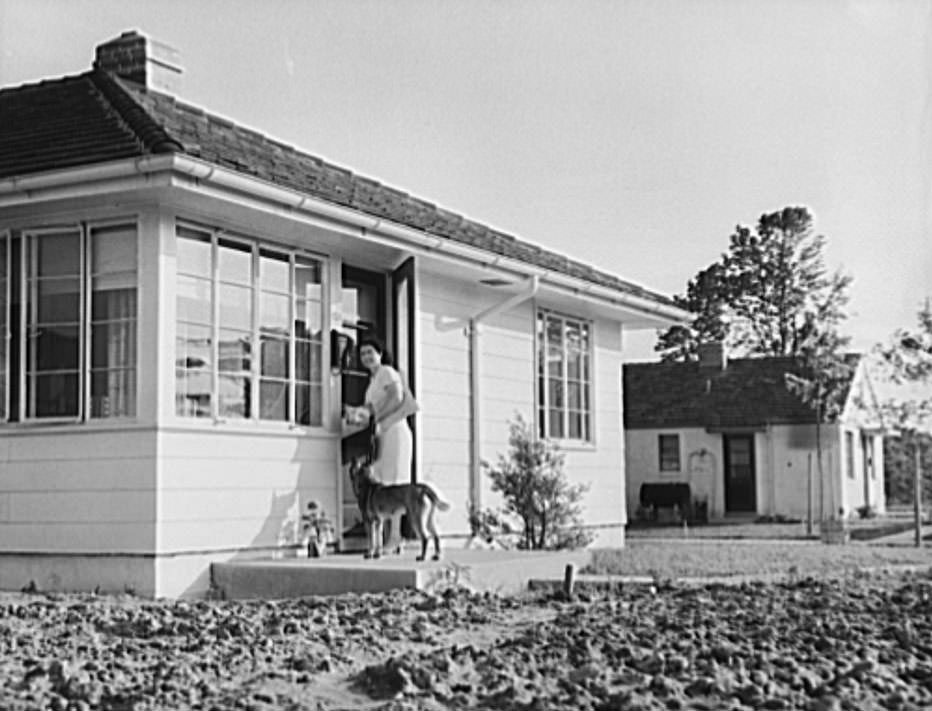
This project to house married enlisted personnel of the Norfolk naval base has 500 units which include single-story detached dwellings, two family houses, two-story group houses and apartments. Built at a cost of $1,980,000 by the USHA (U.S. Housing Authority), the project was opened for occupancy on July 1, 1941. Rentals are divided into four groups which run from a low 13-15 dollars to a high of 30-33 dollars


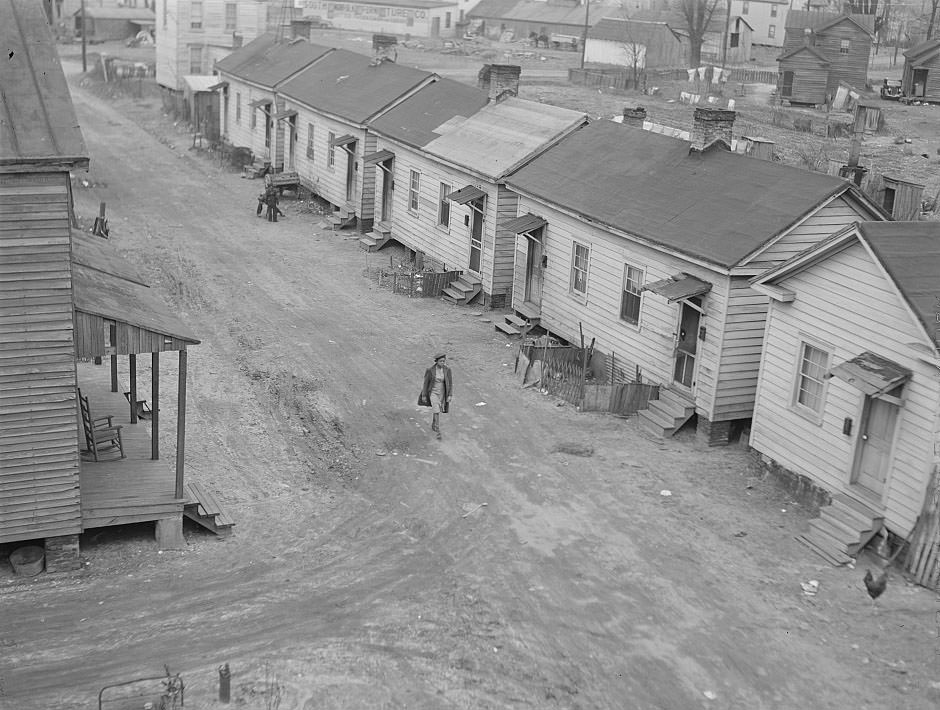
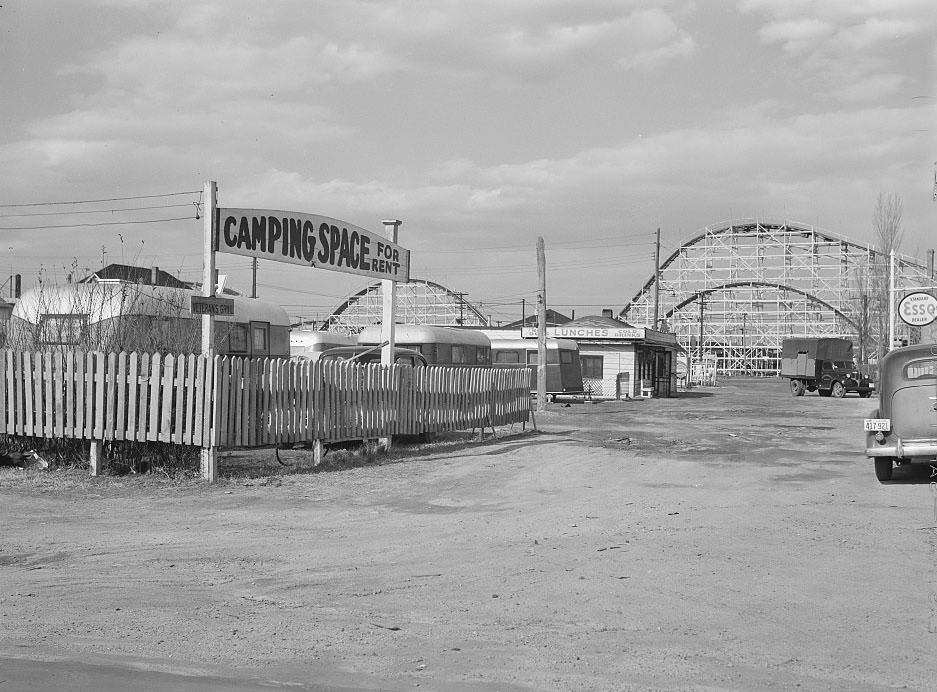
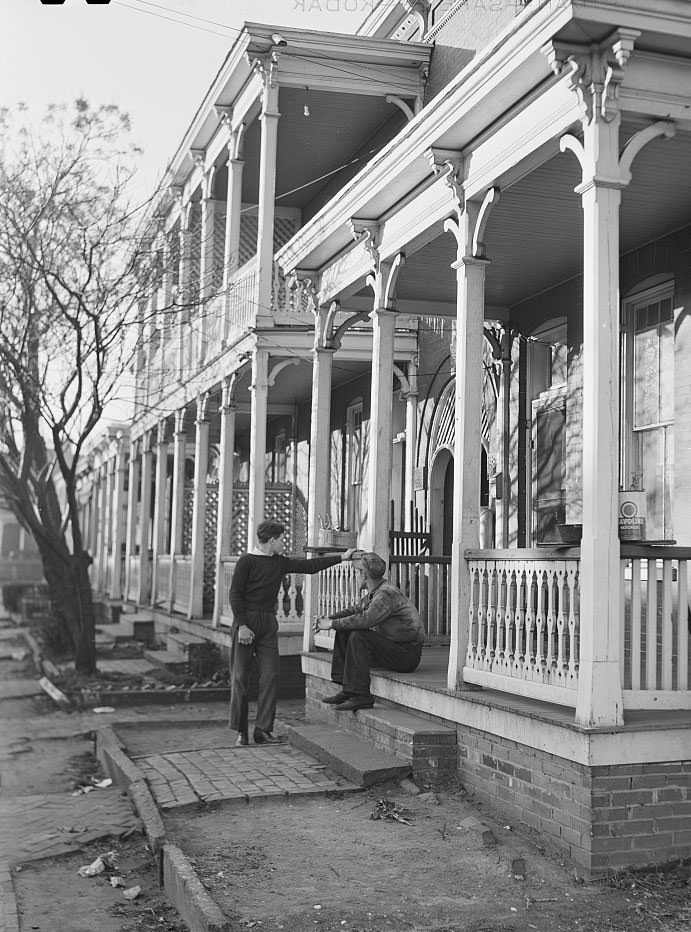
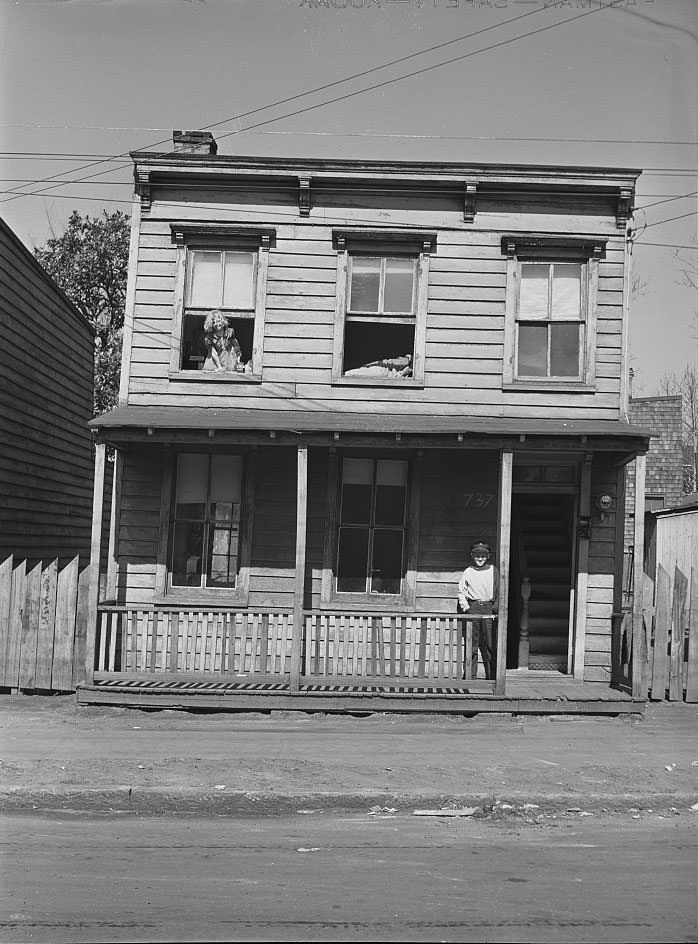
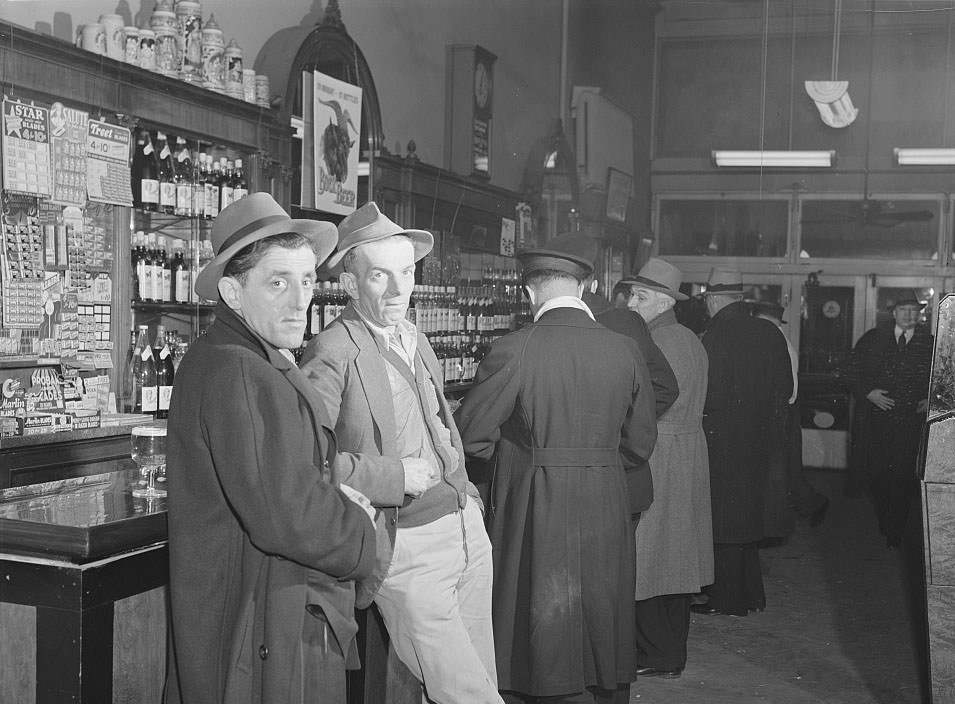
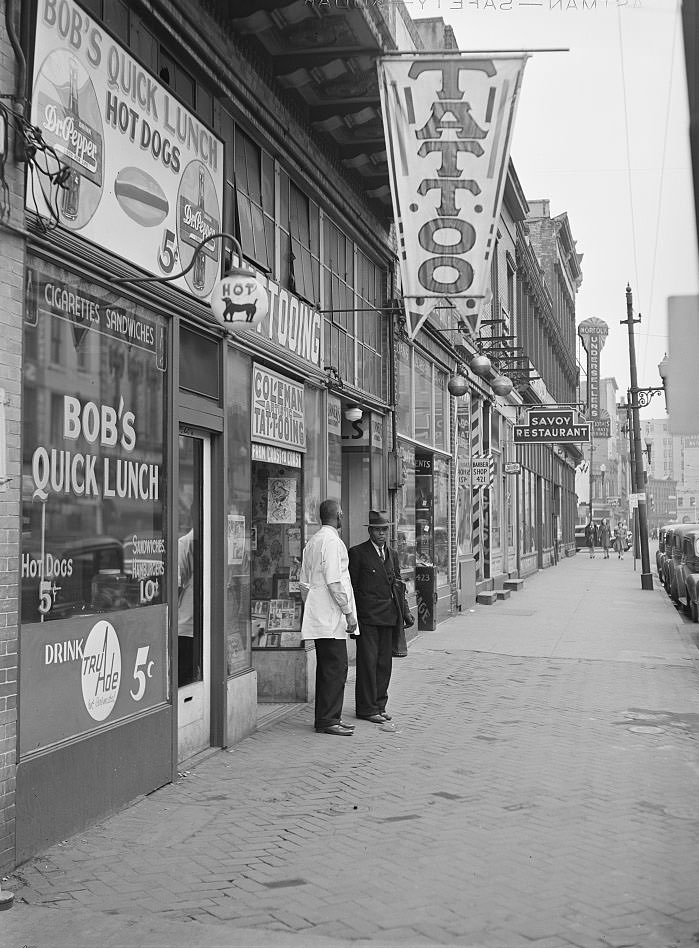
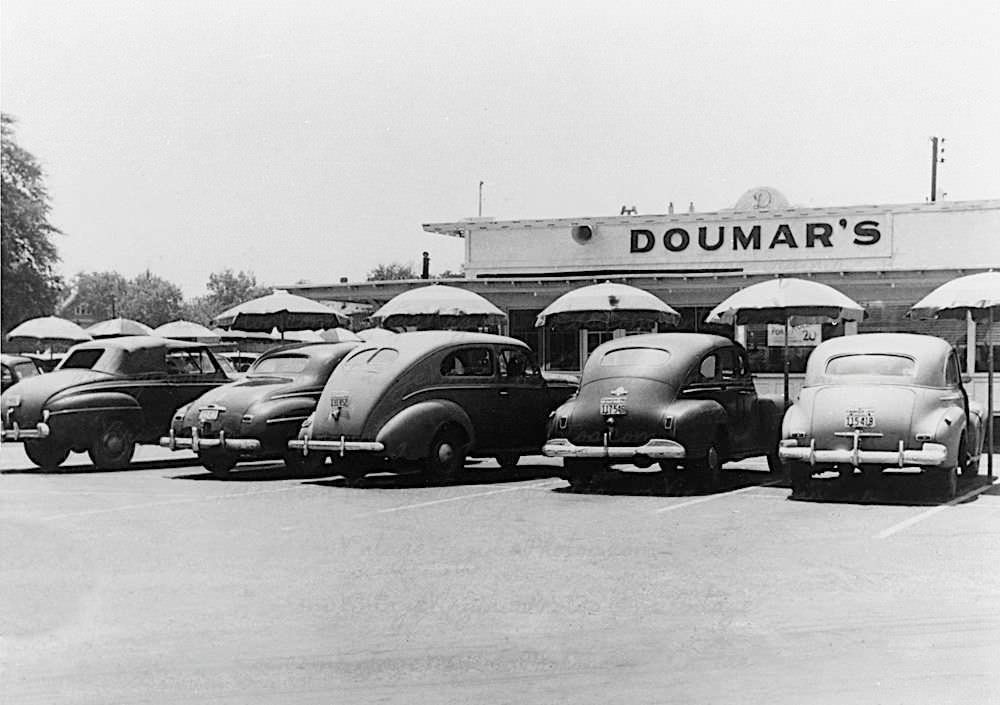
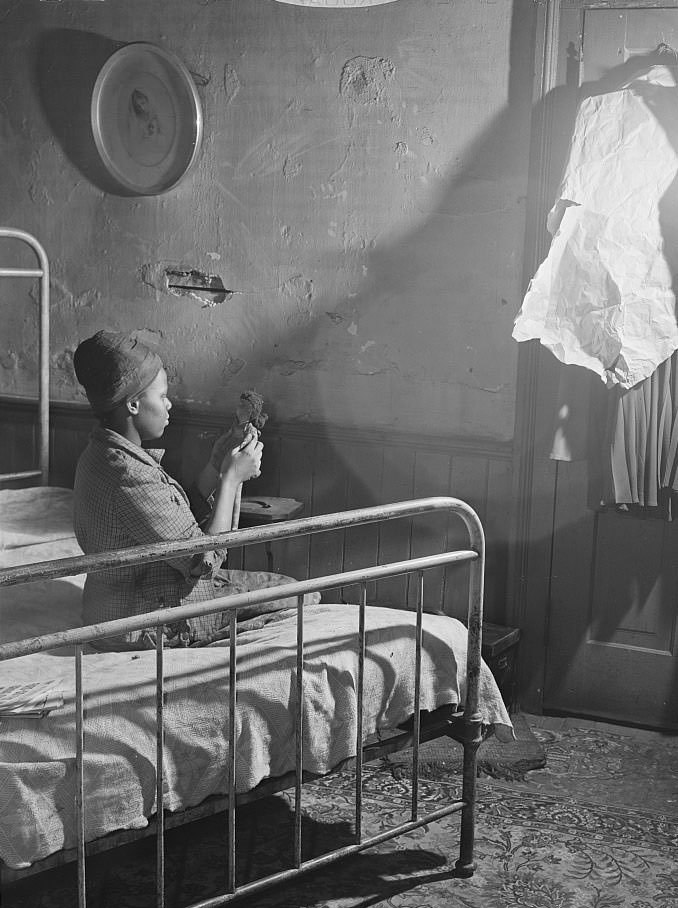
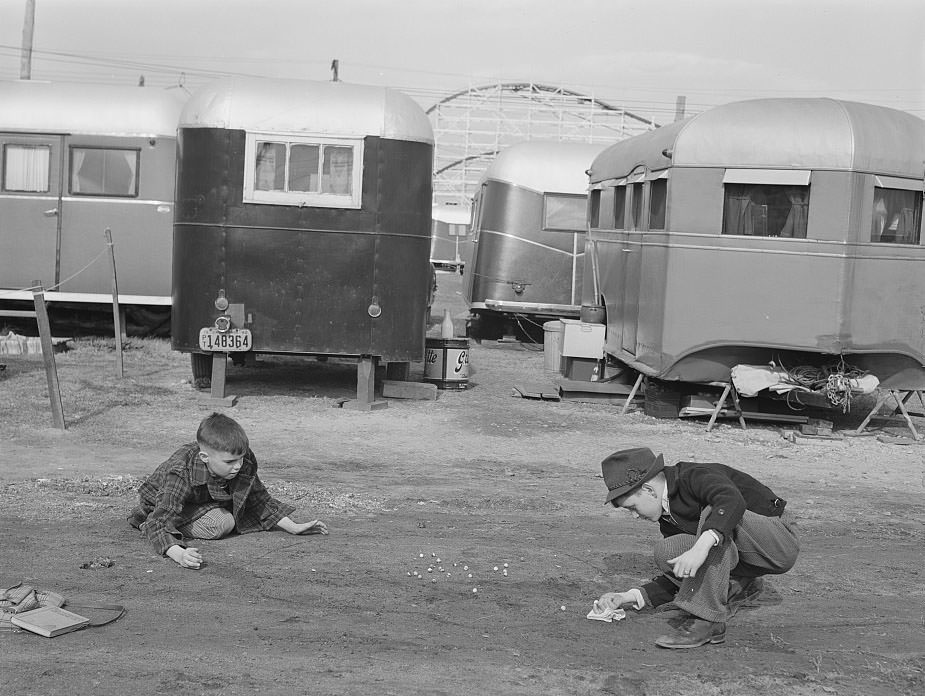
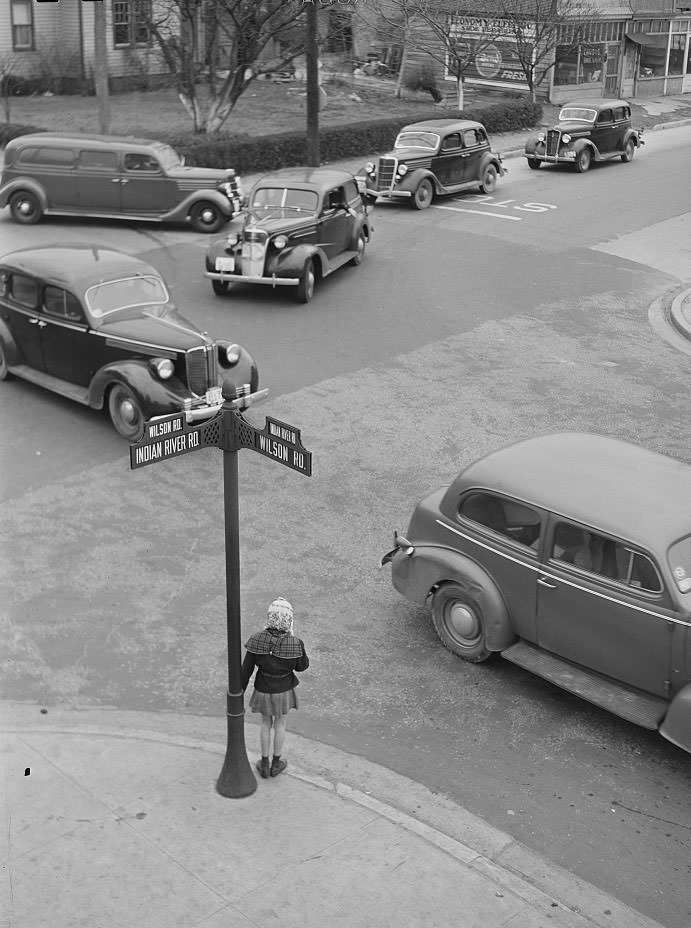
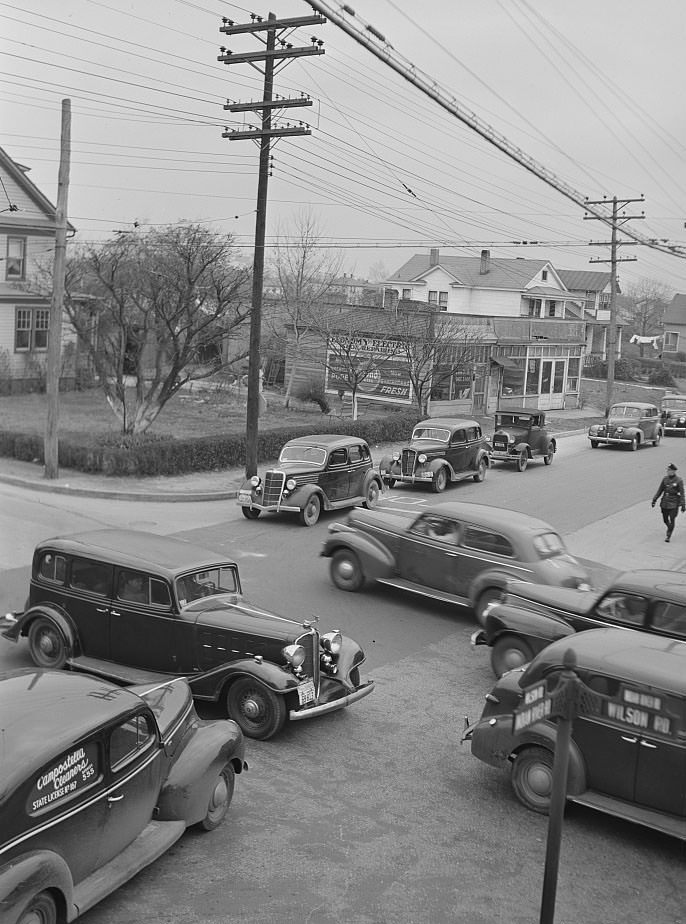
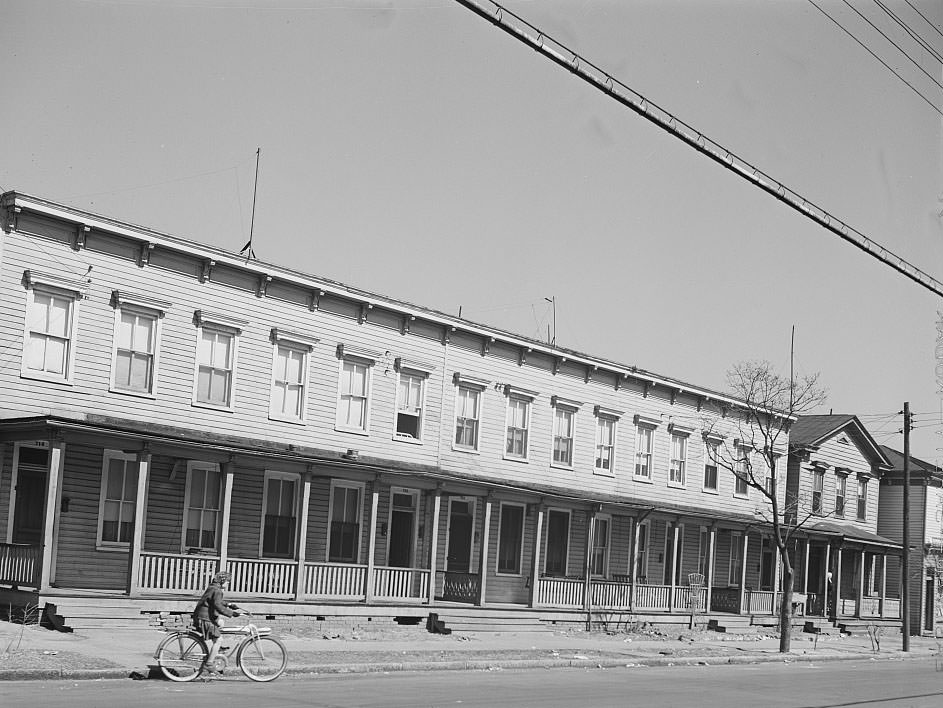
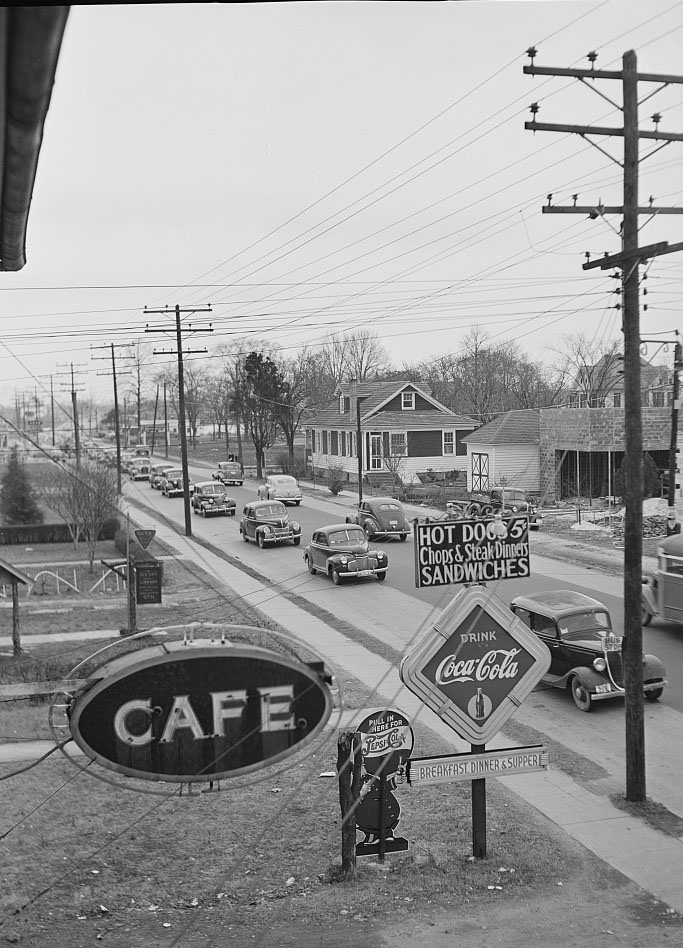
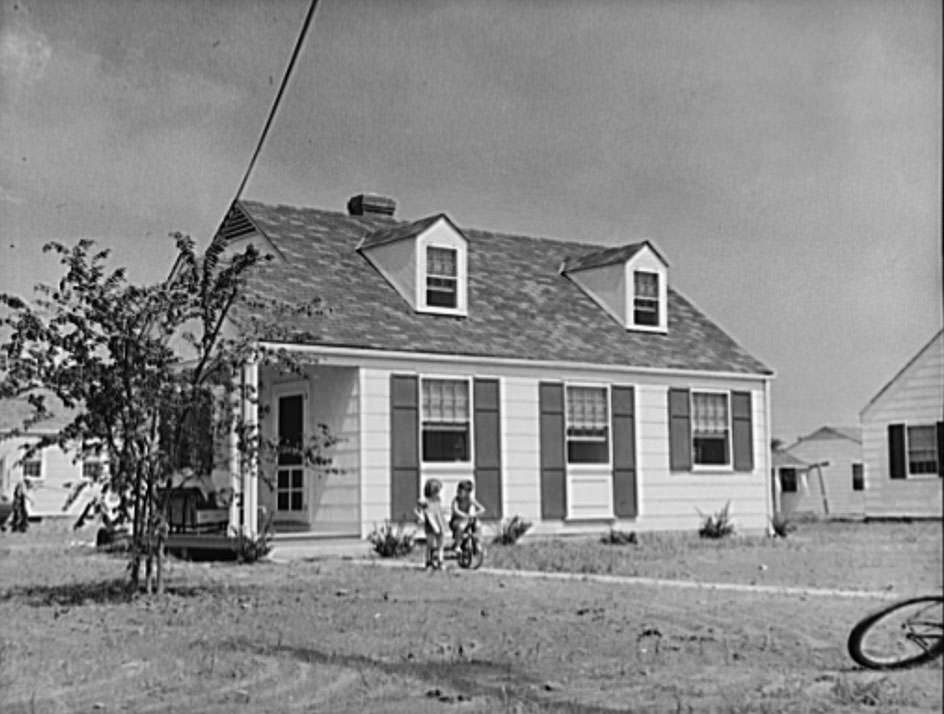
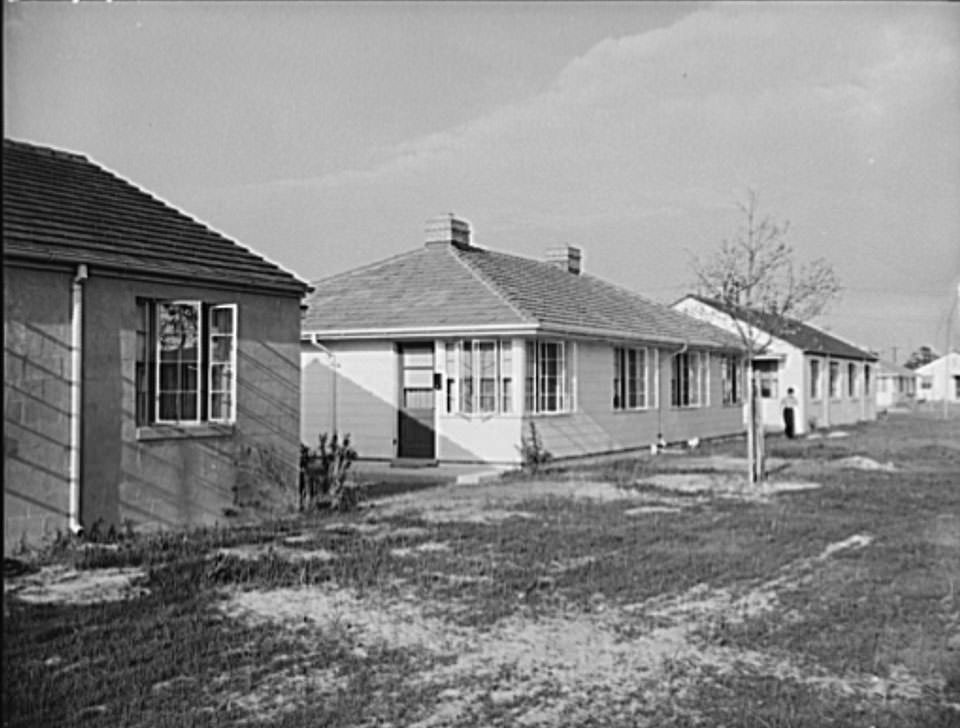
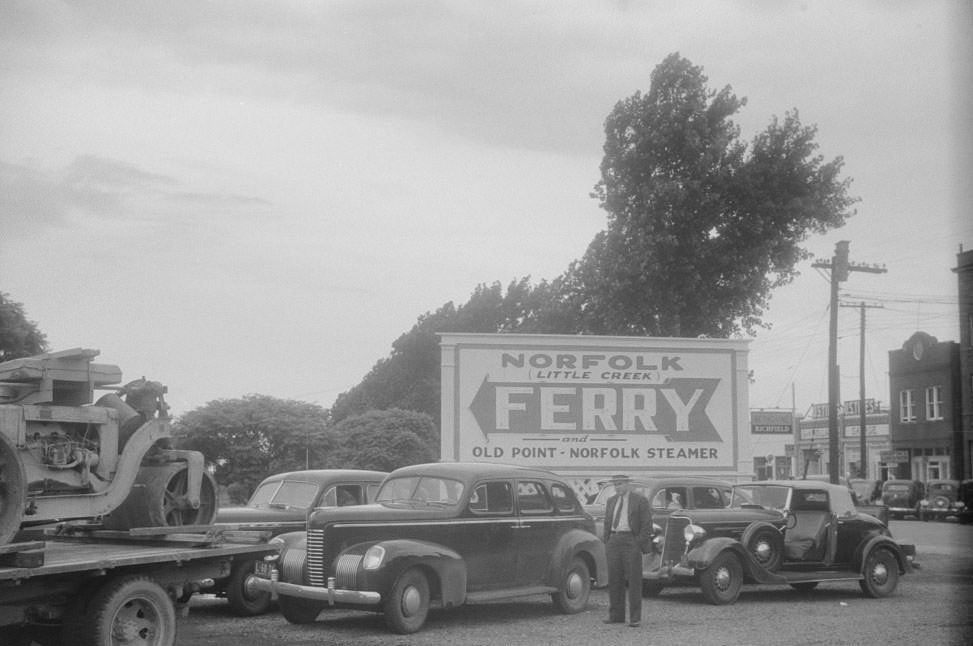
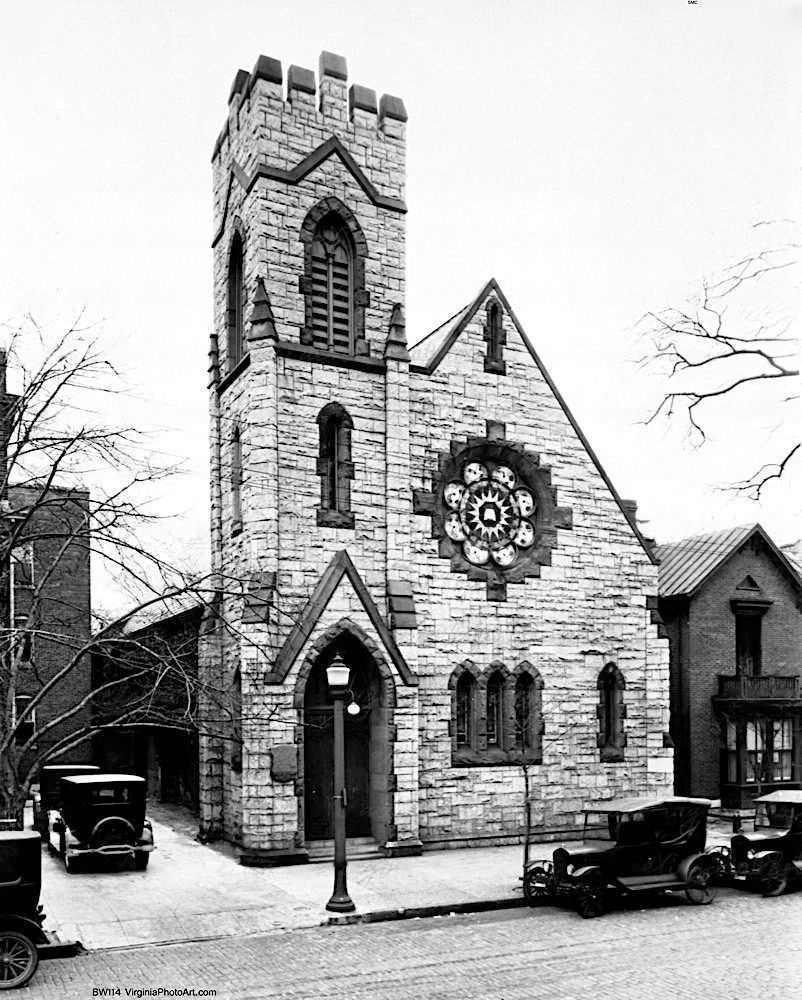
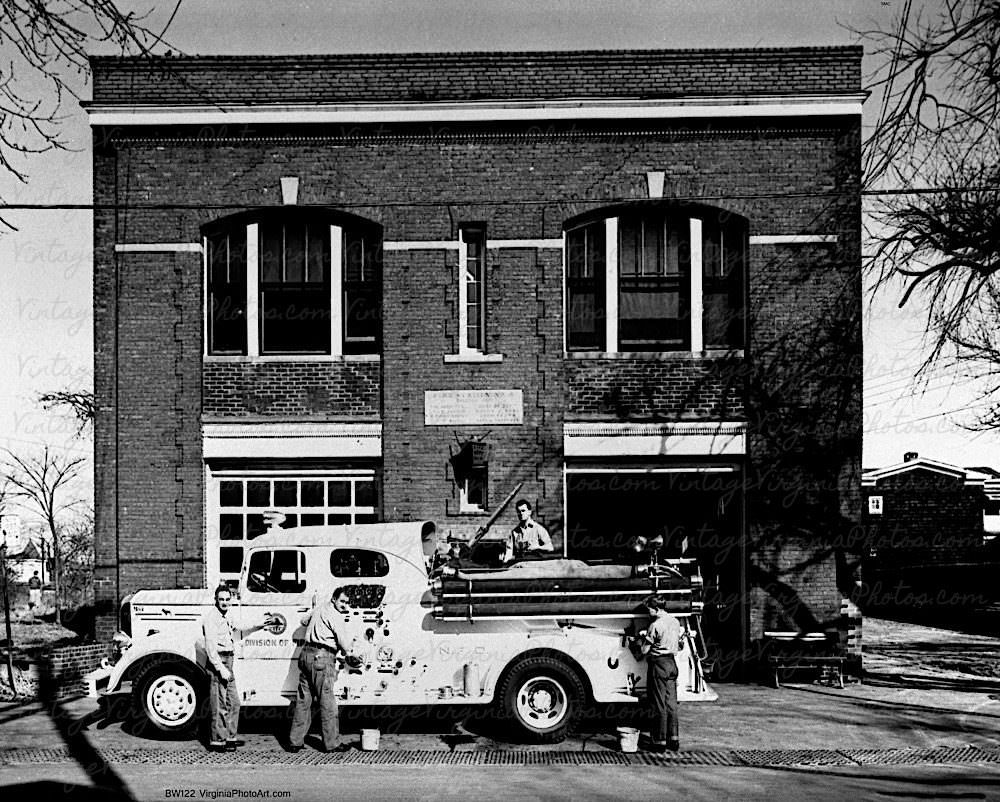
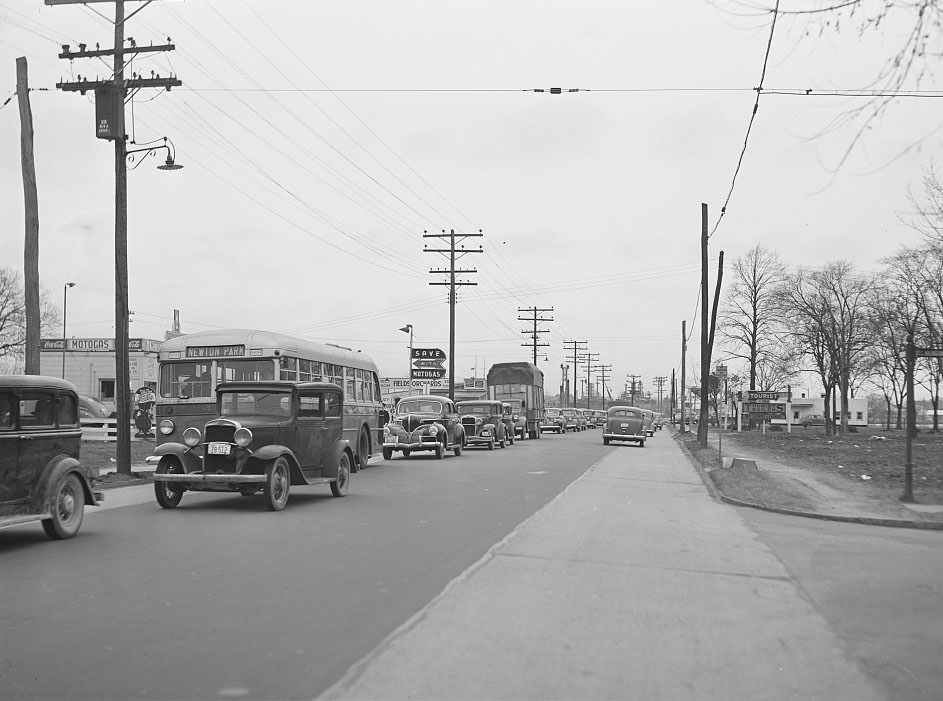
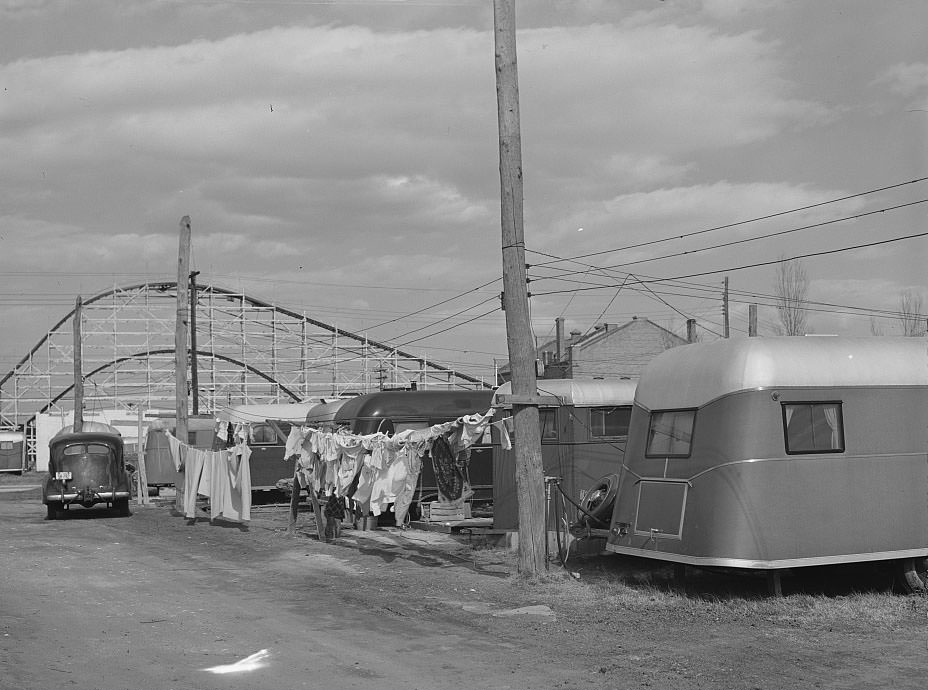
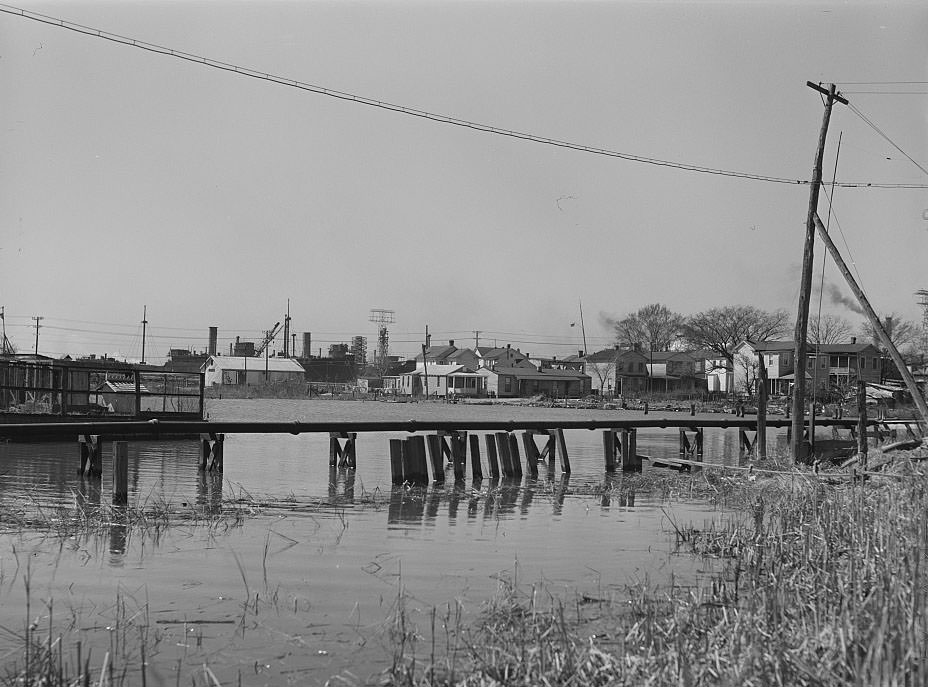
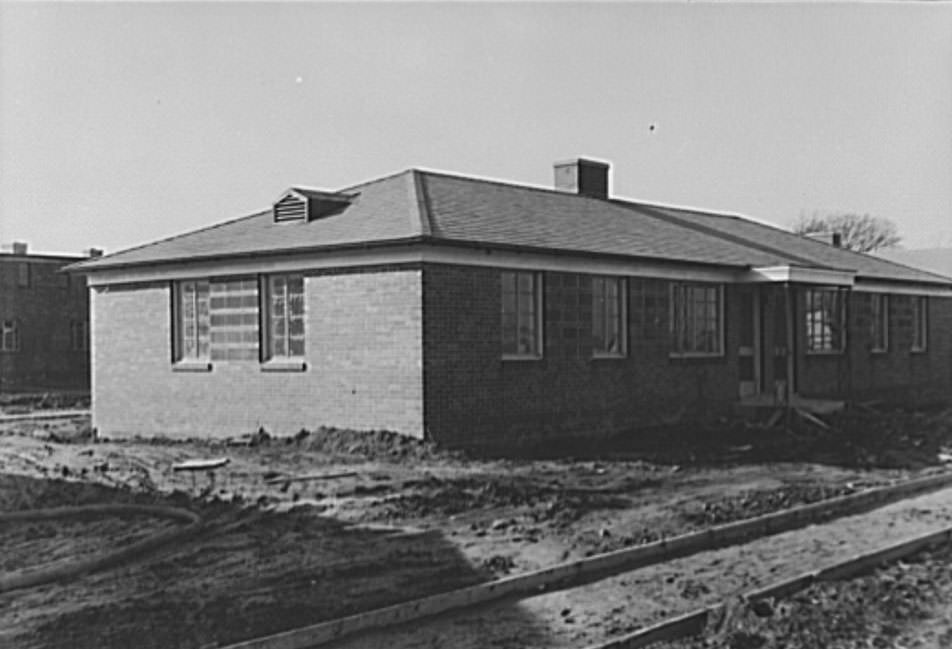
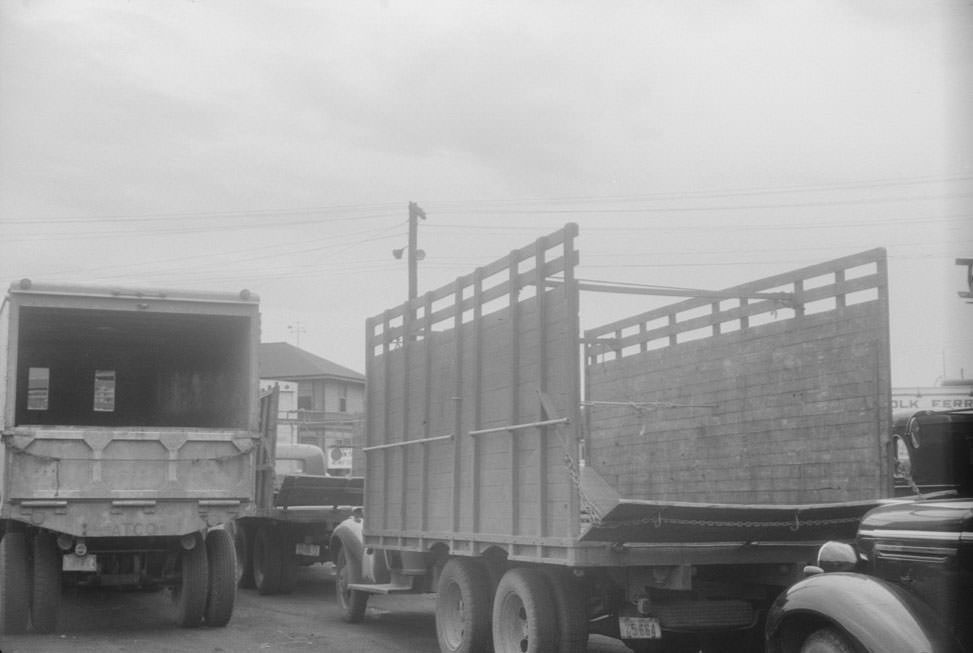
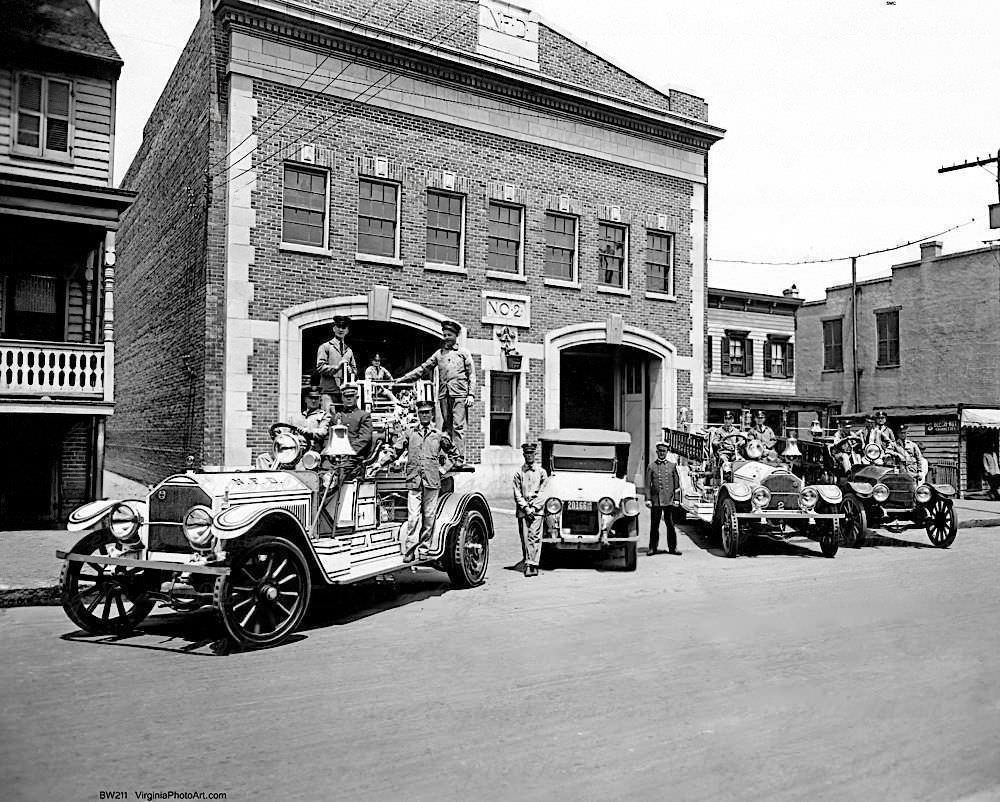
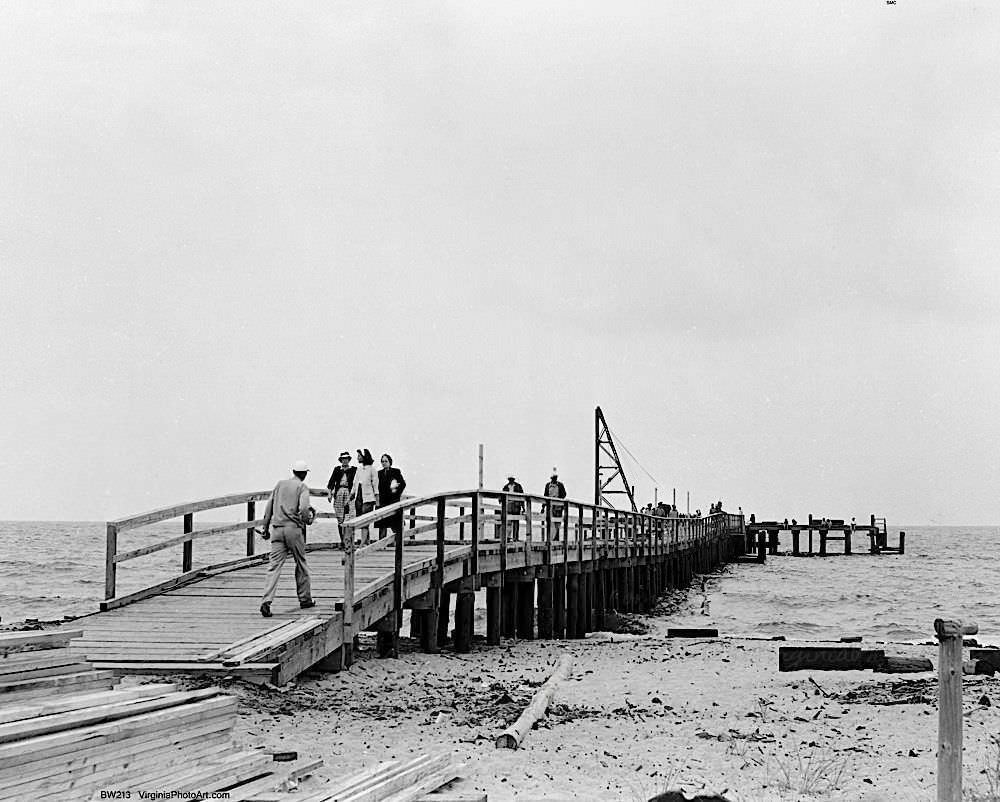
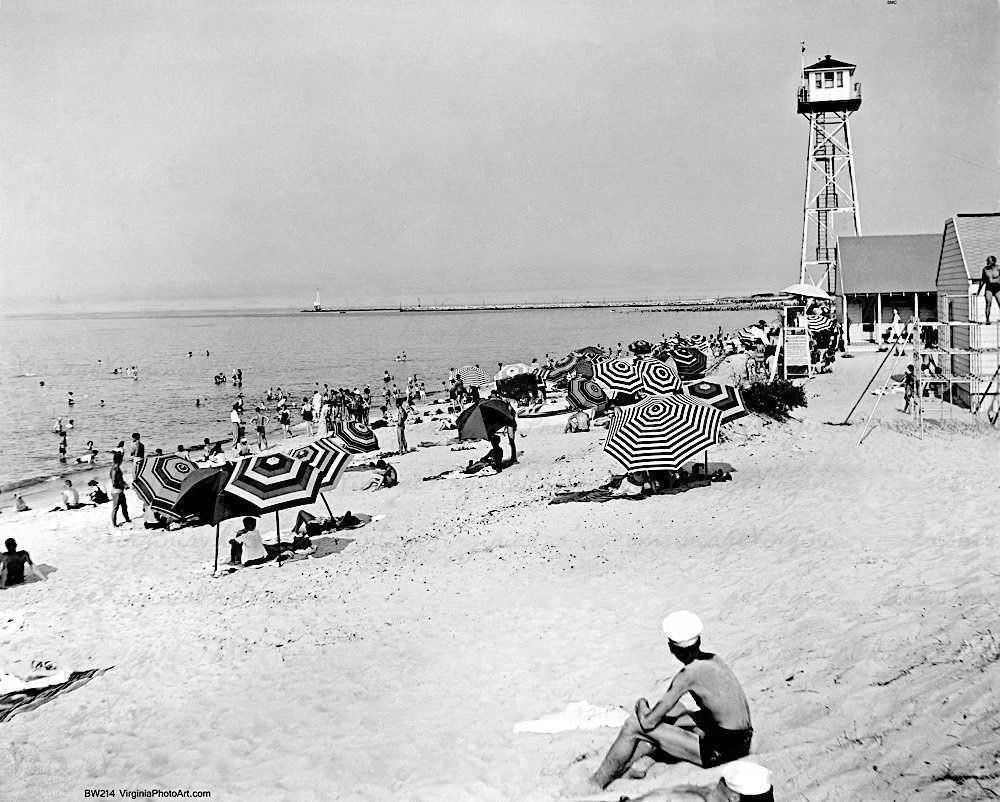
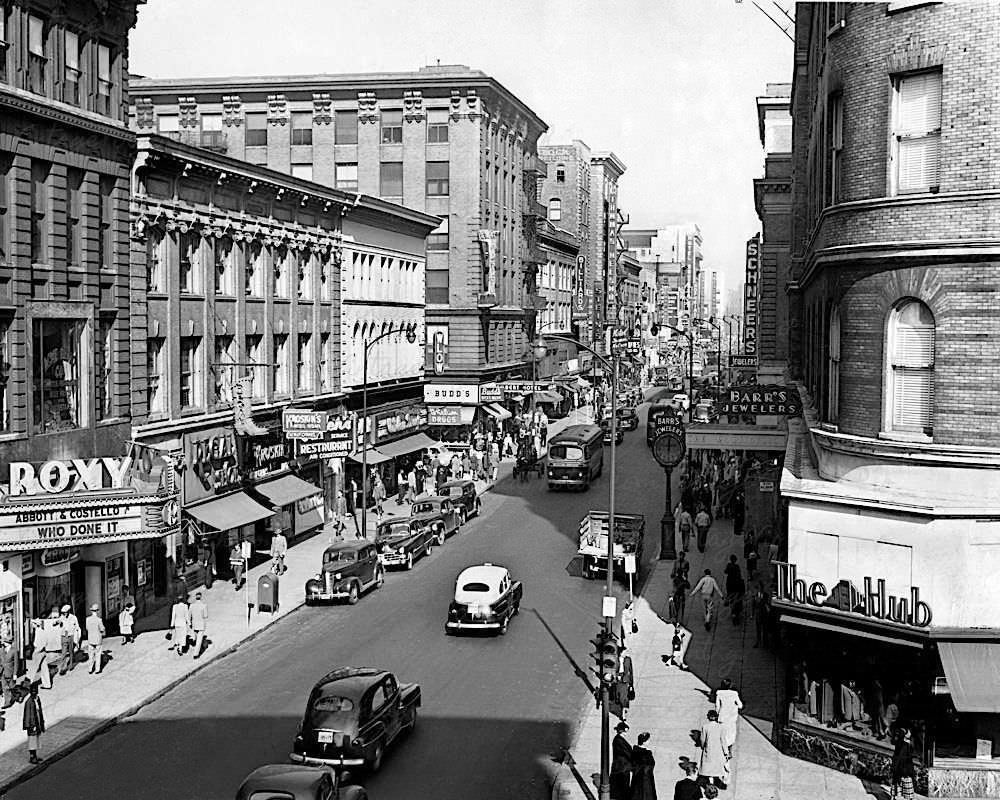
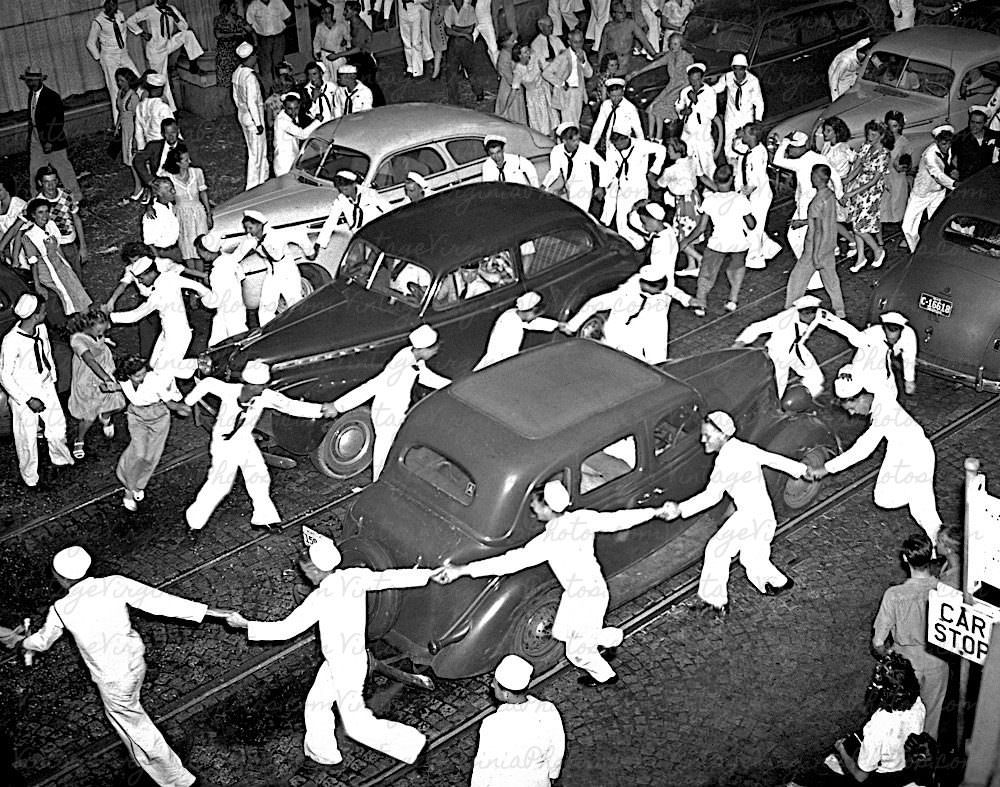
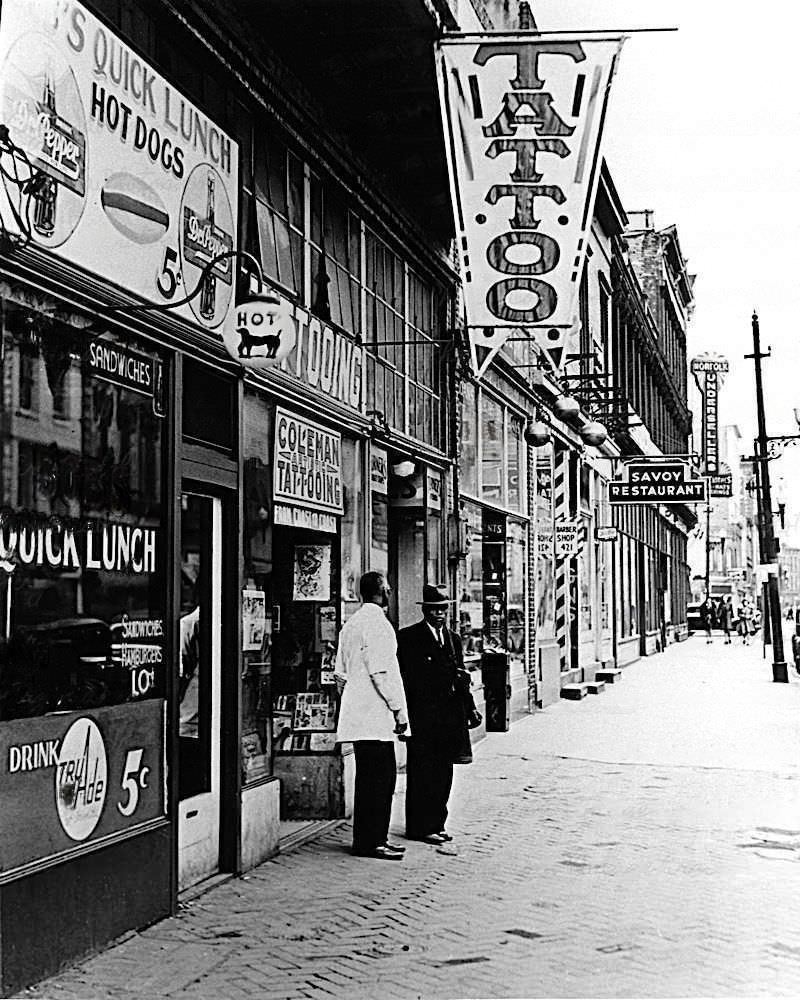
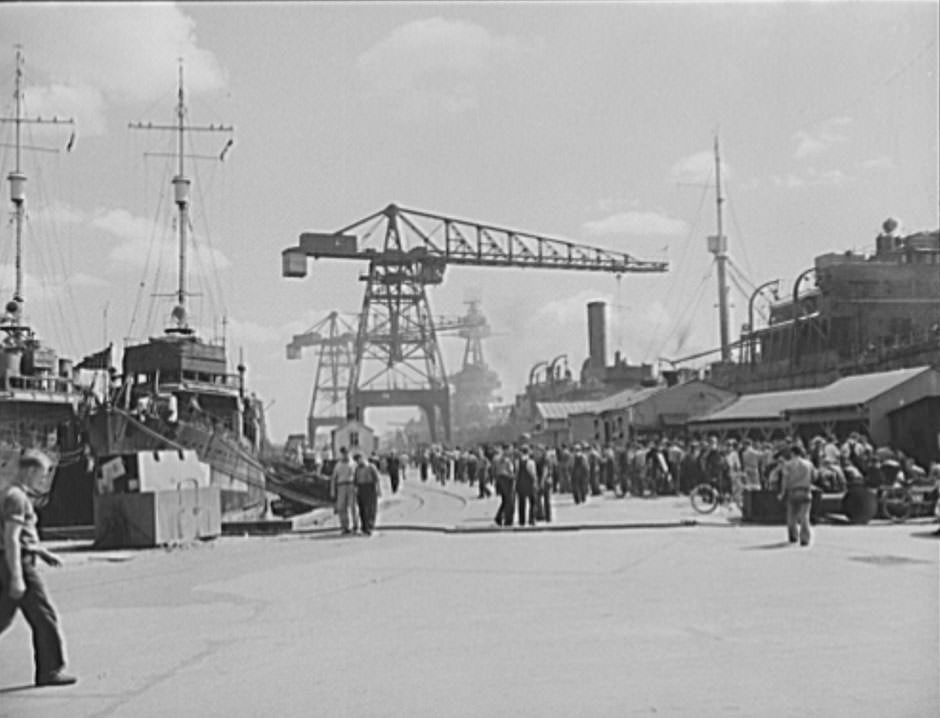
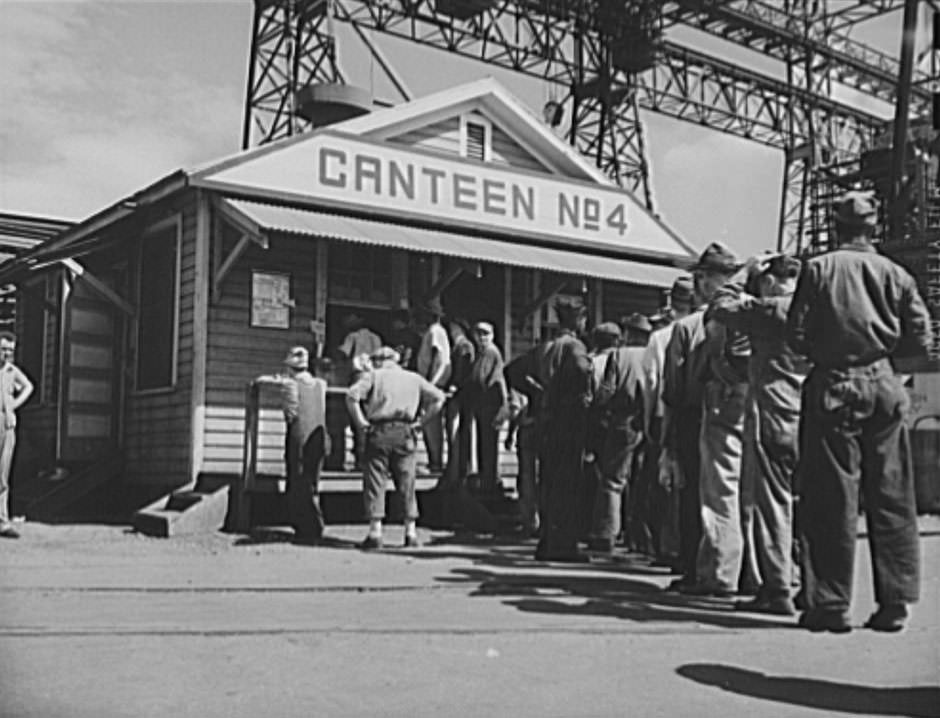
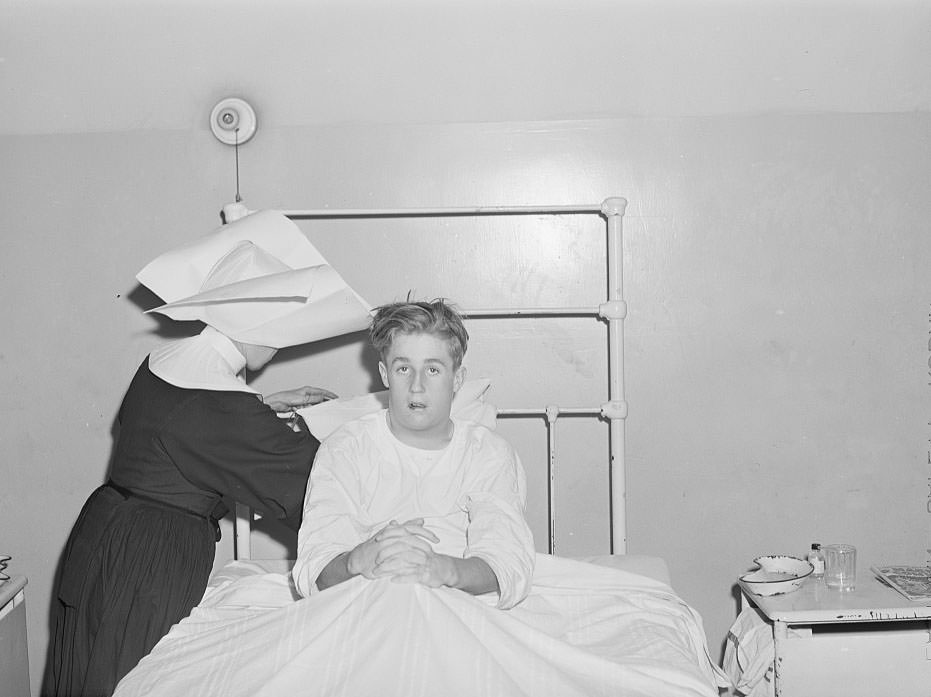
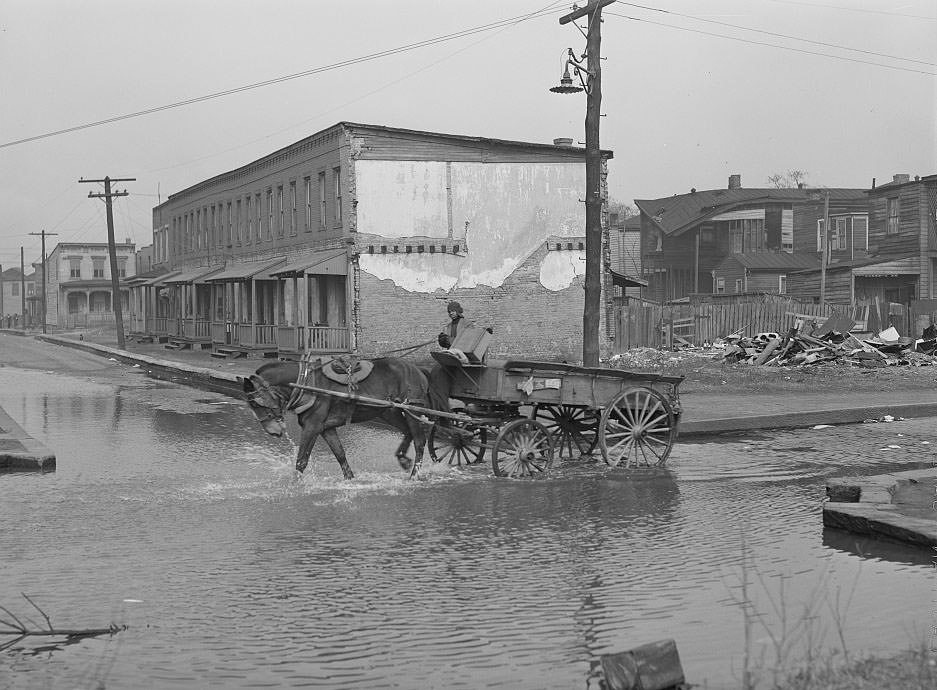
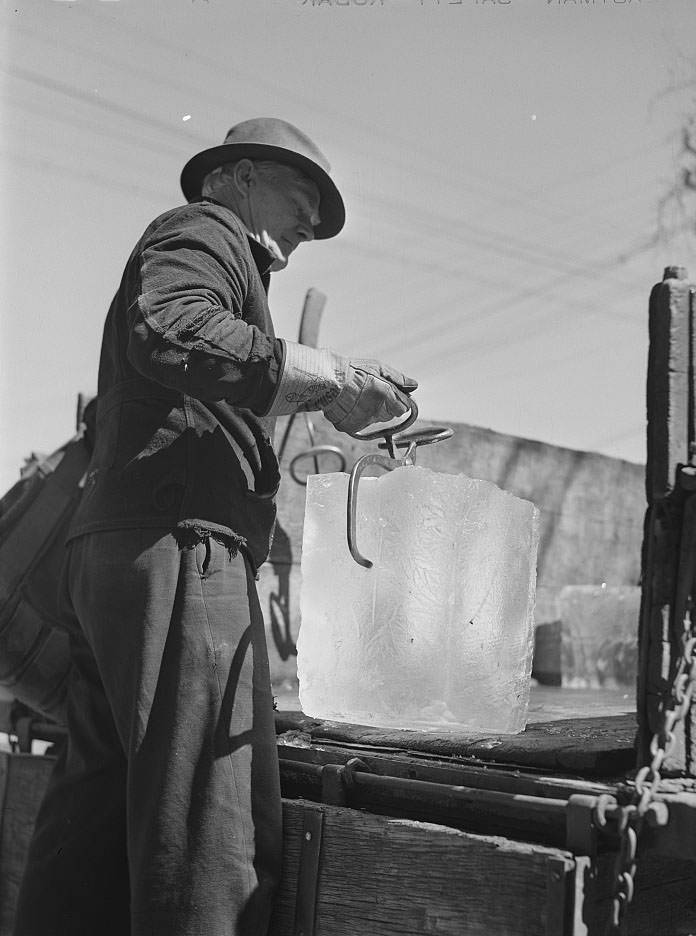
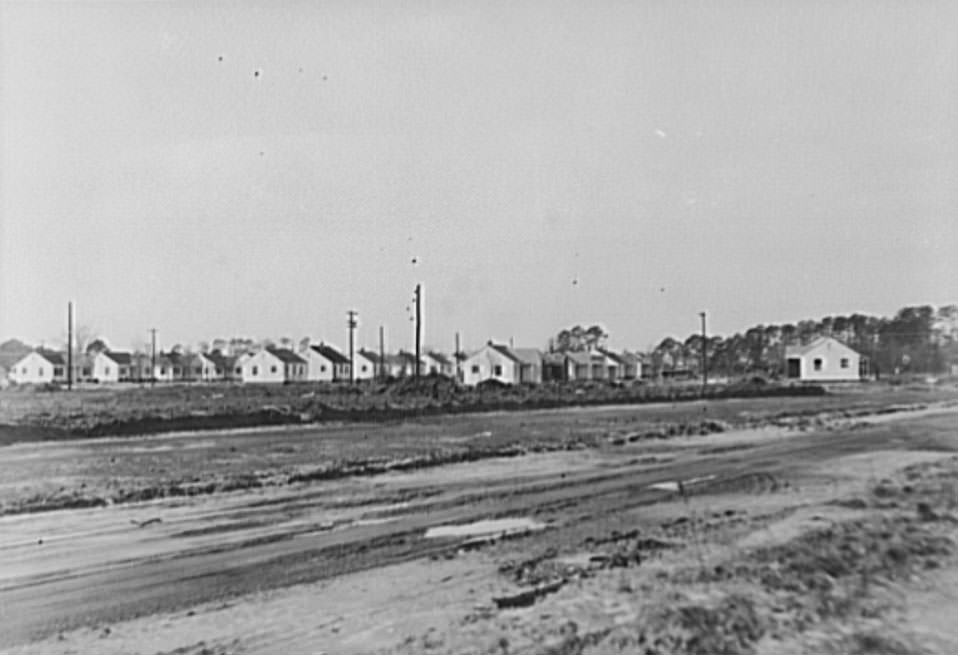
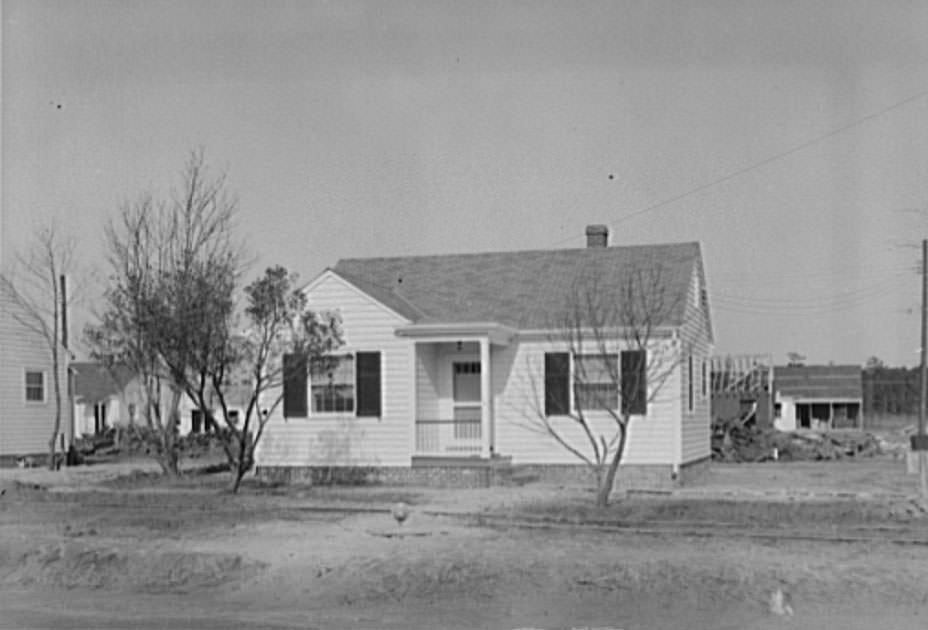
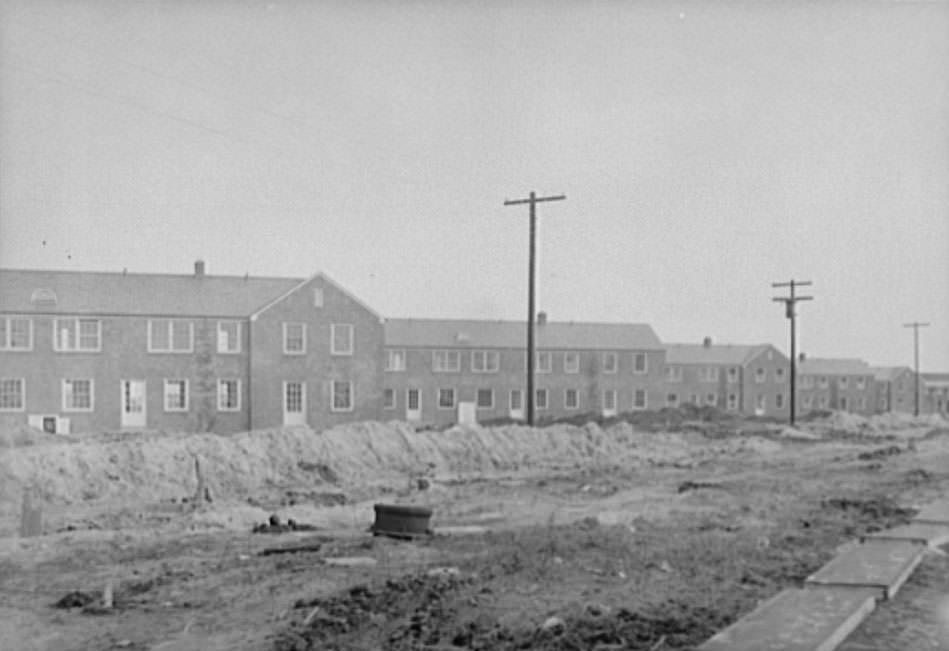
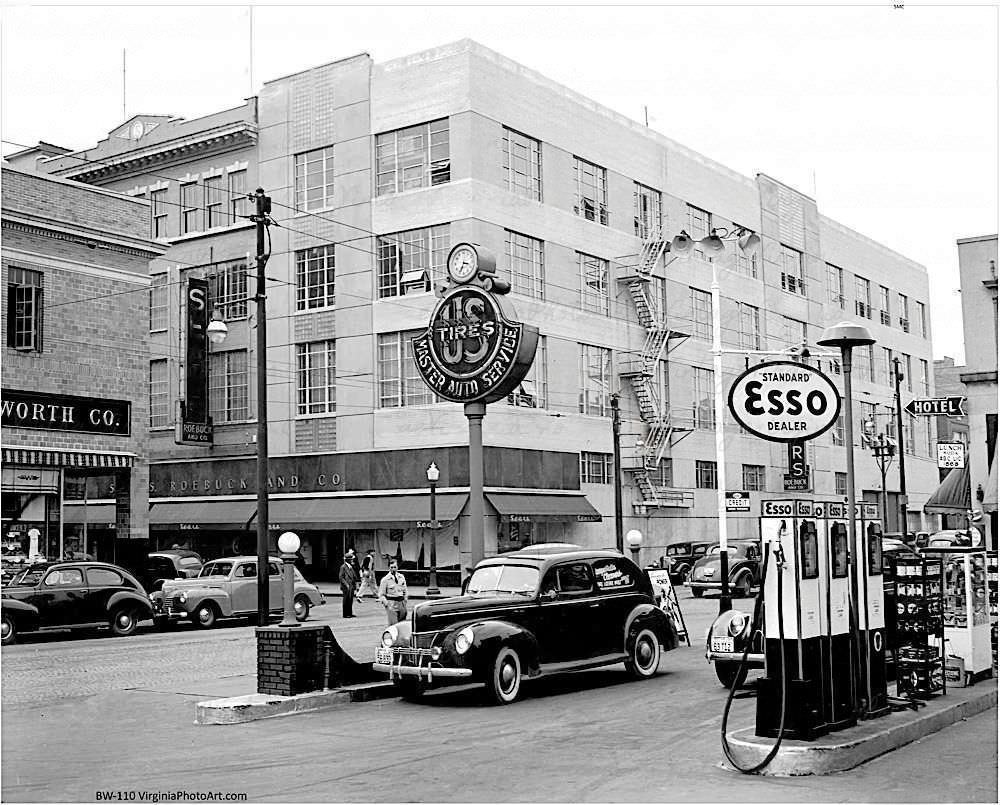
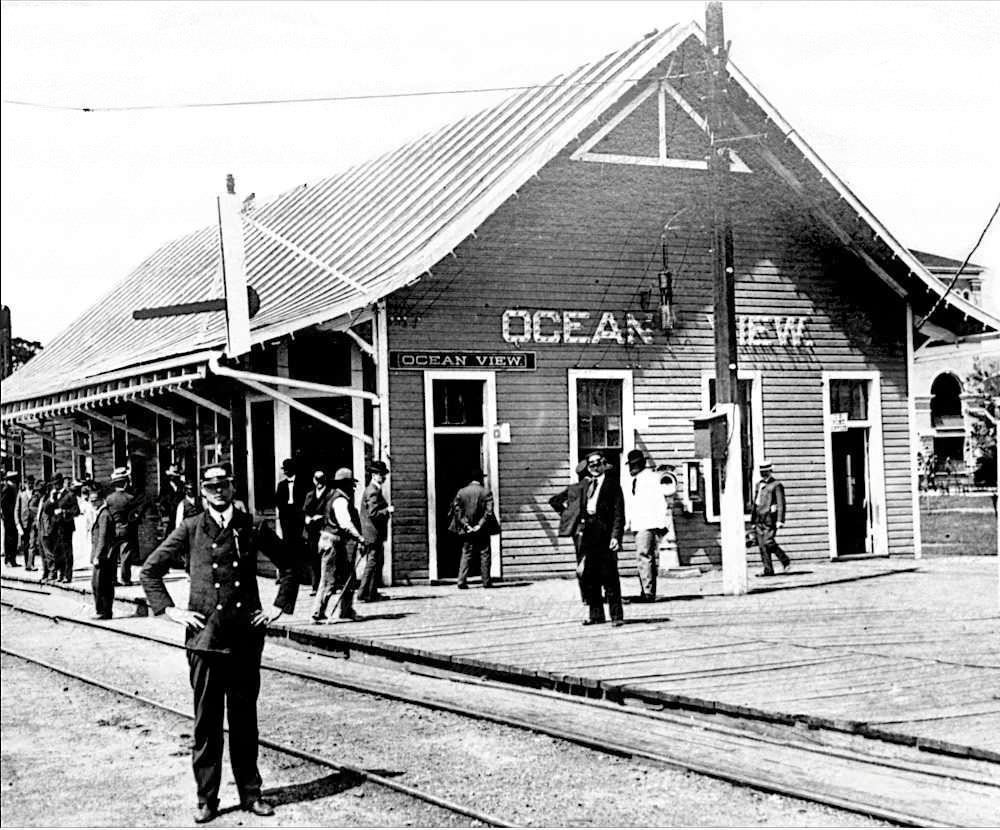
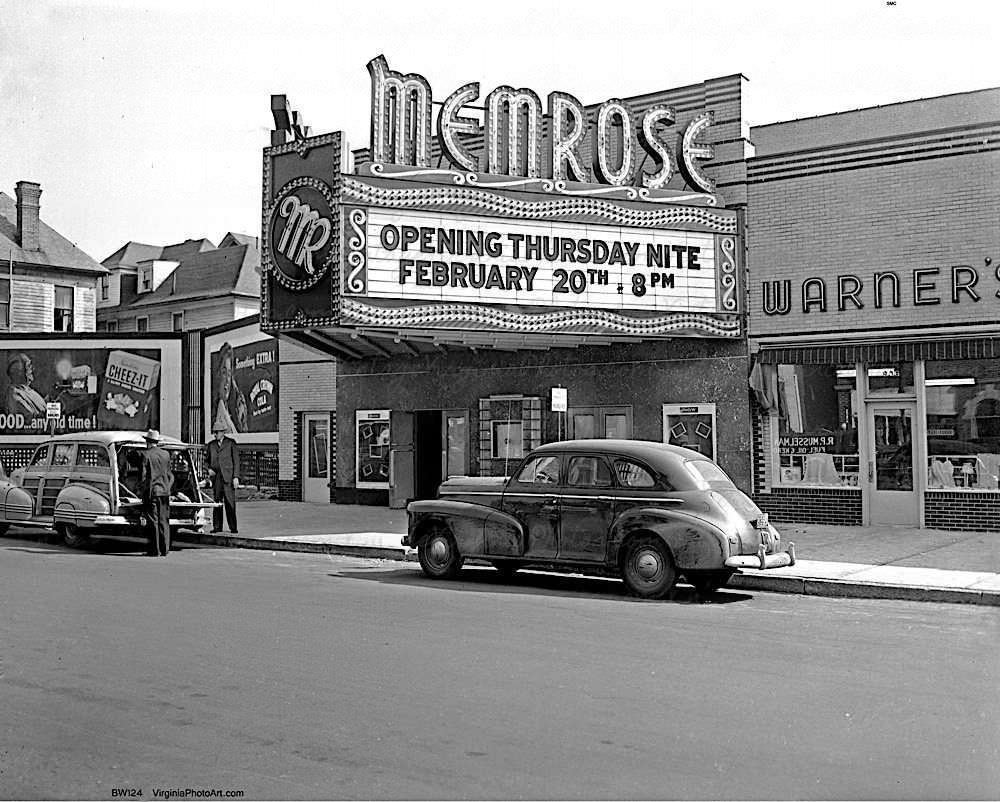
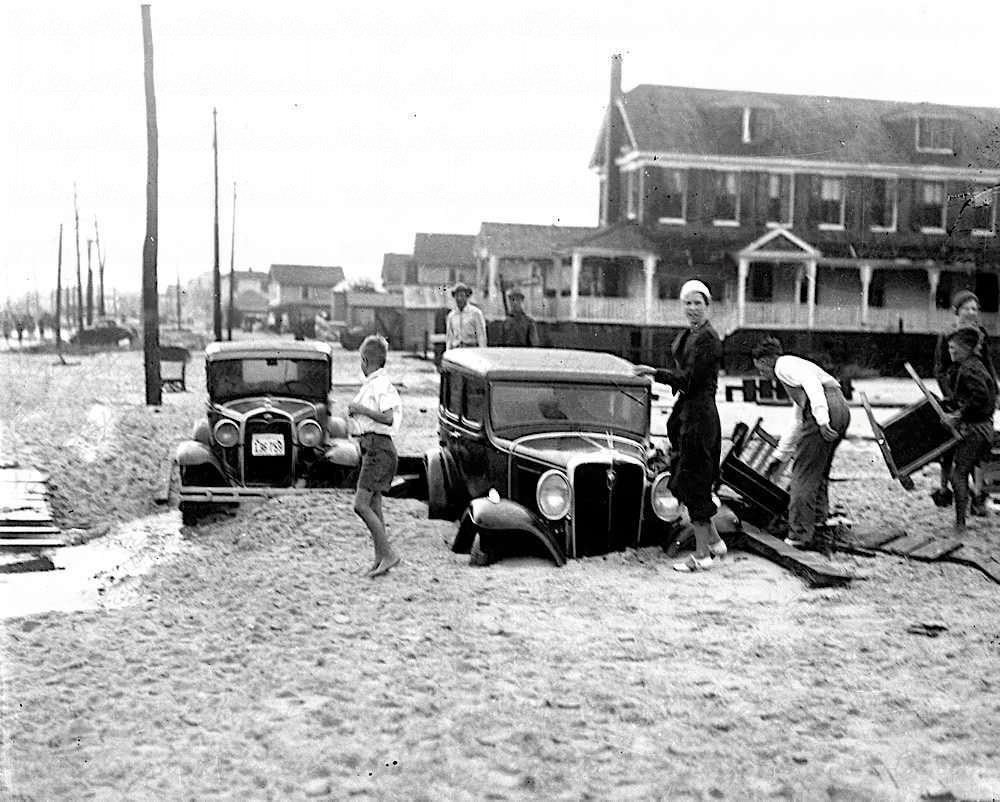
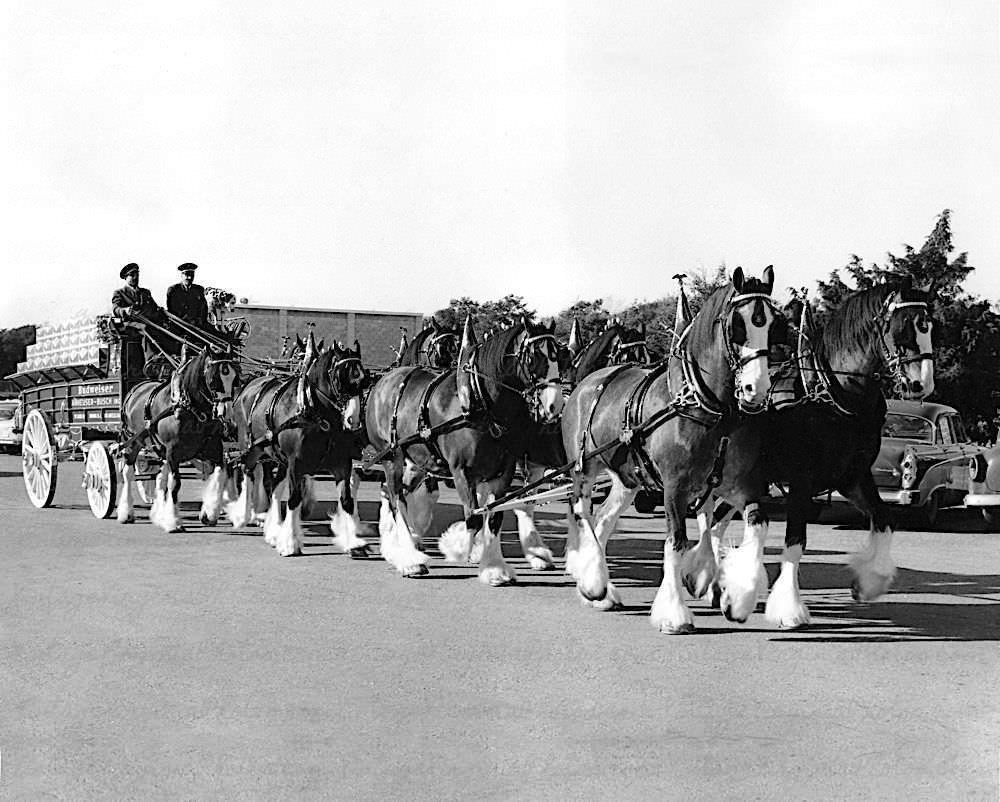
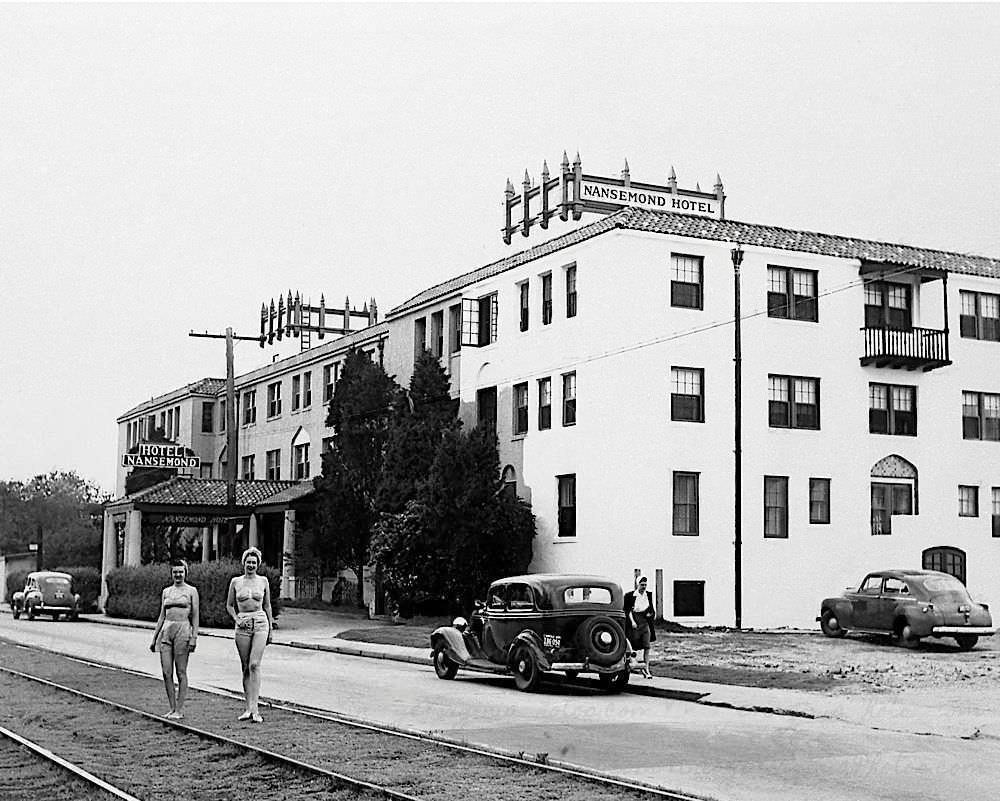
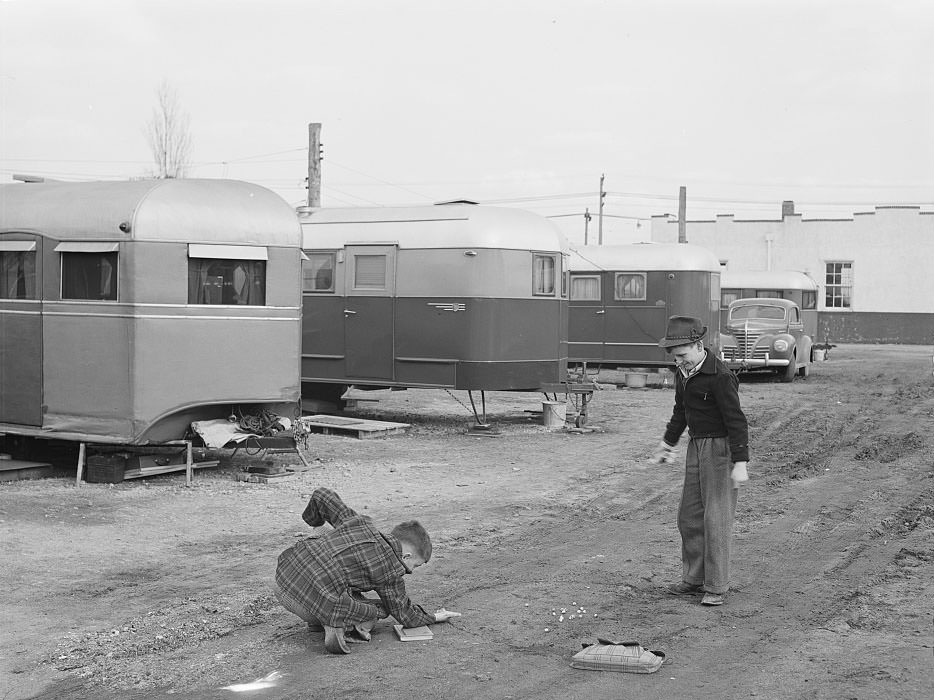
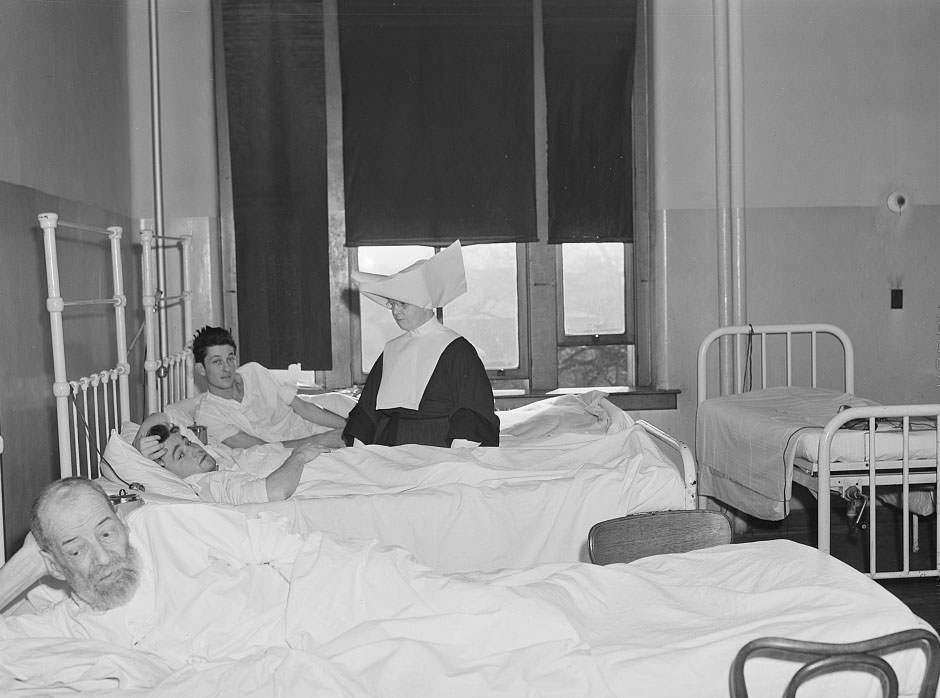
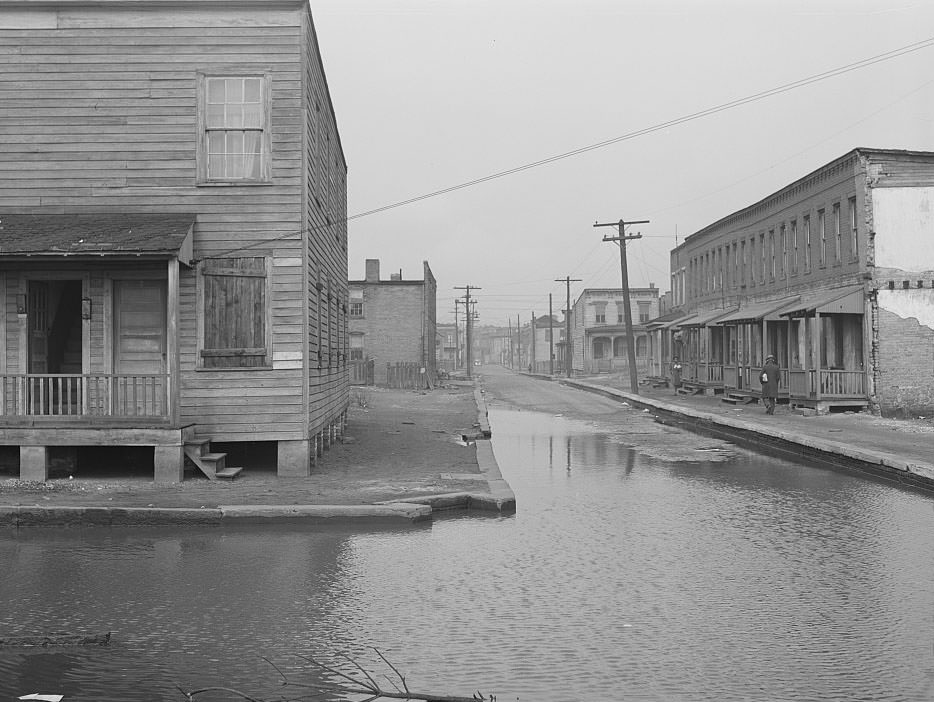
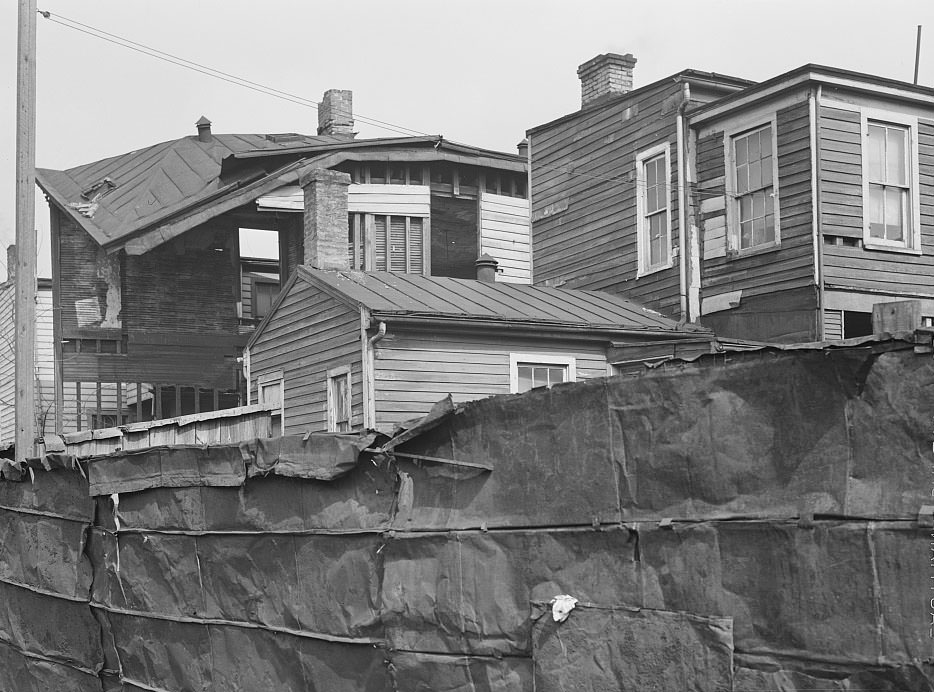
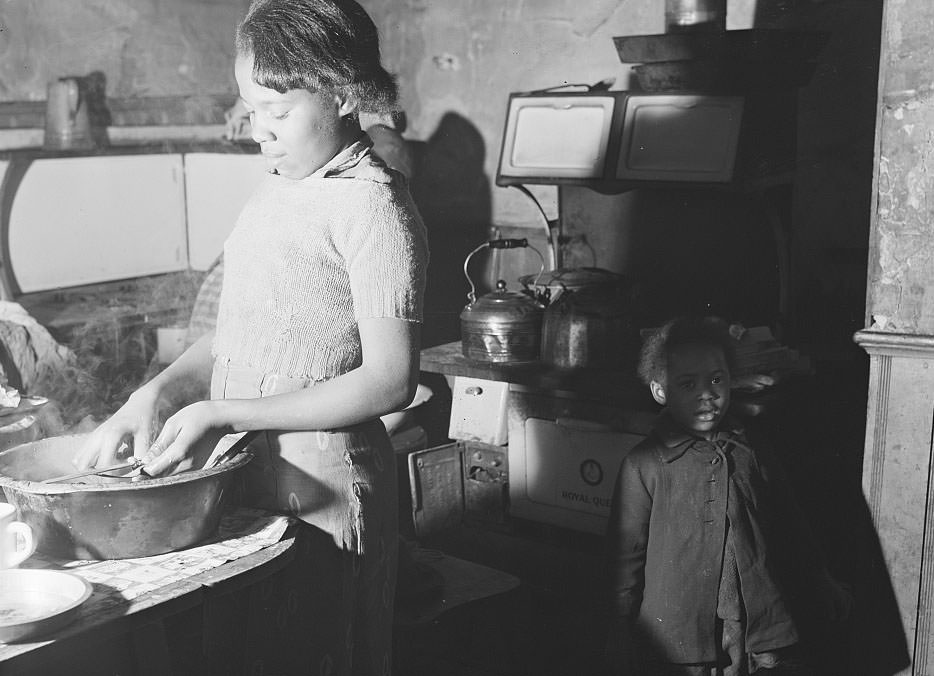
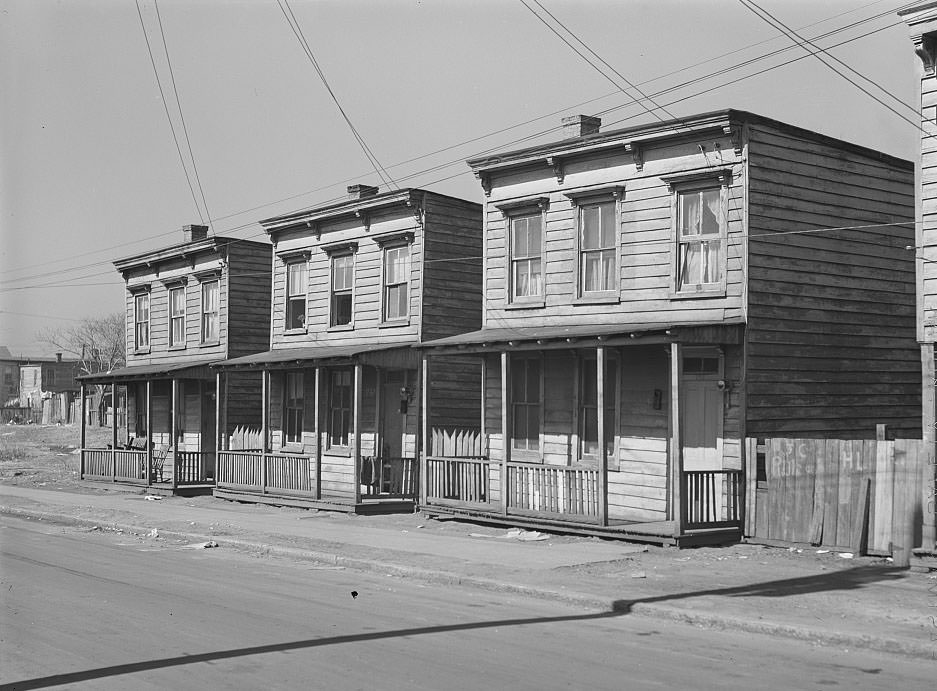
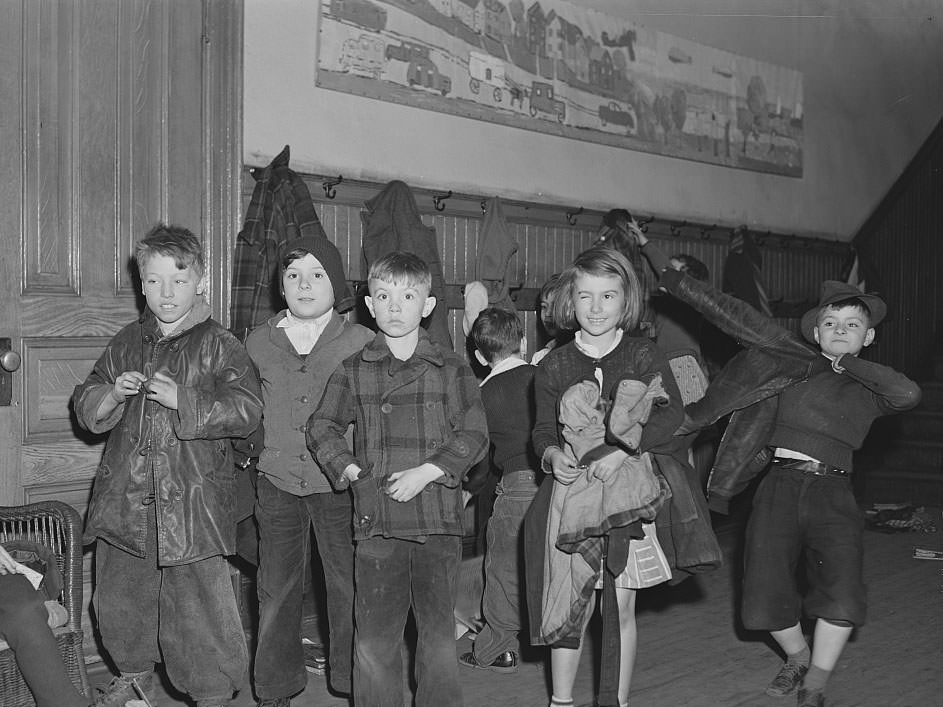
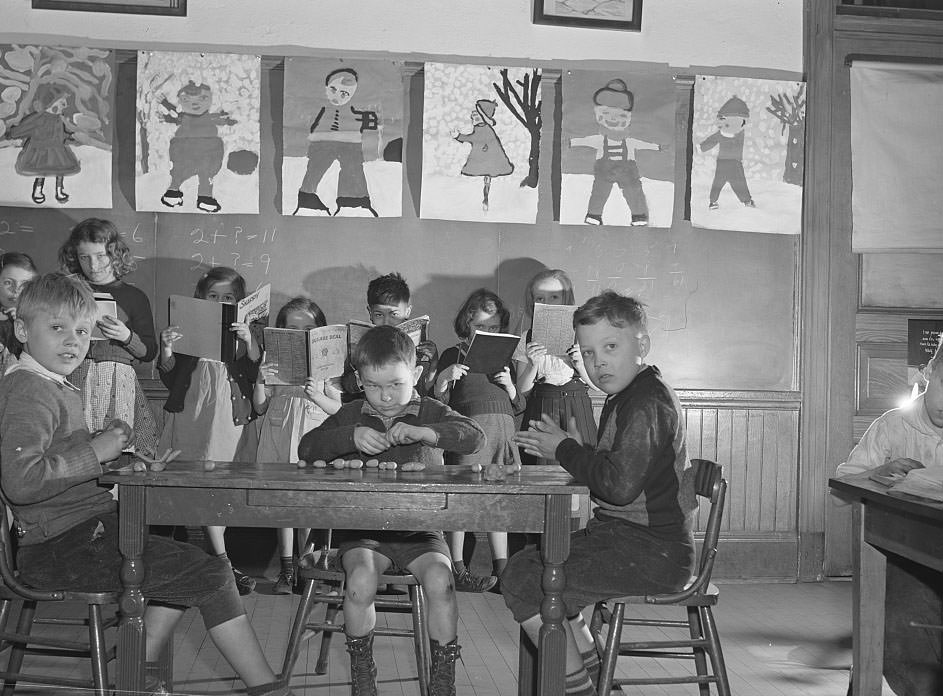
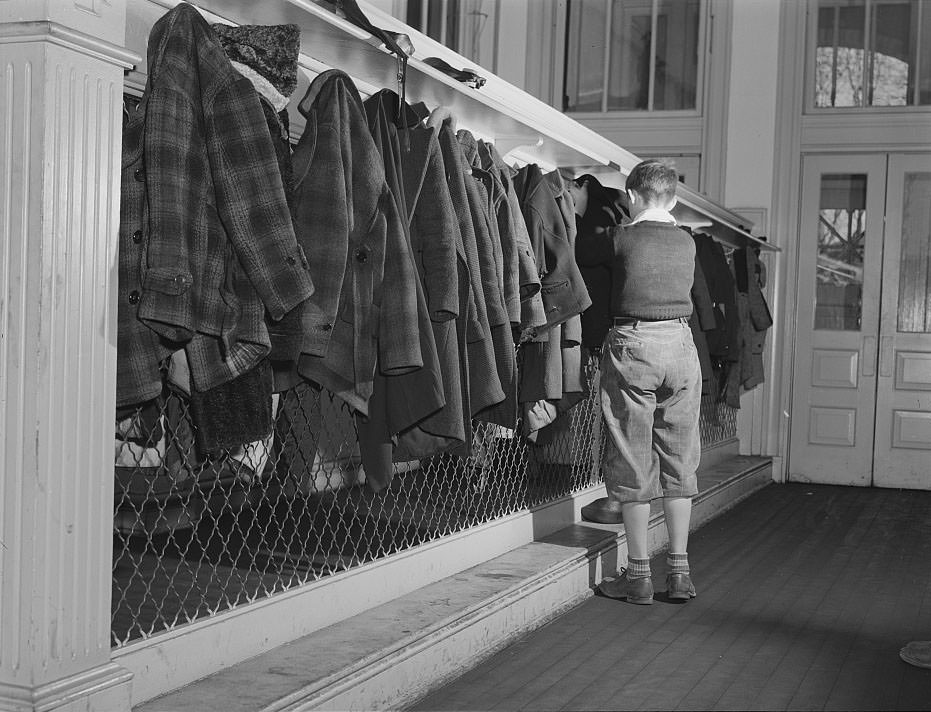
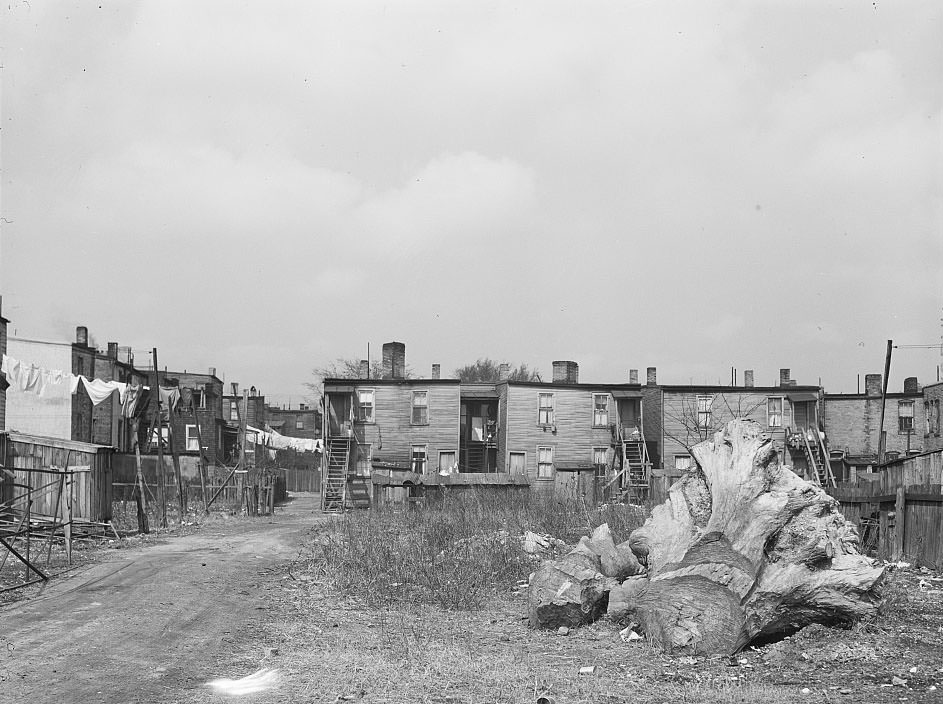
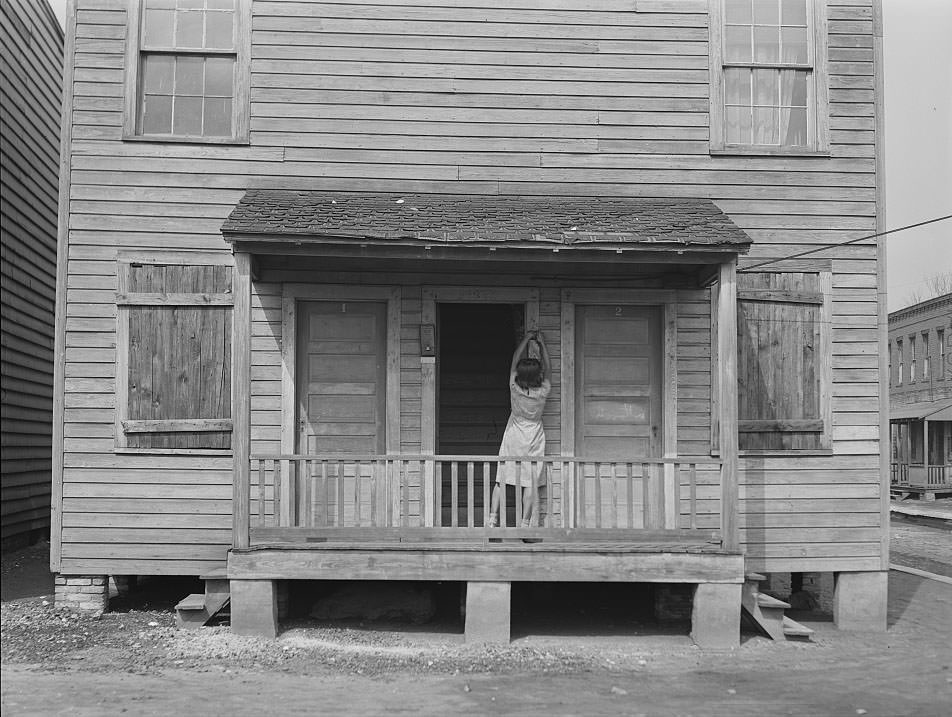
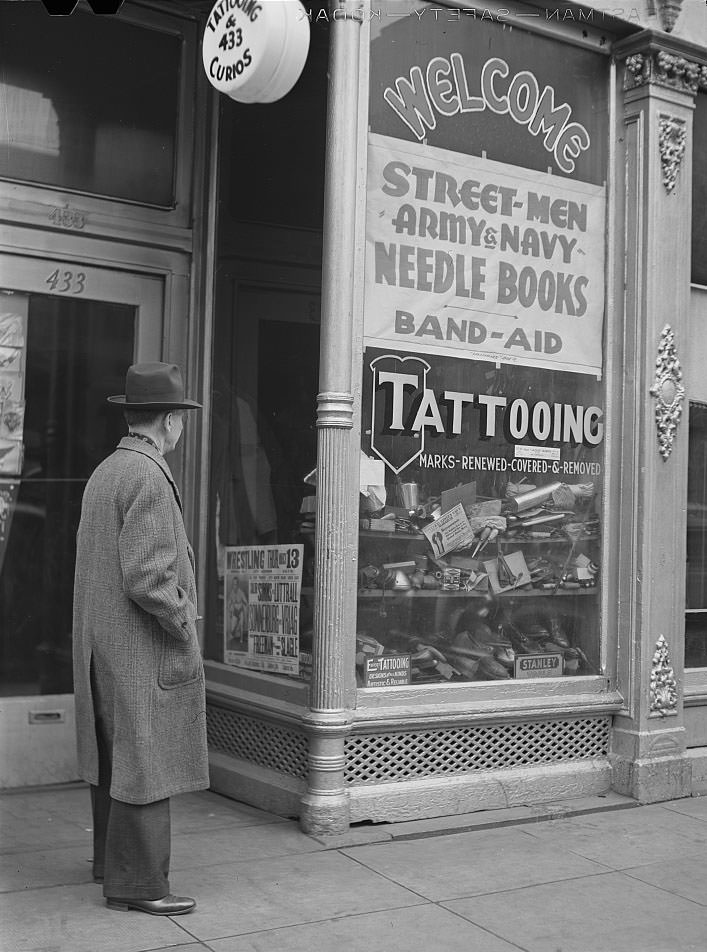
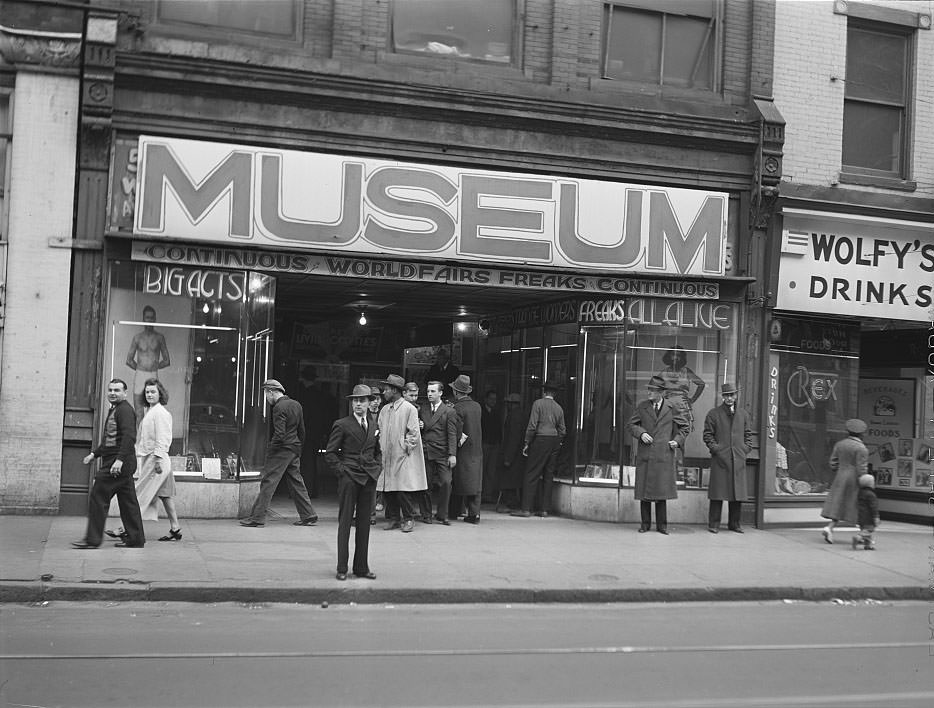
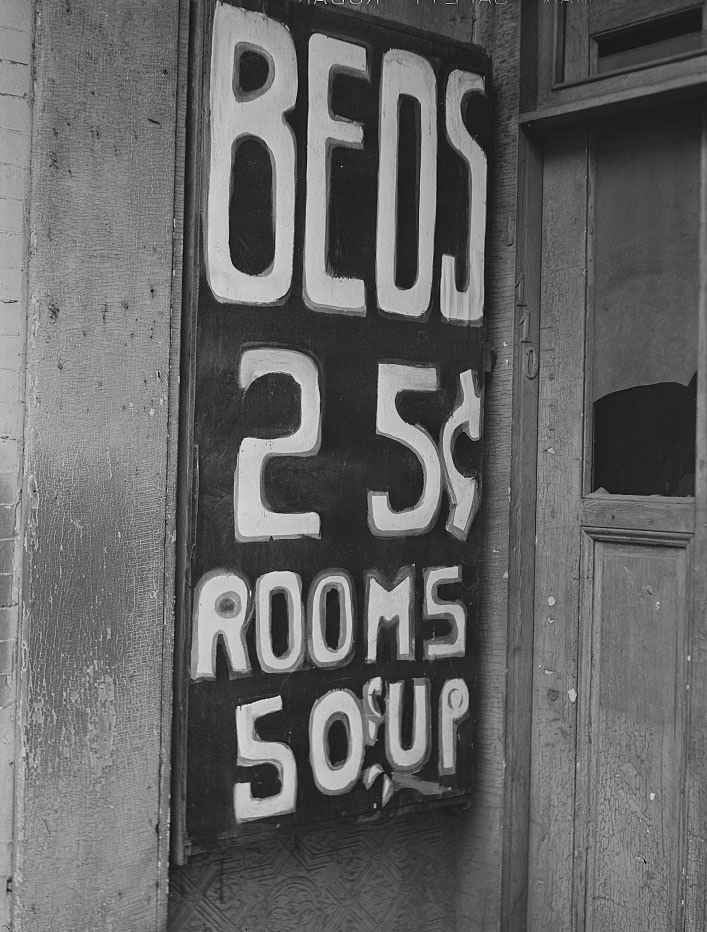
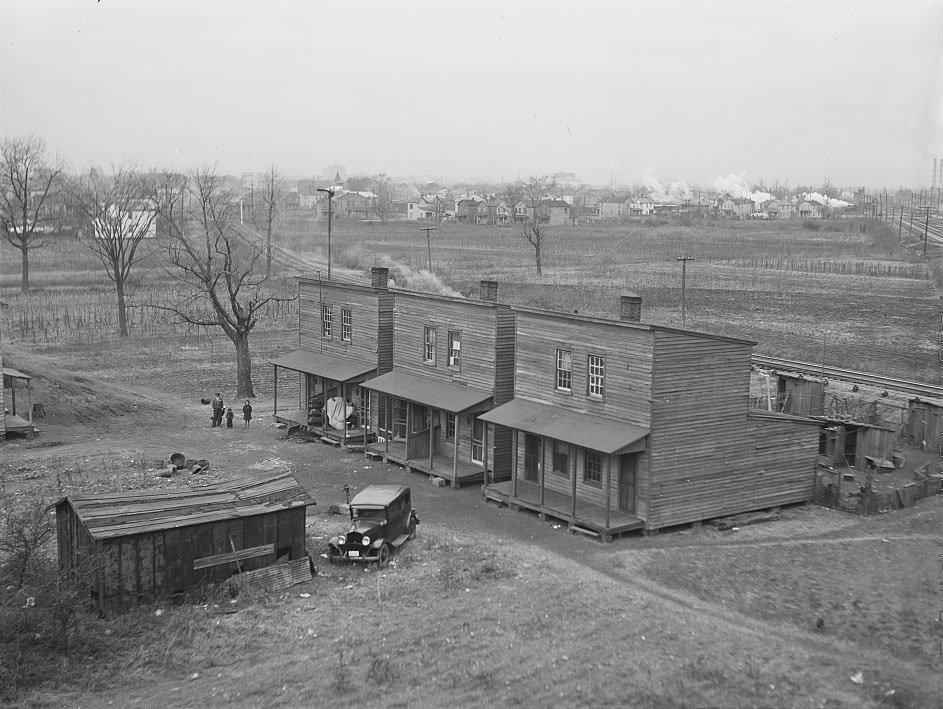
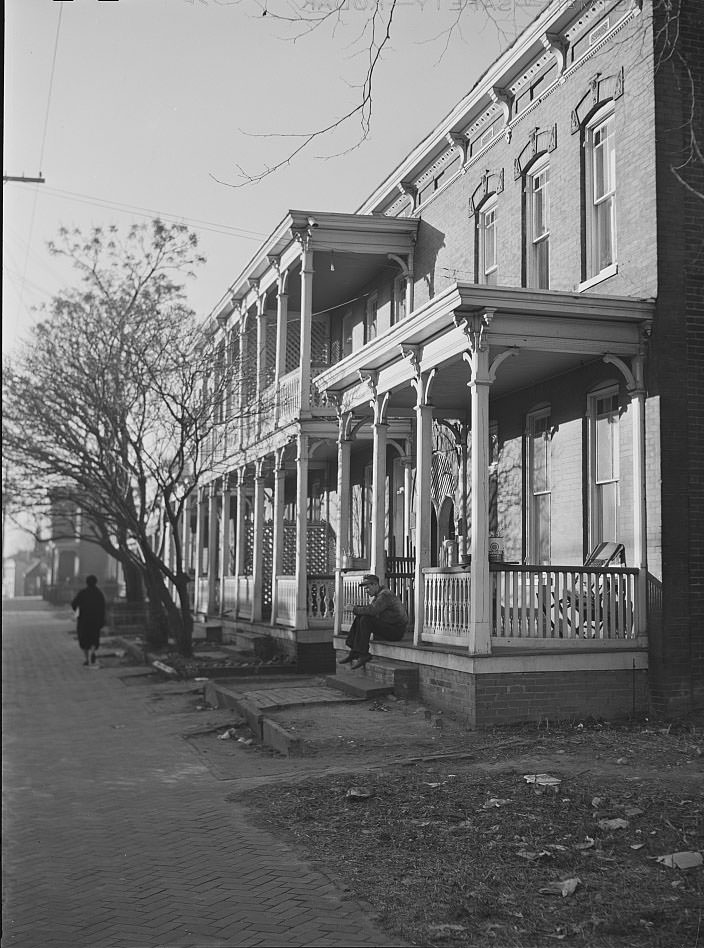
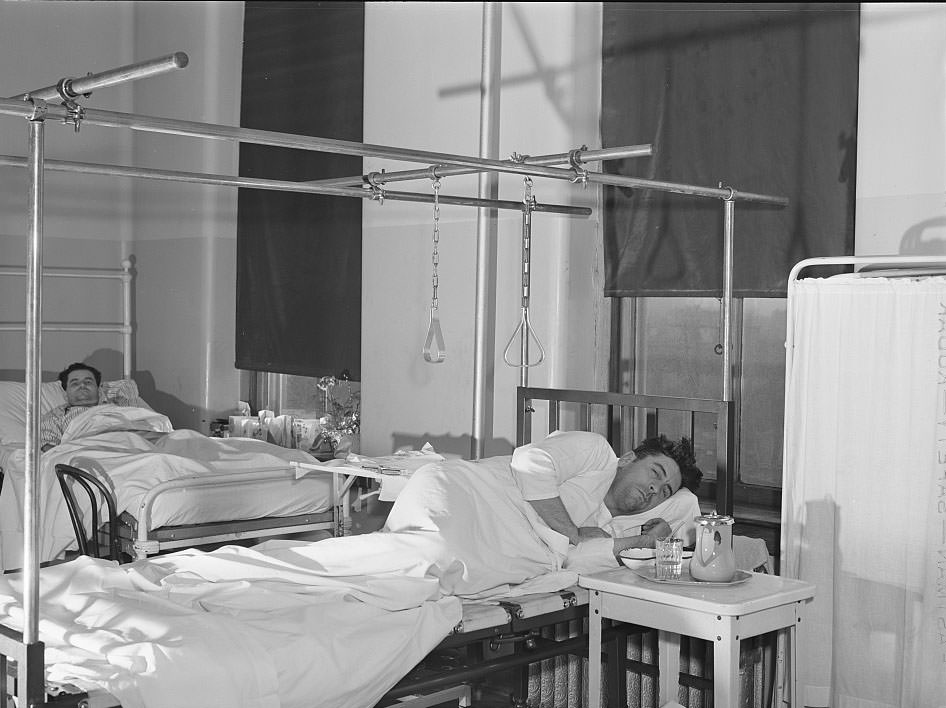
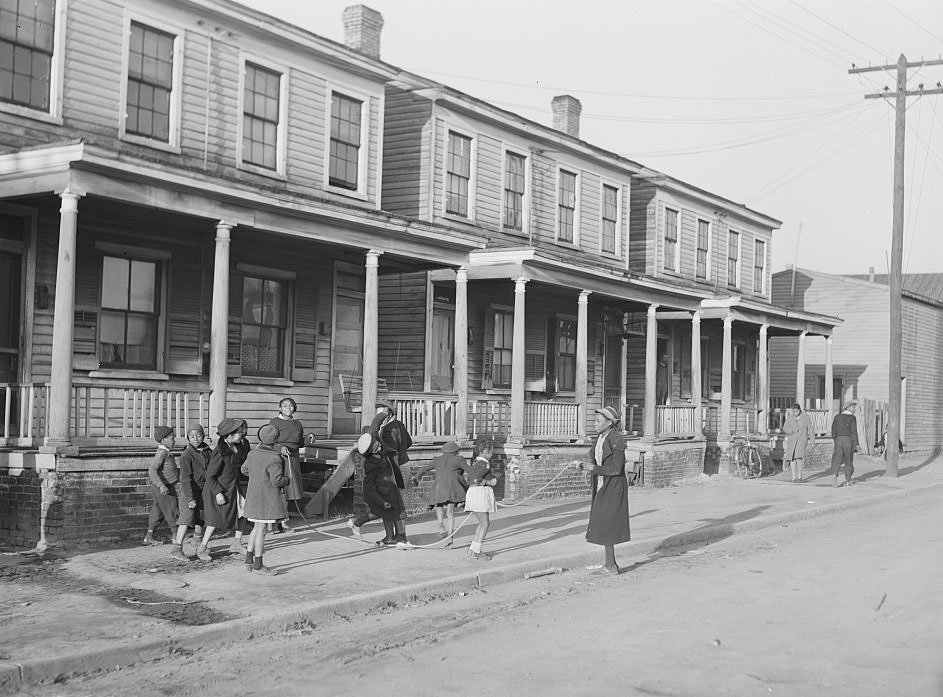
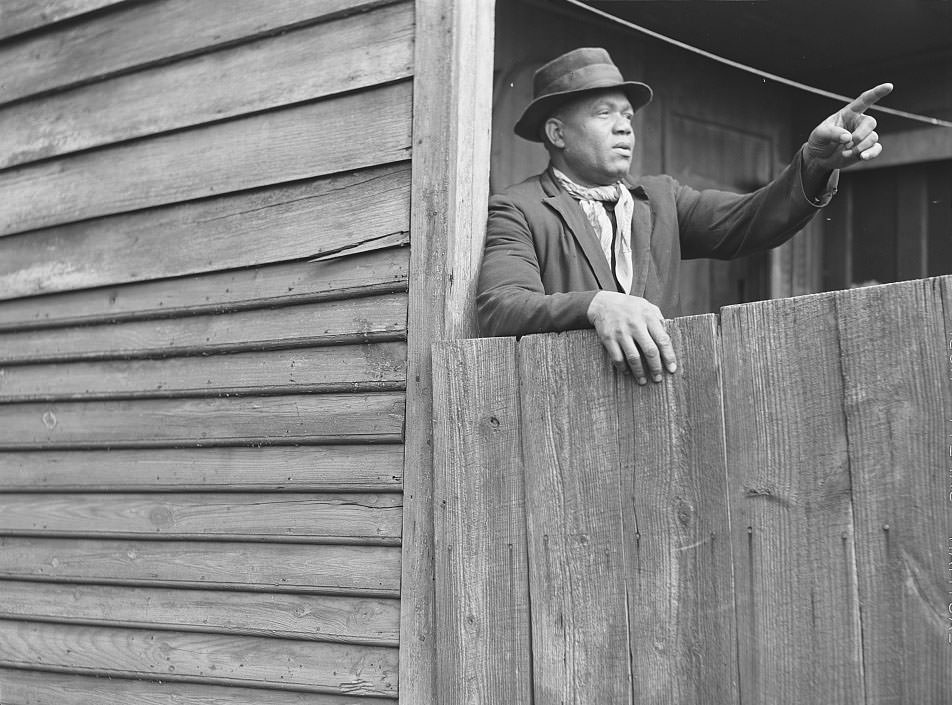
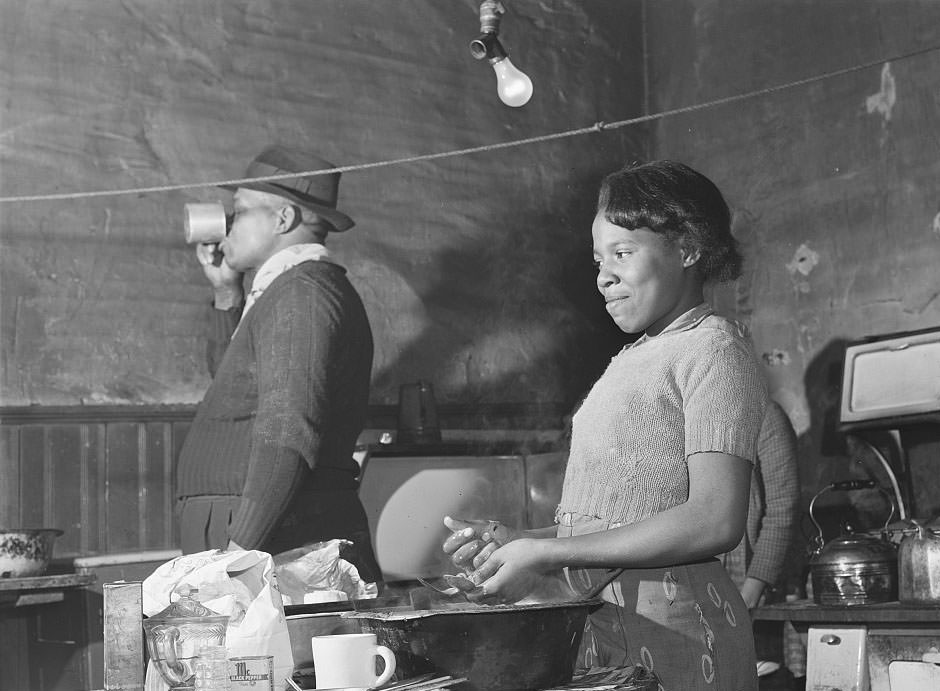
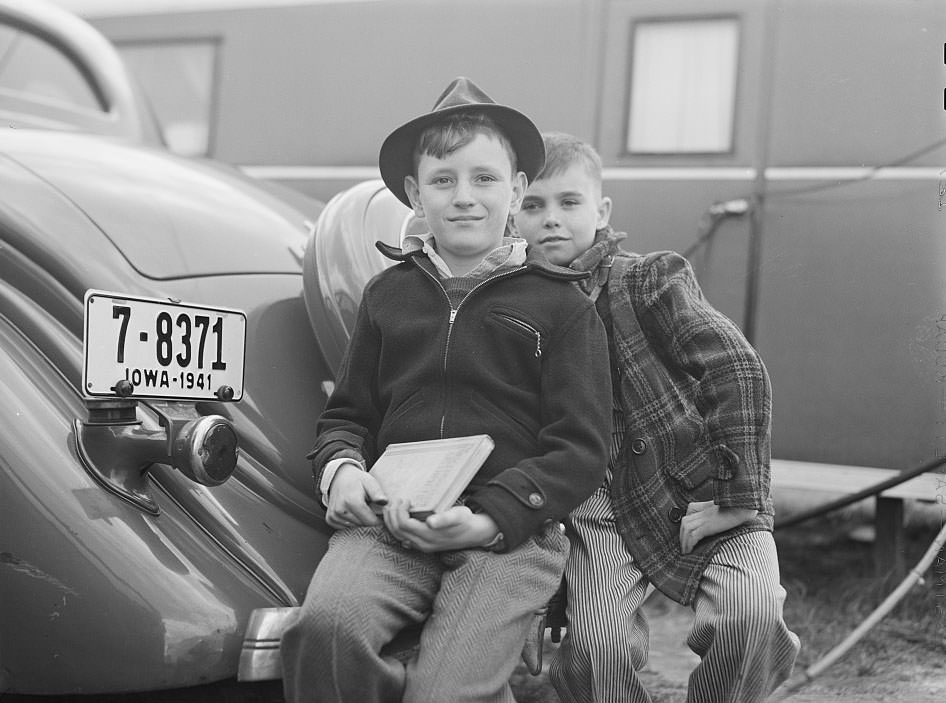
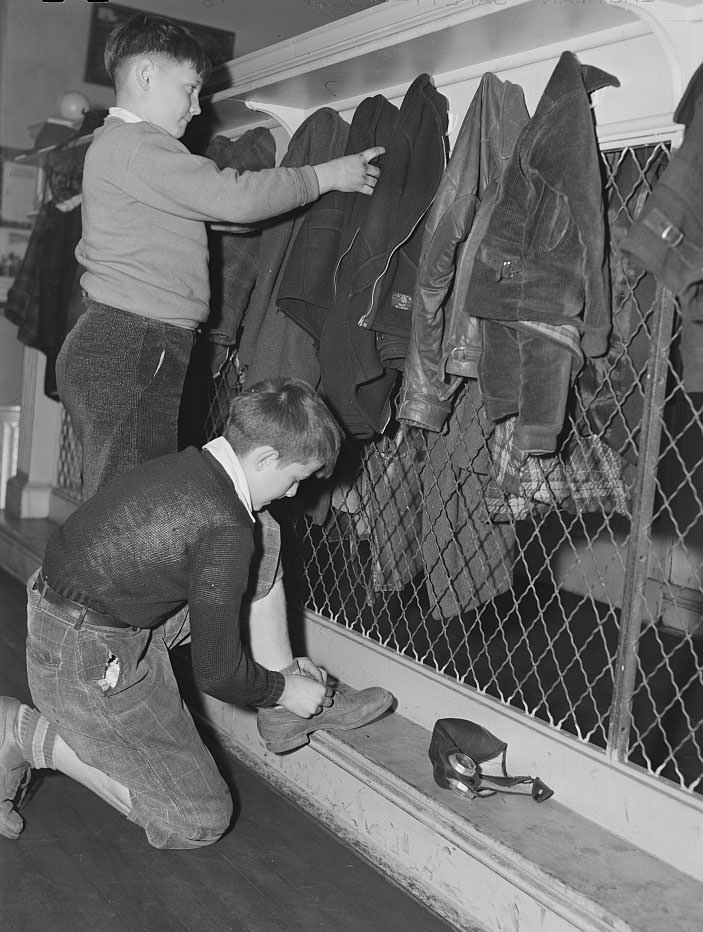
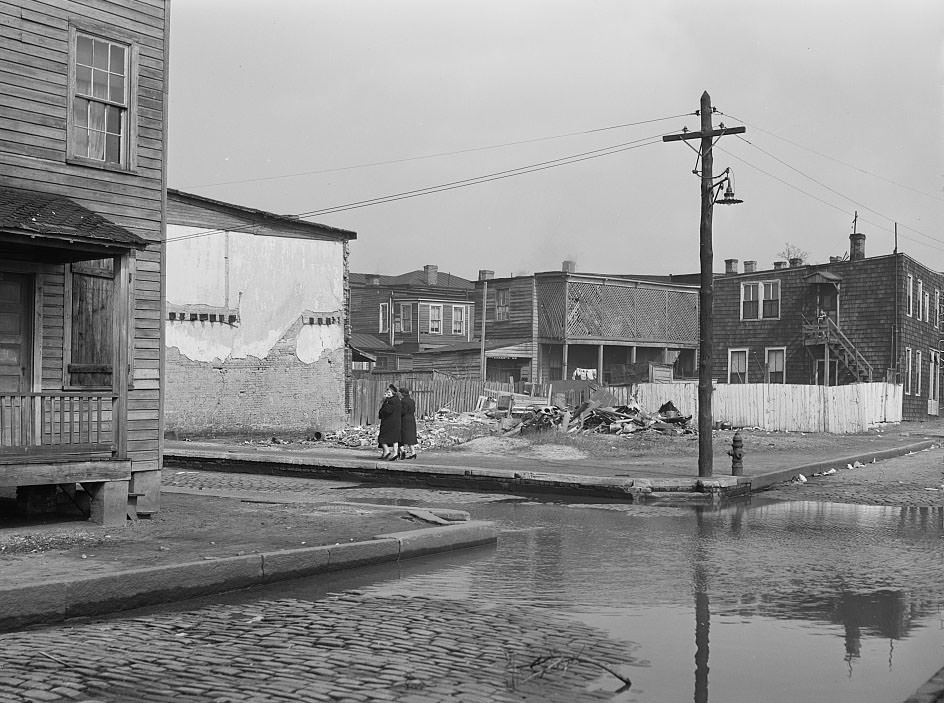
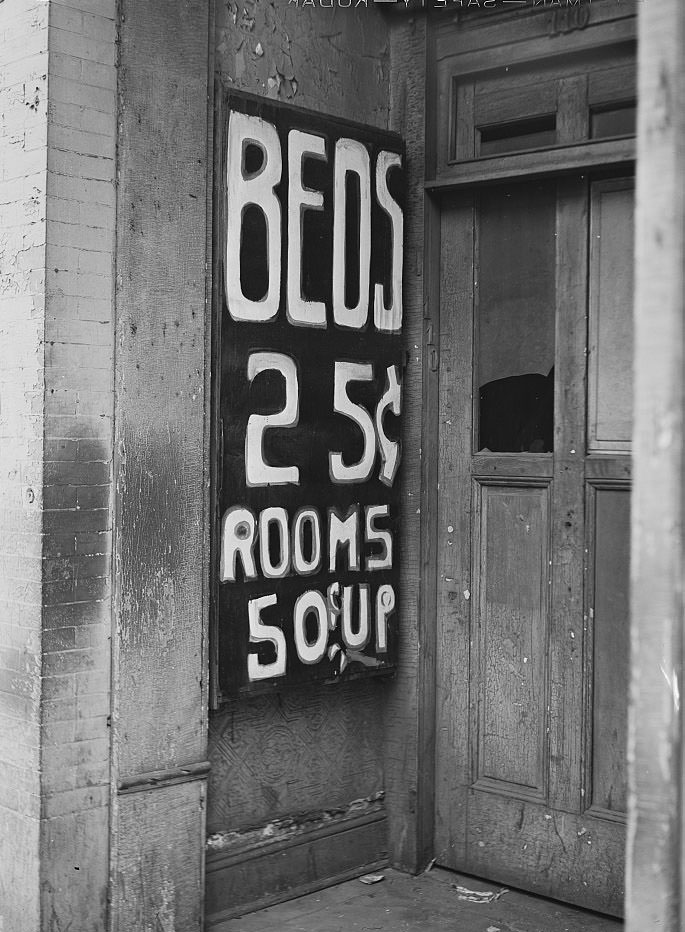
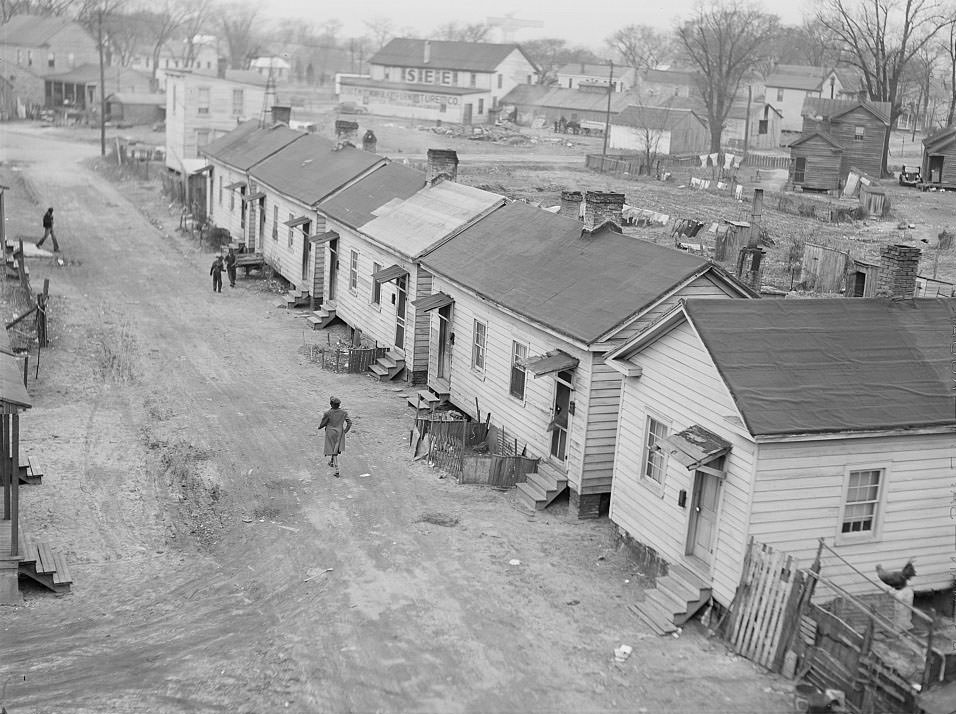
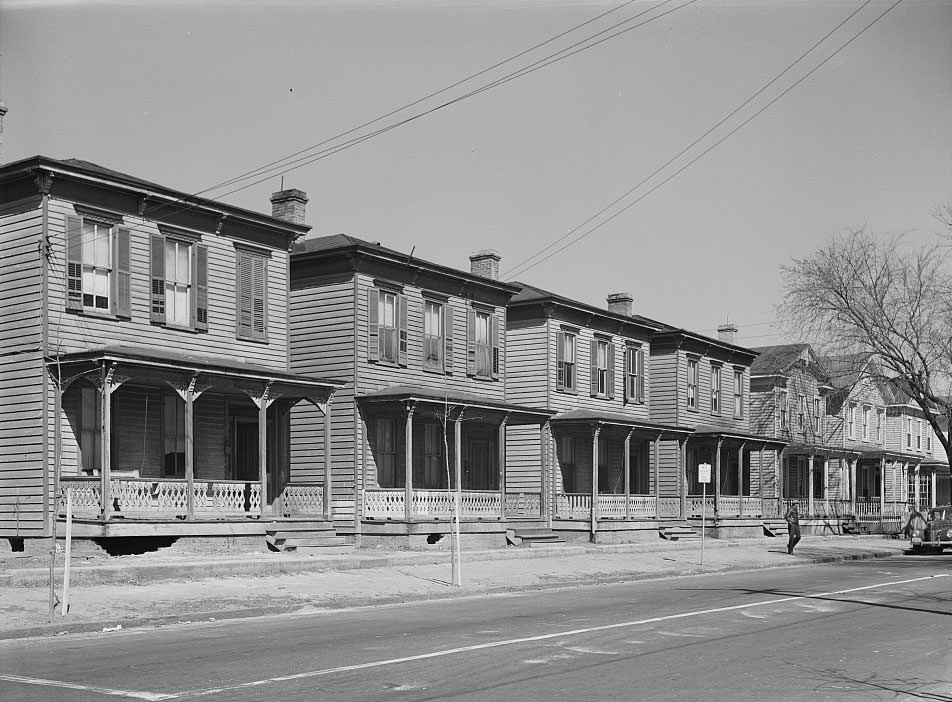
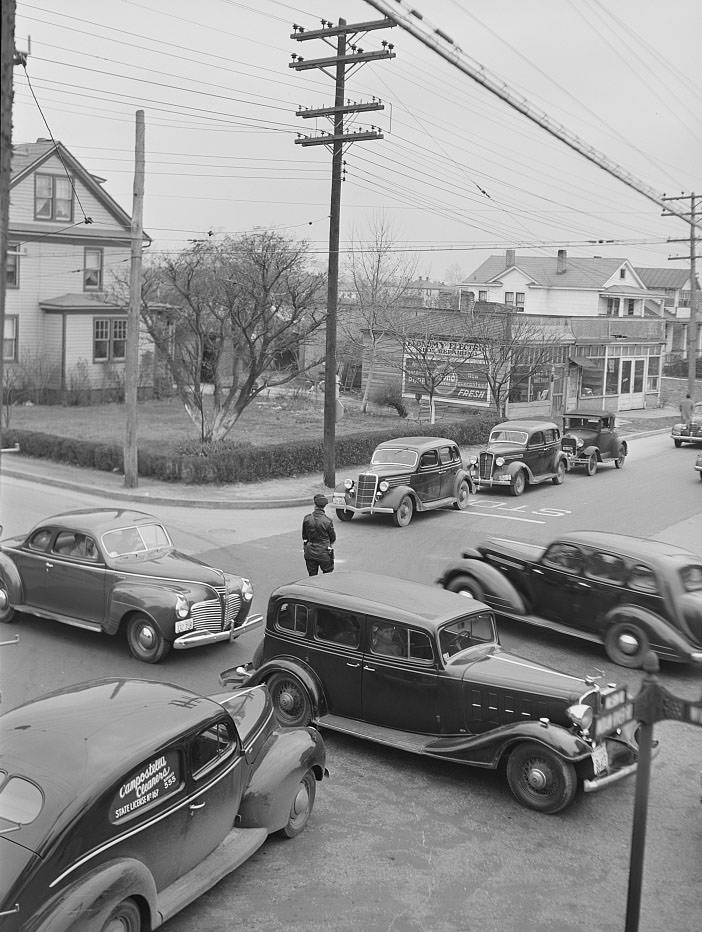
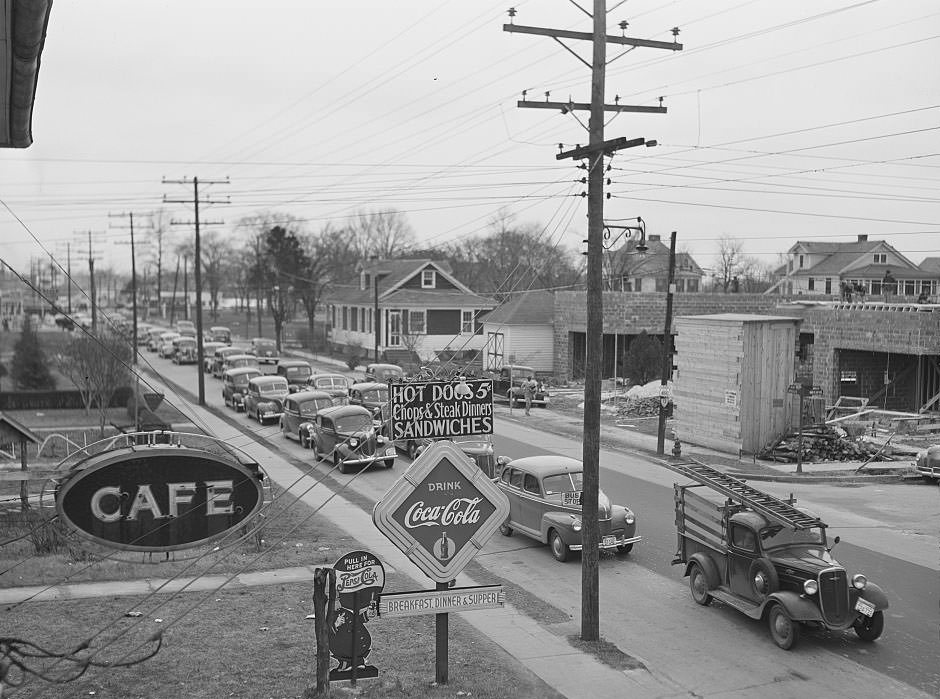
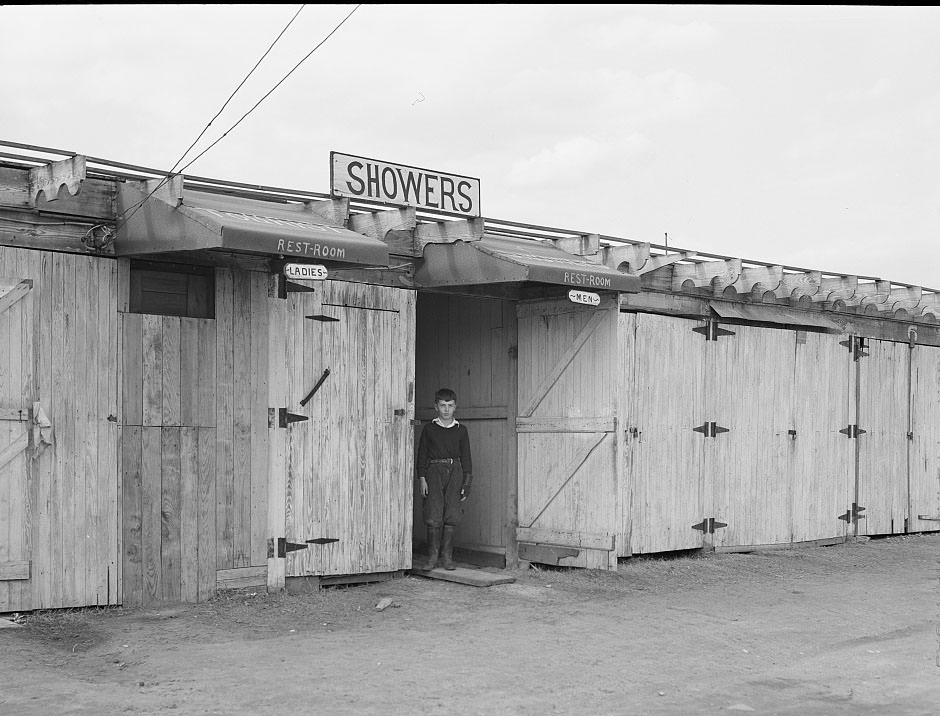
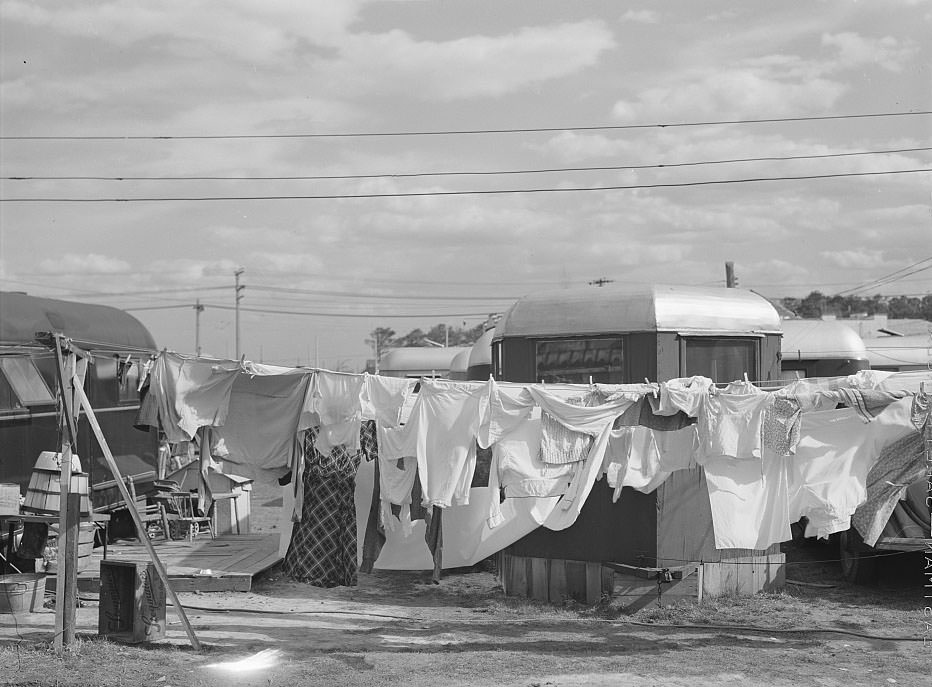
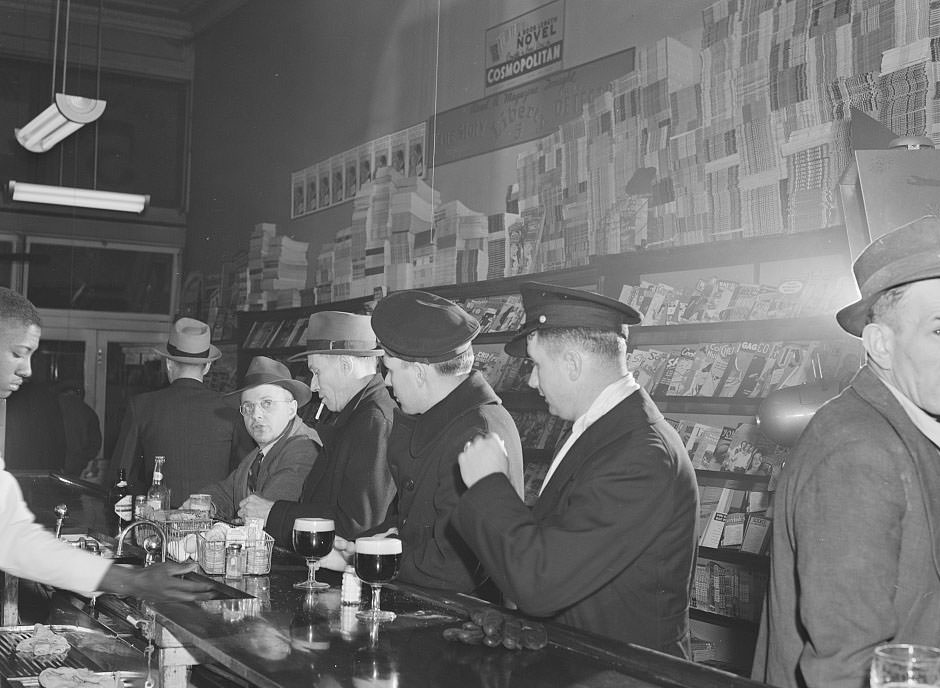
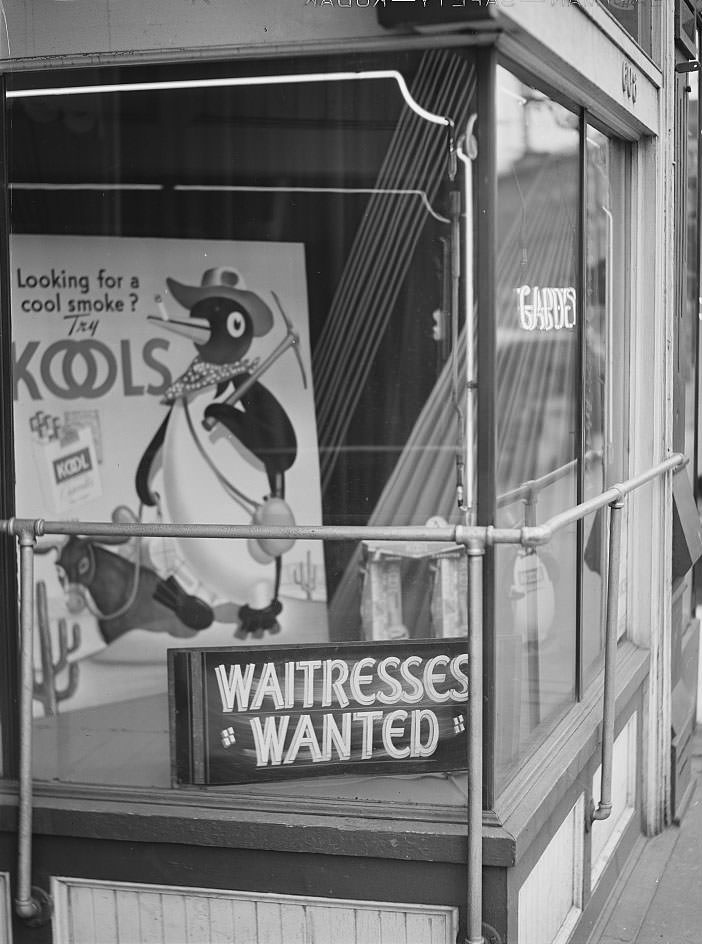
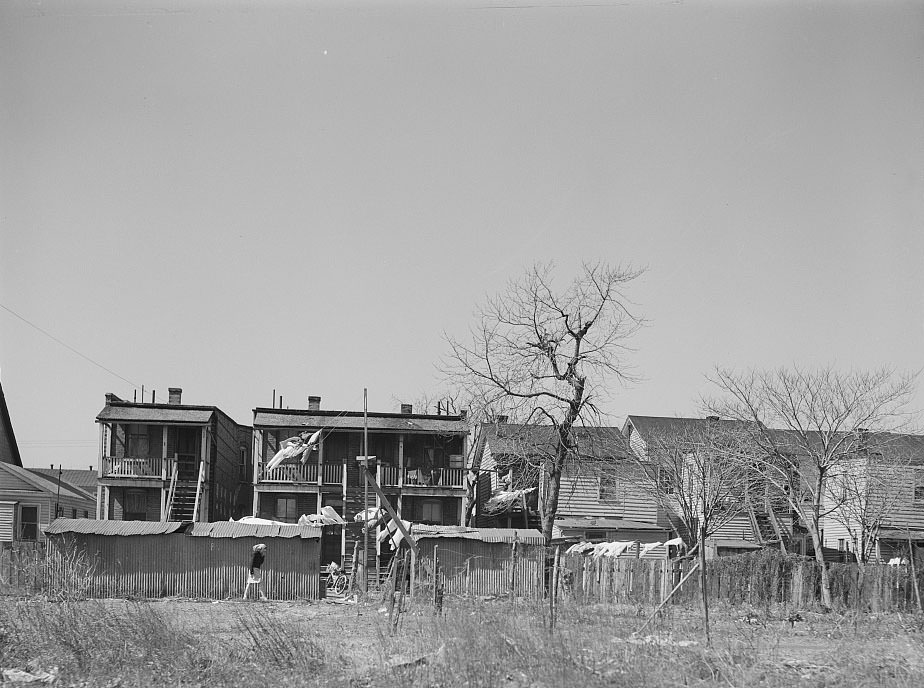


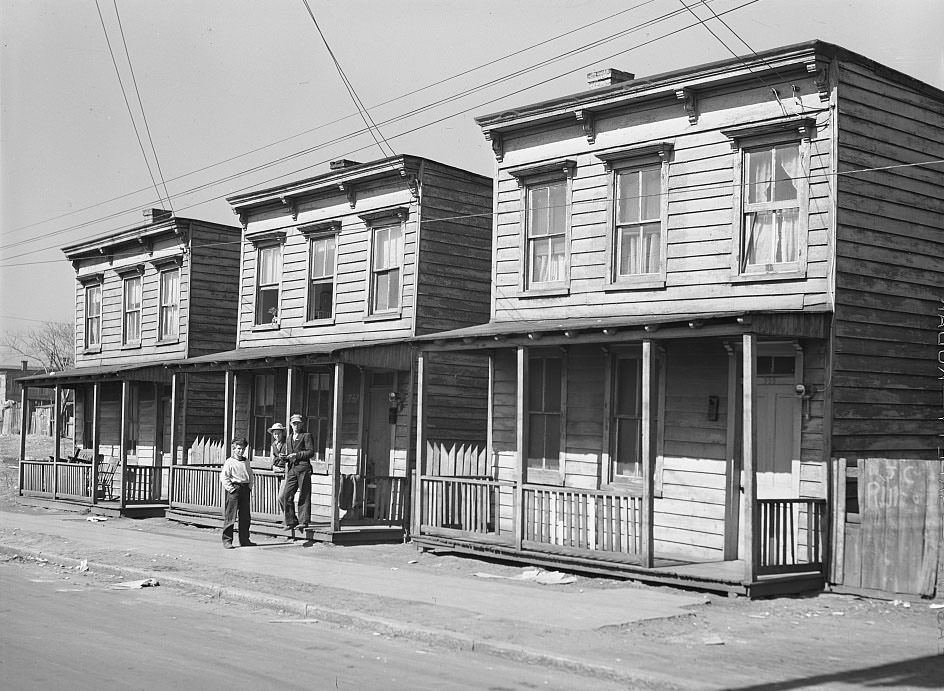
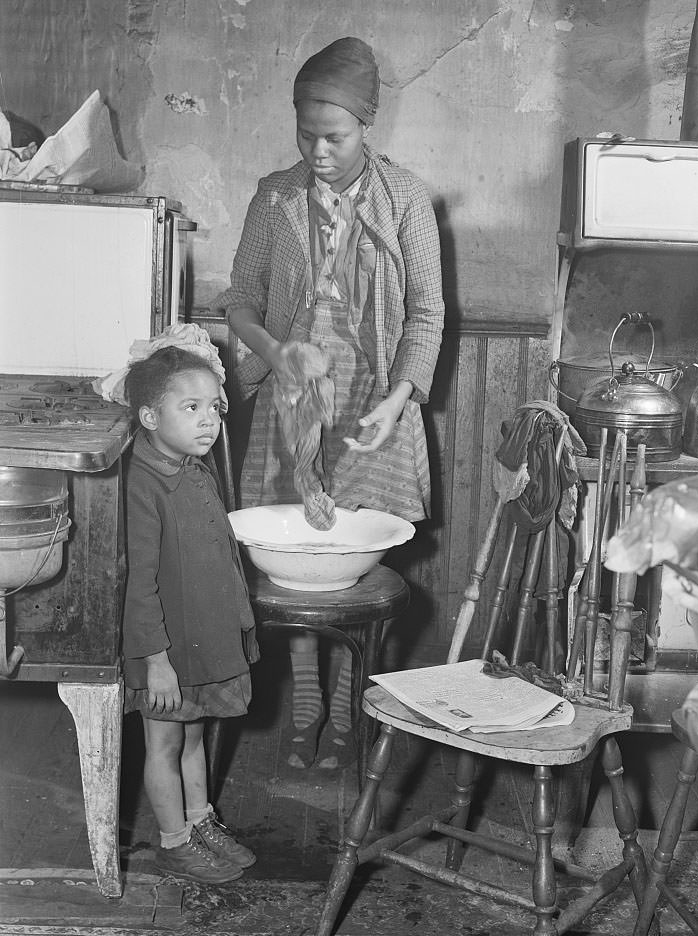
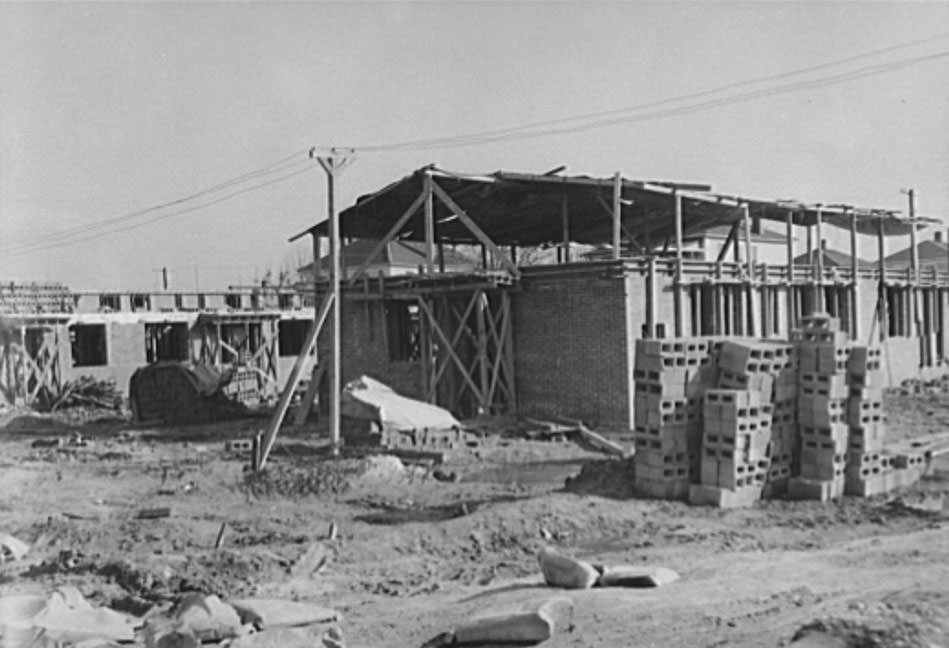
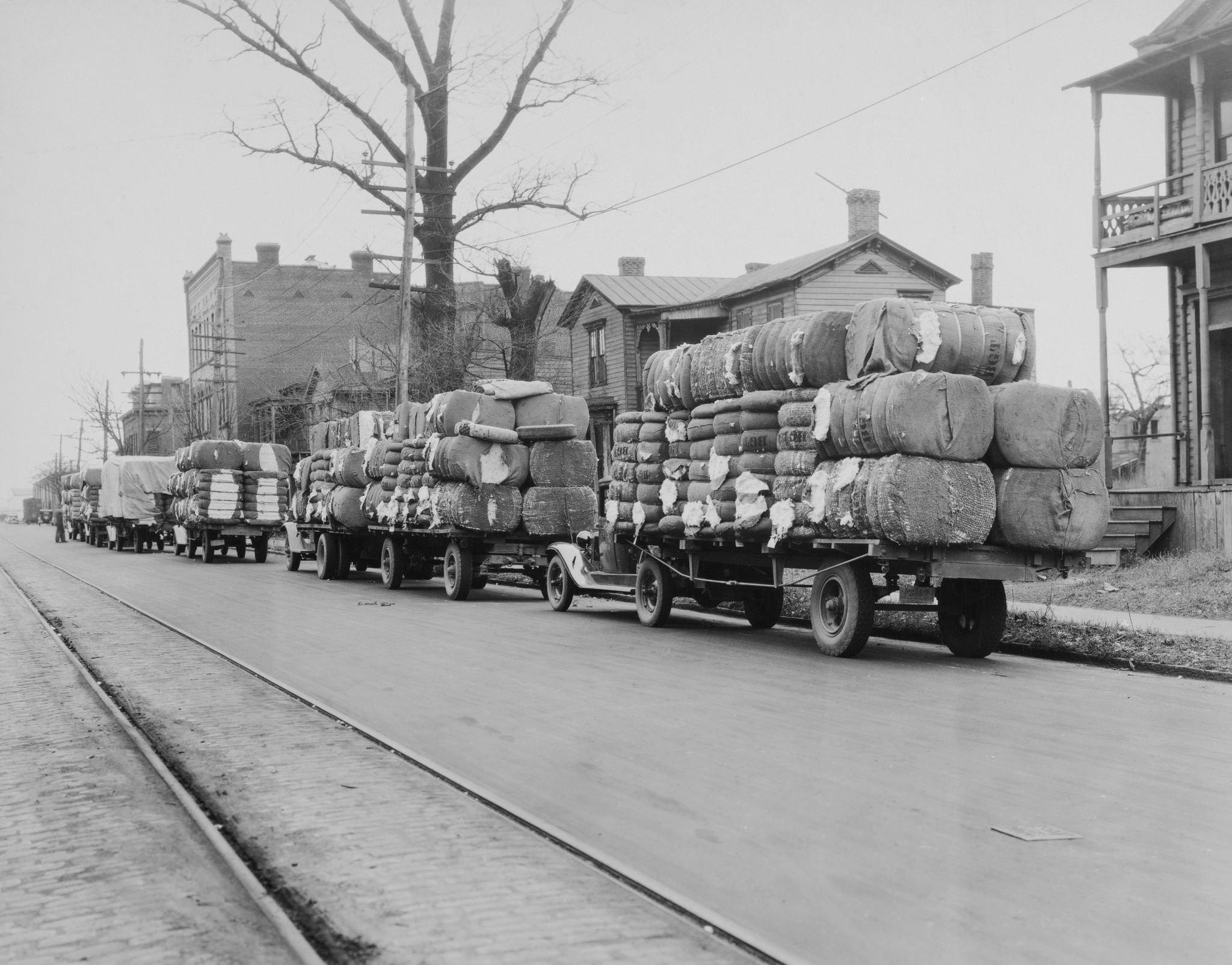
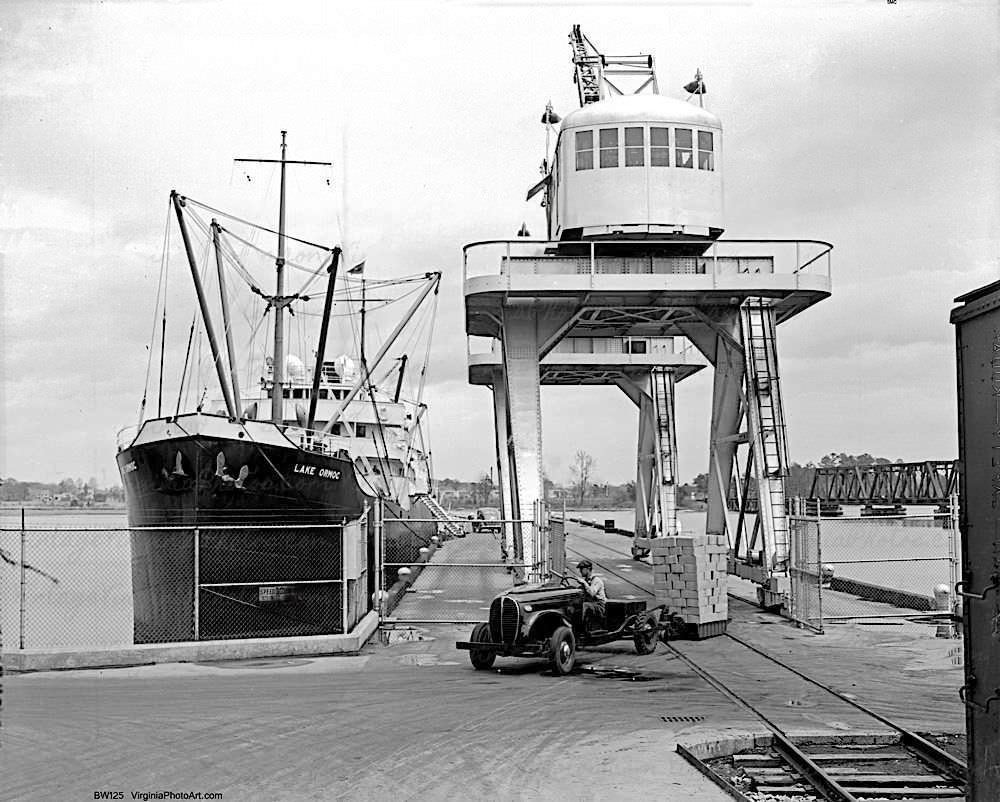
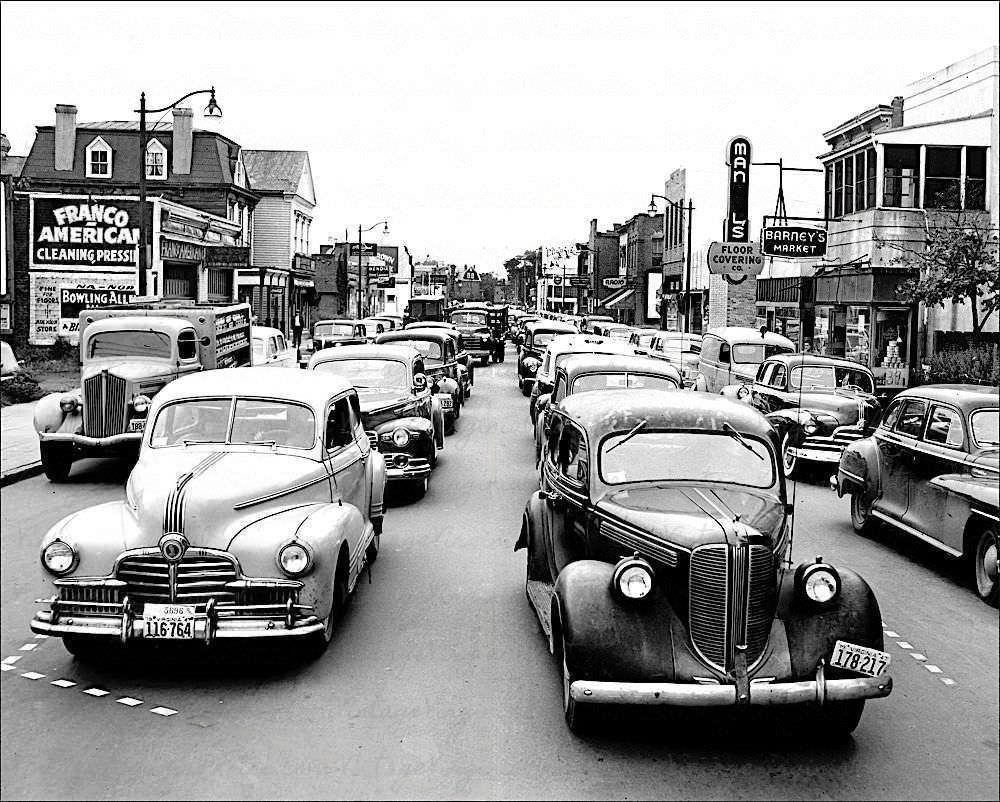
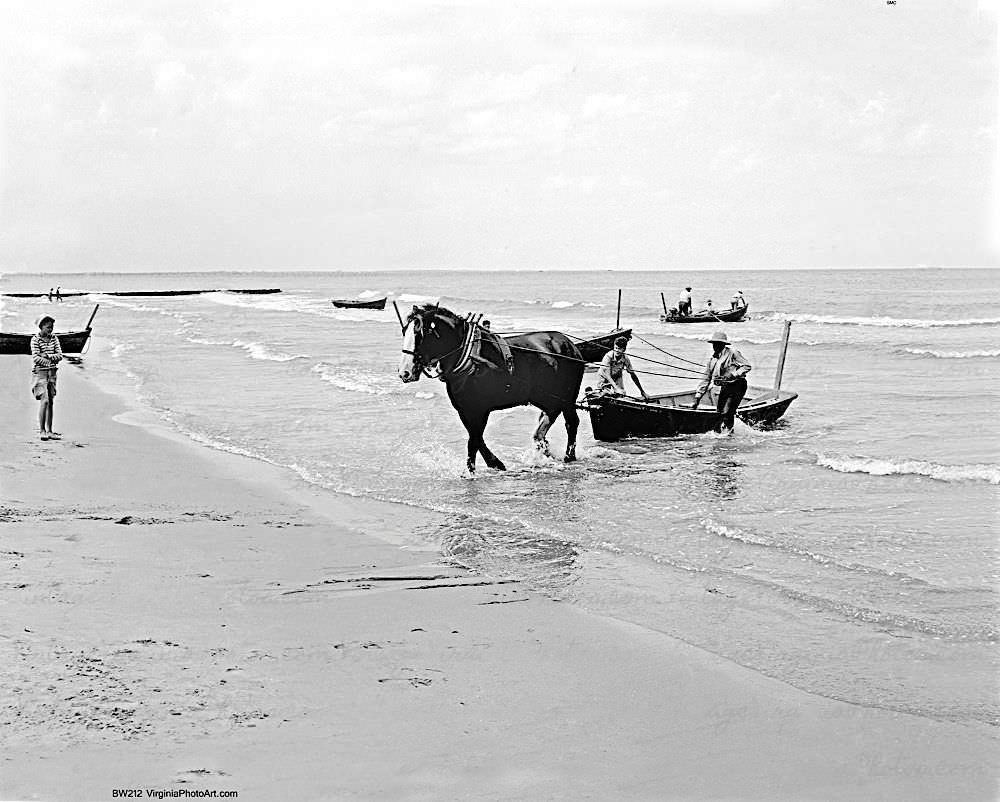
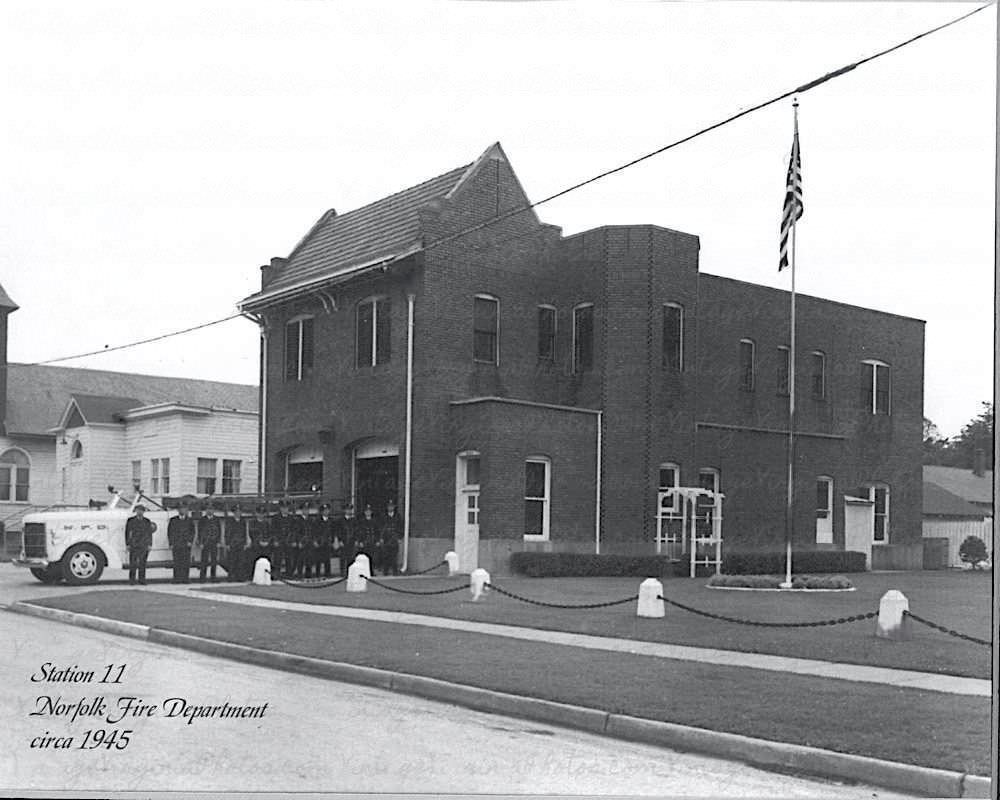
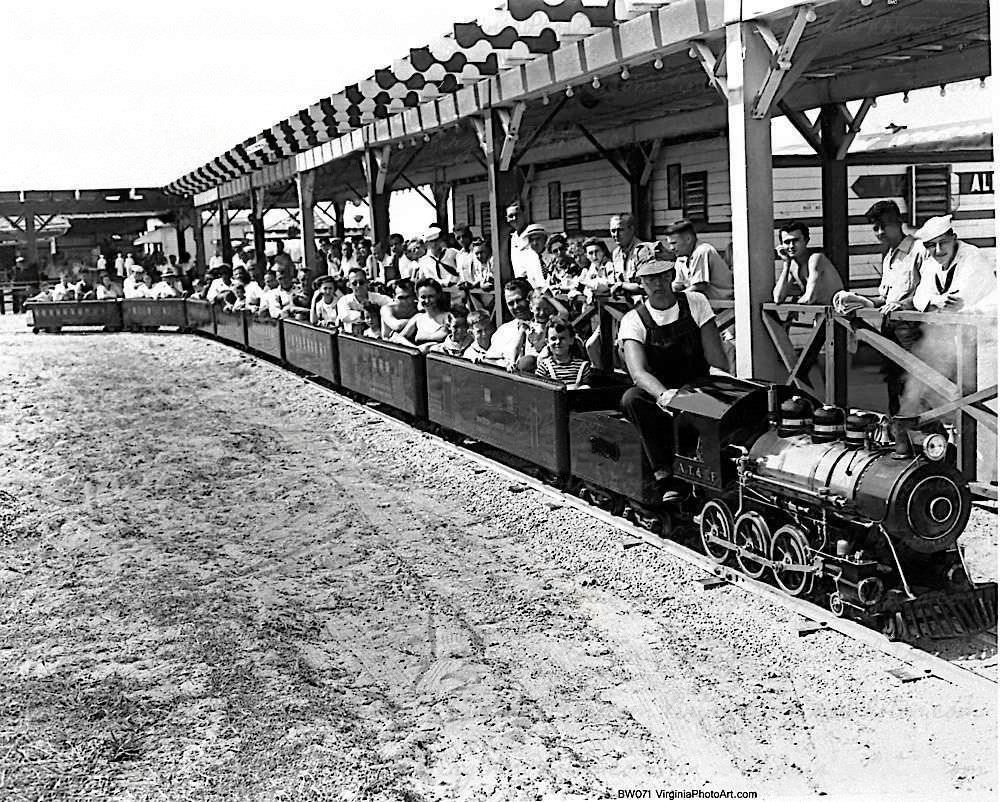
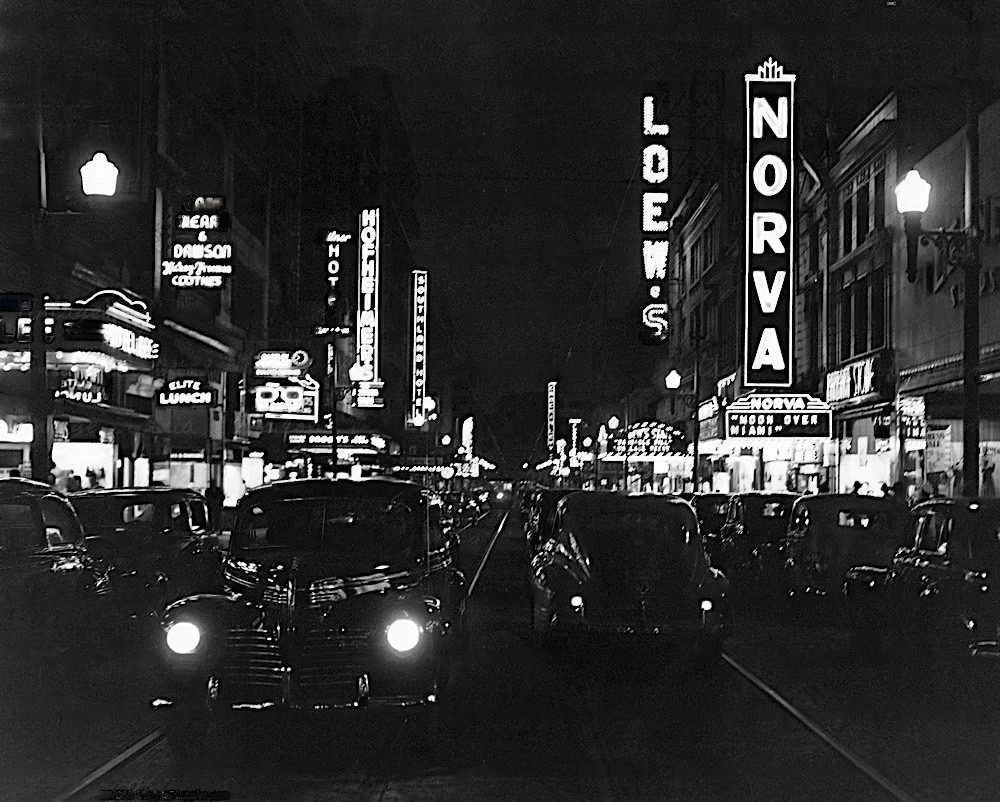
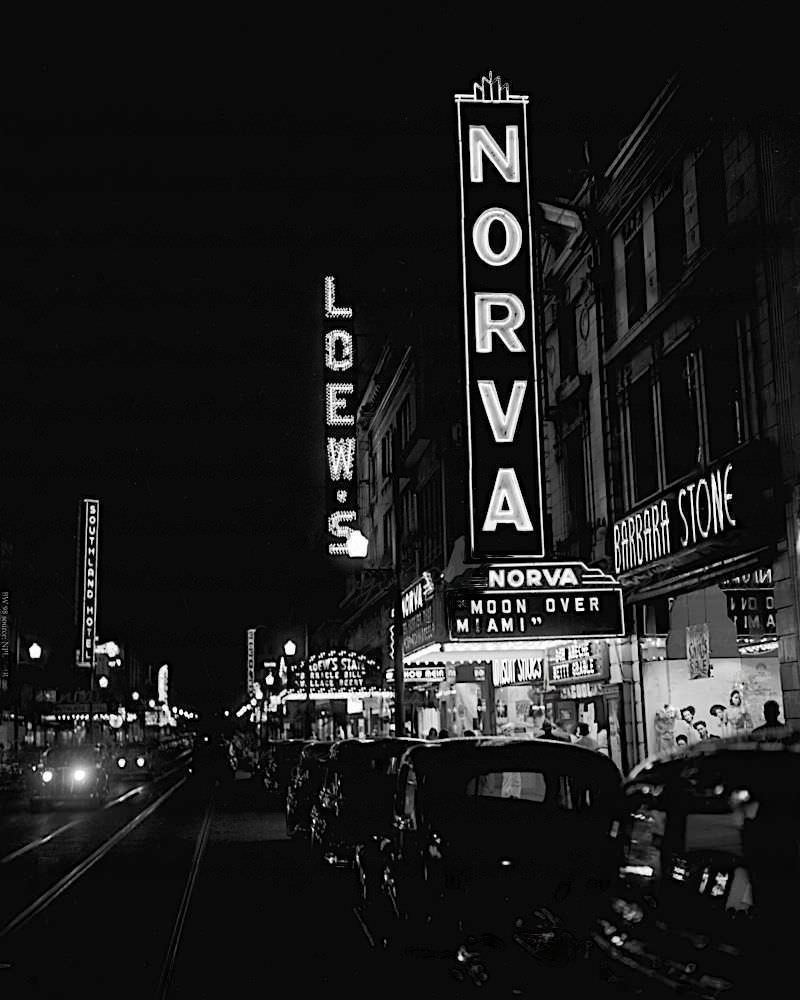
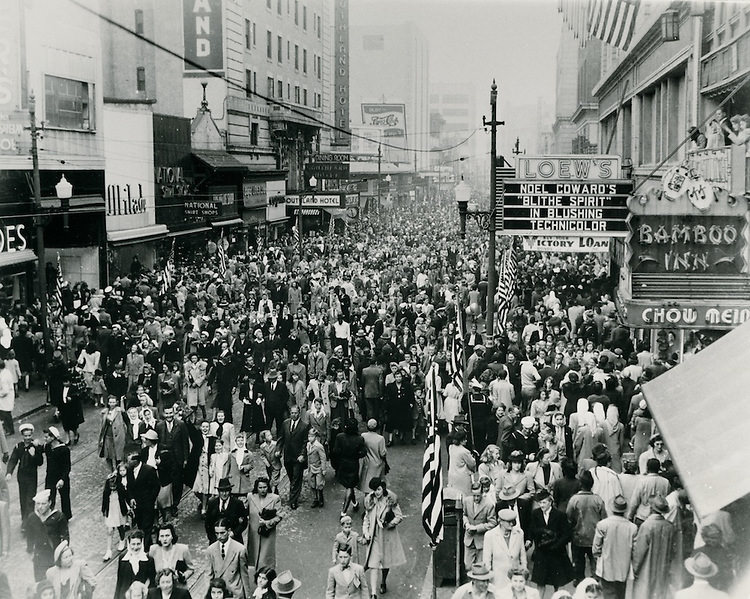
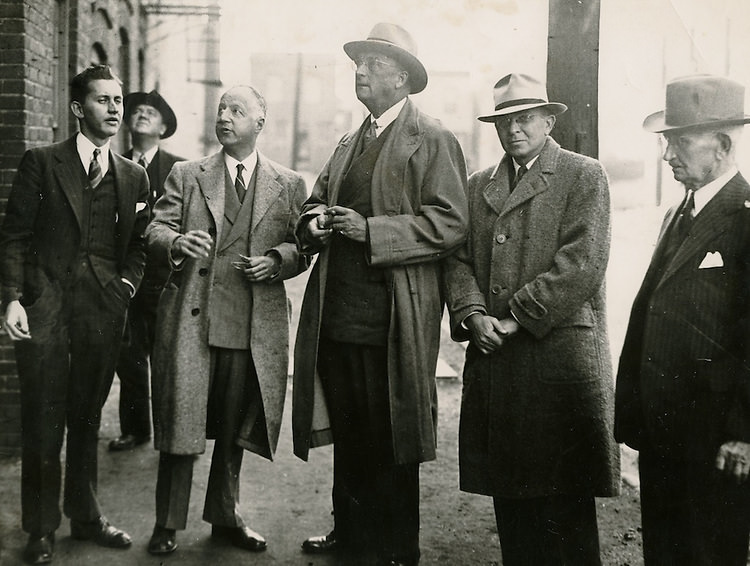
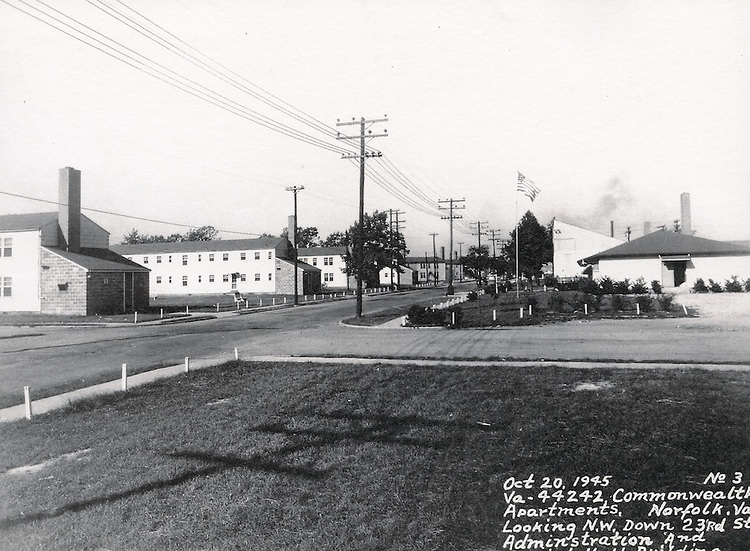
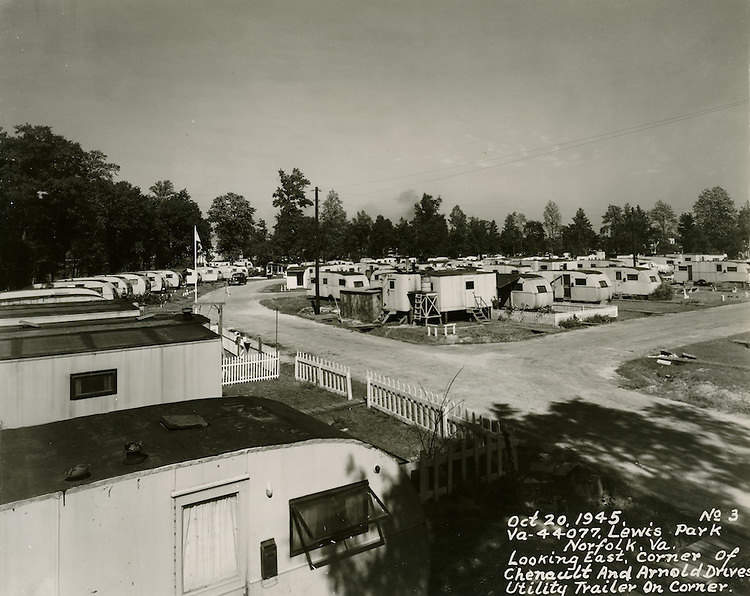
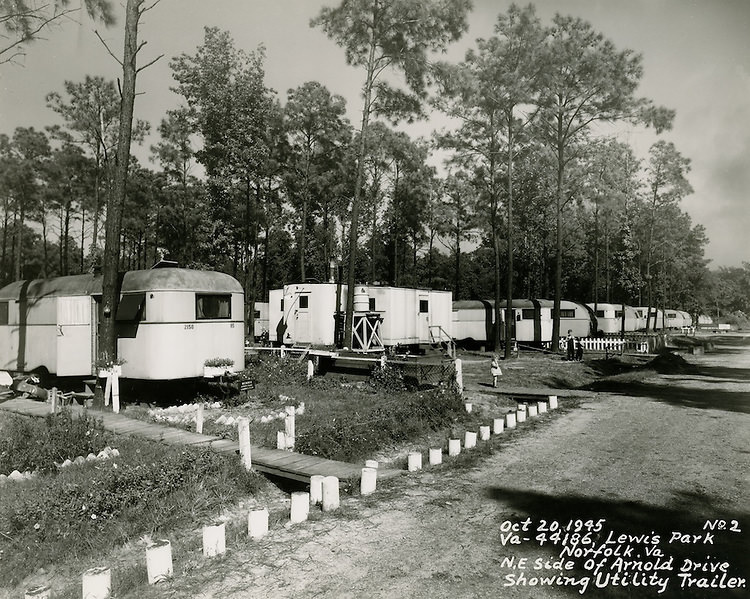
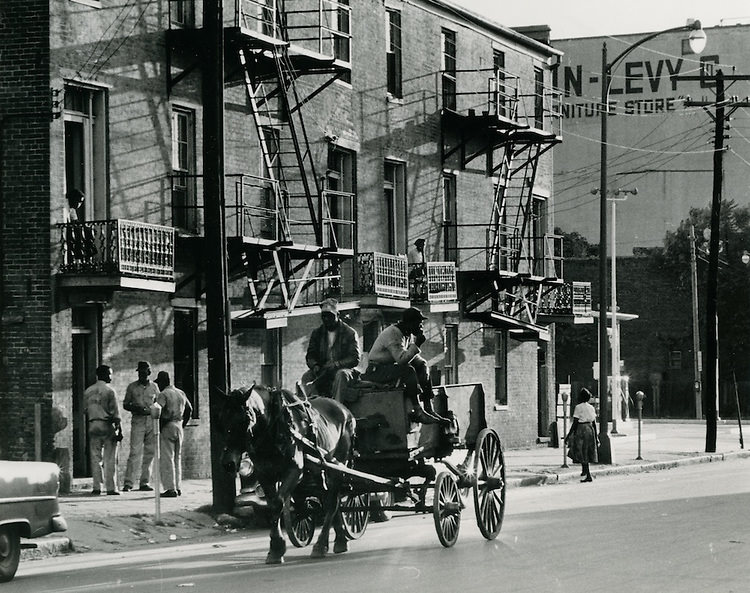
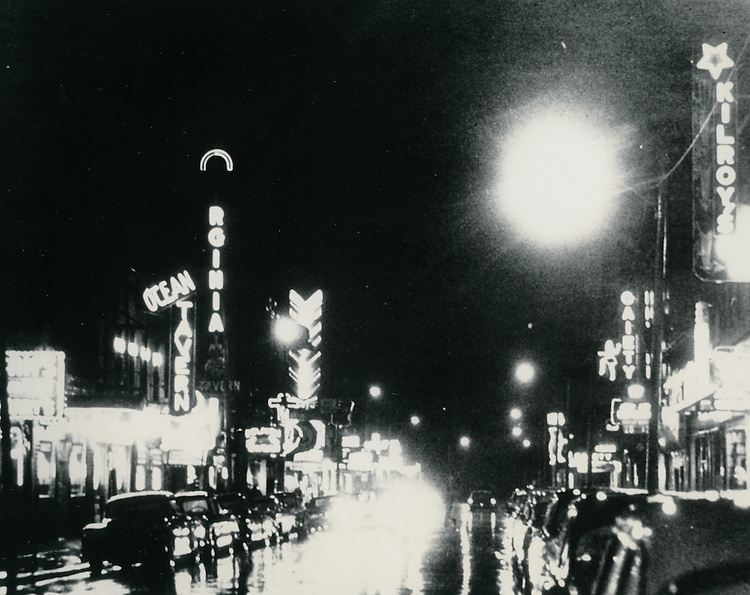
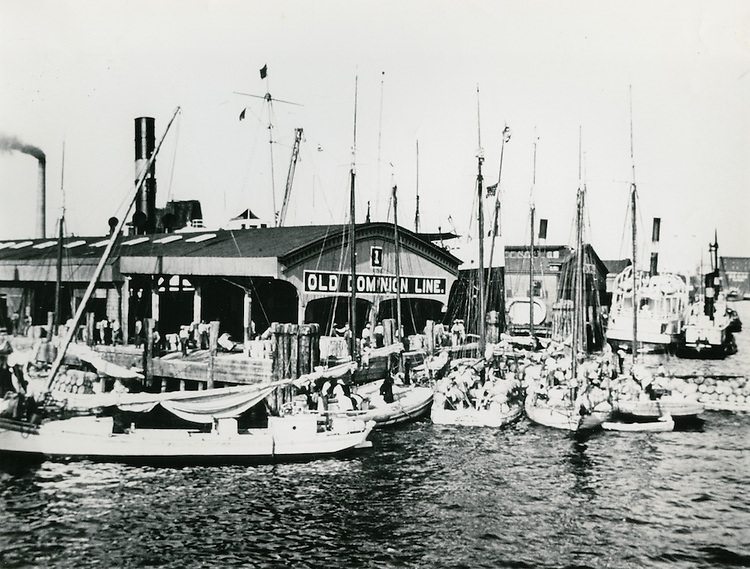
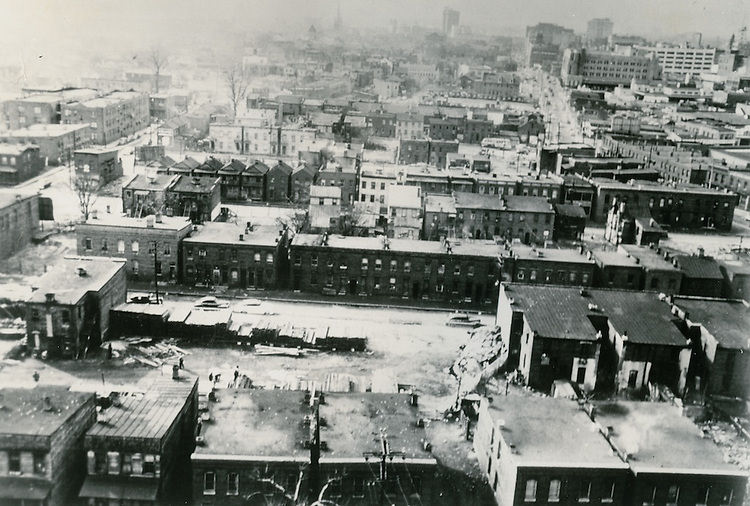
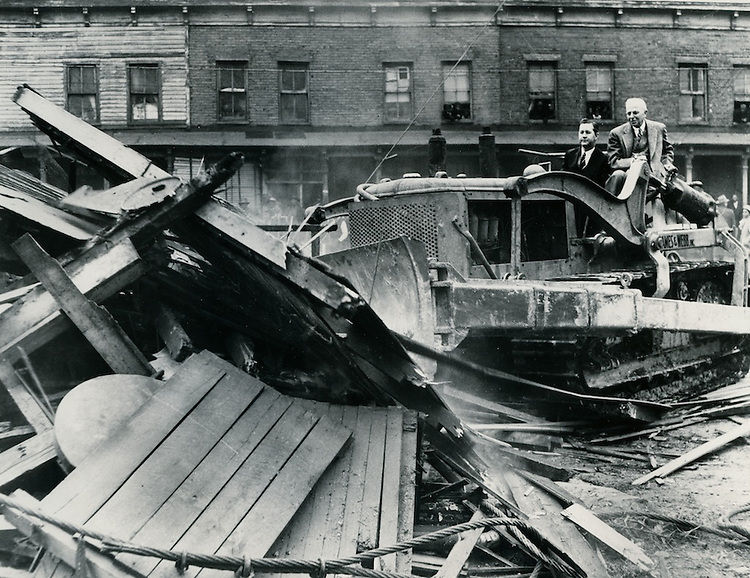
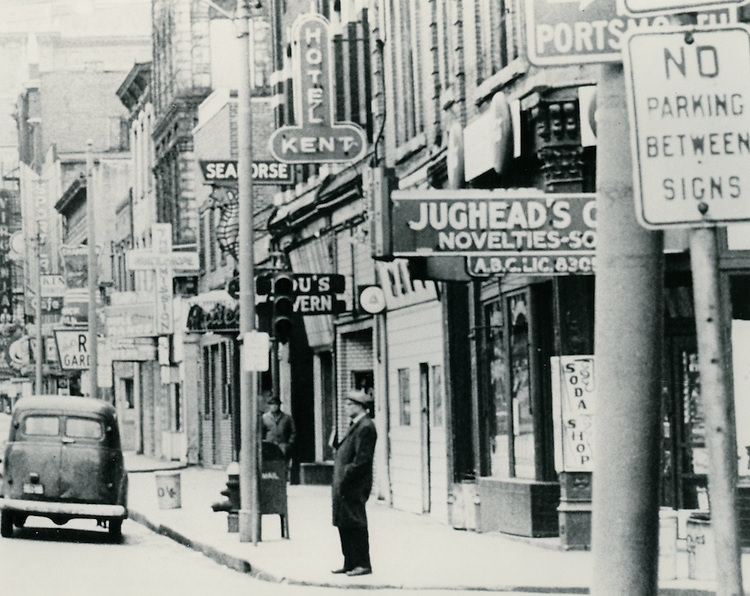
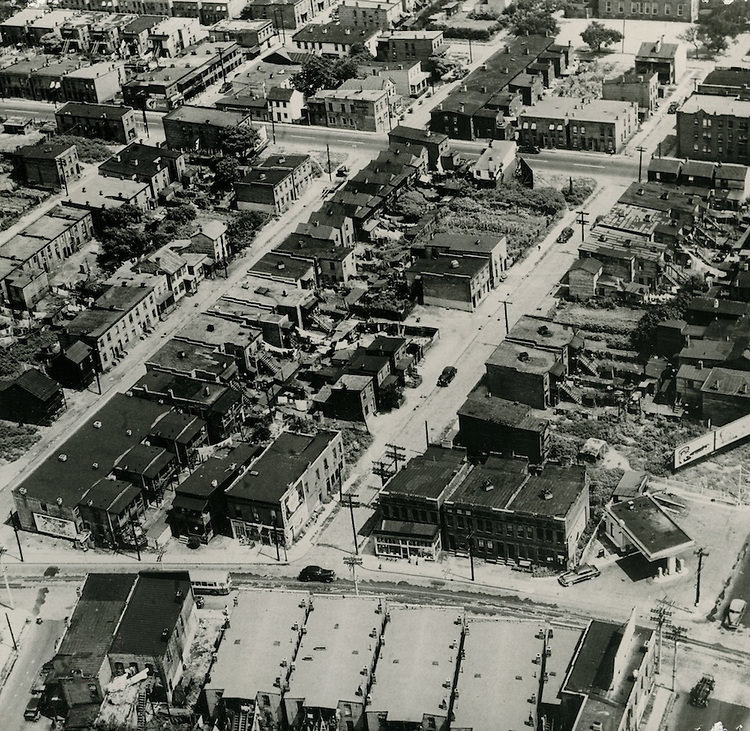
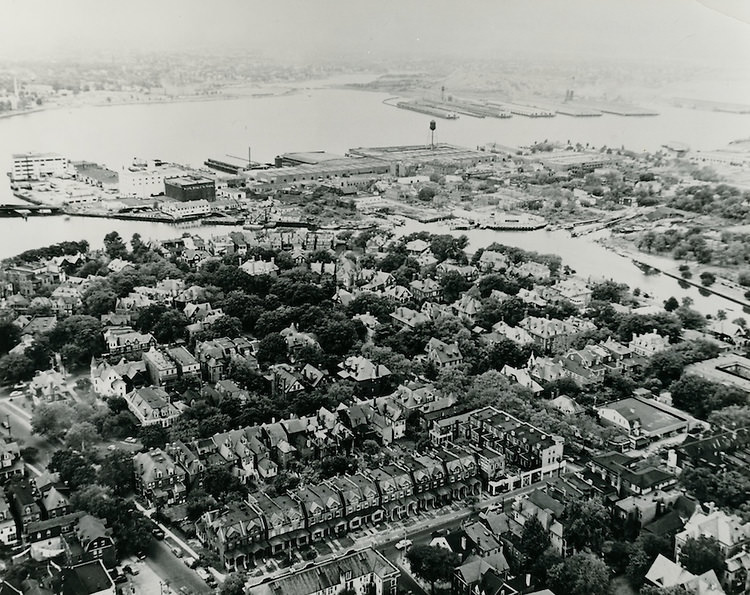
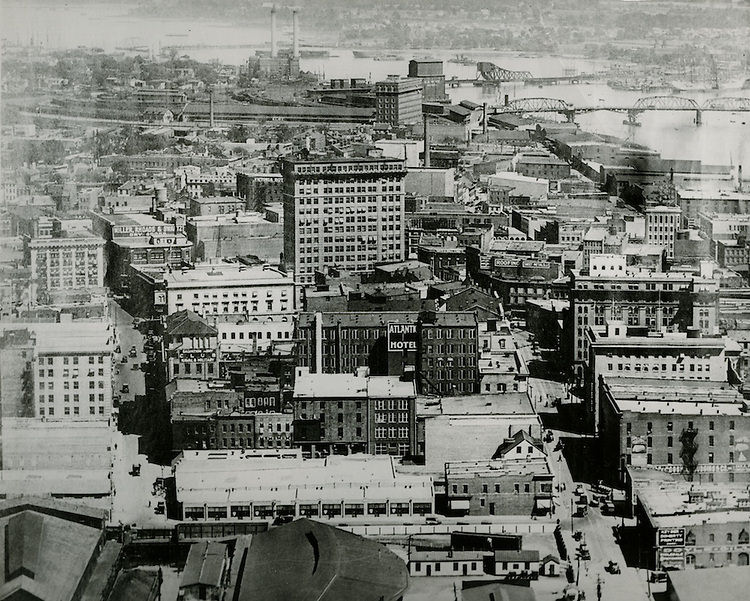
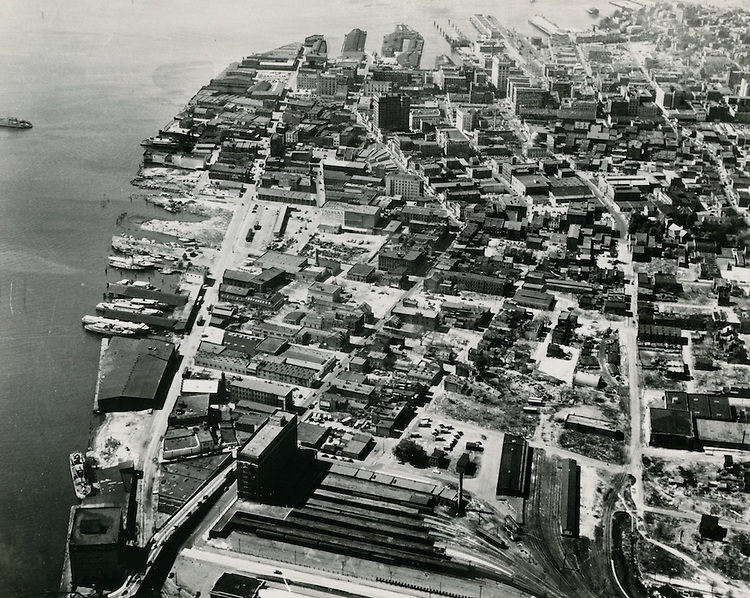
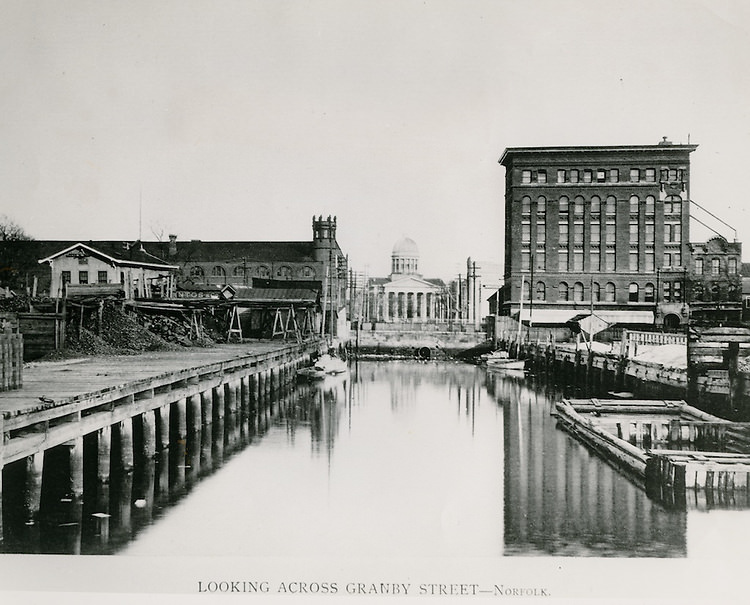
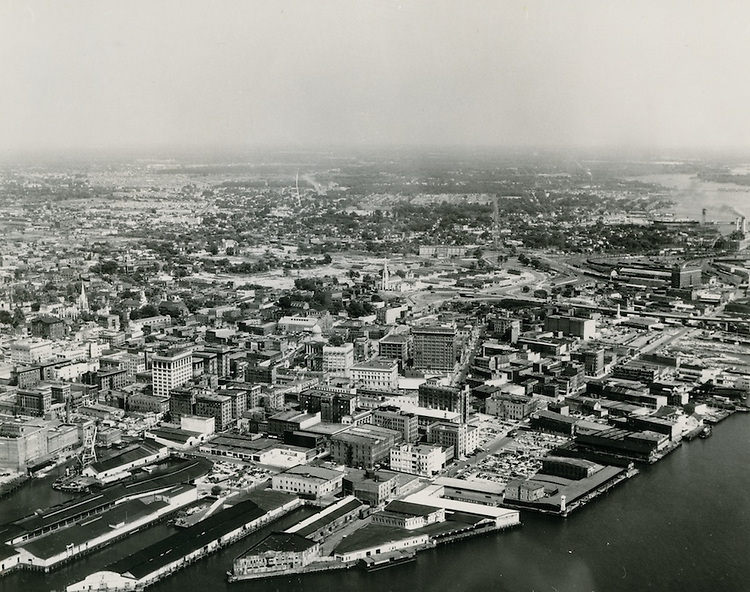
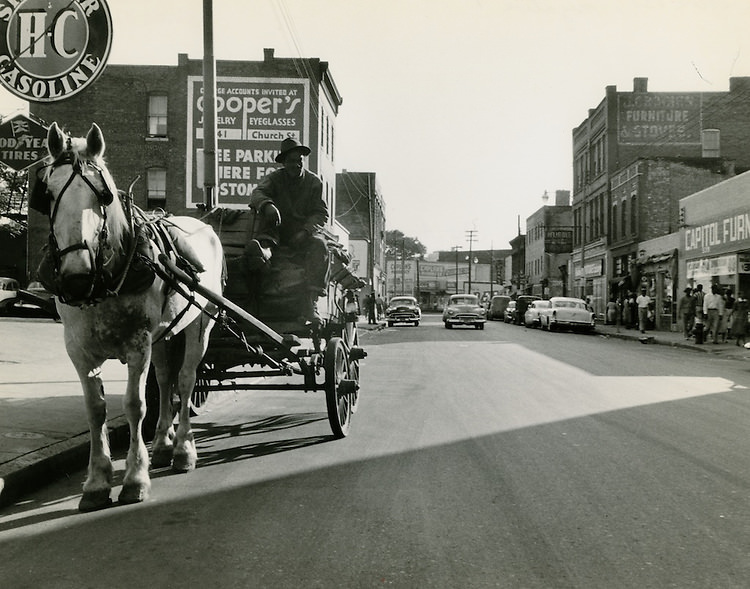
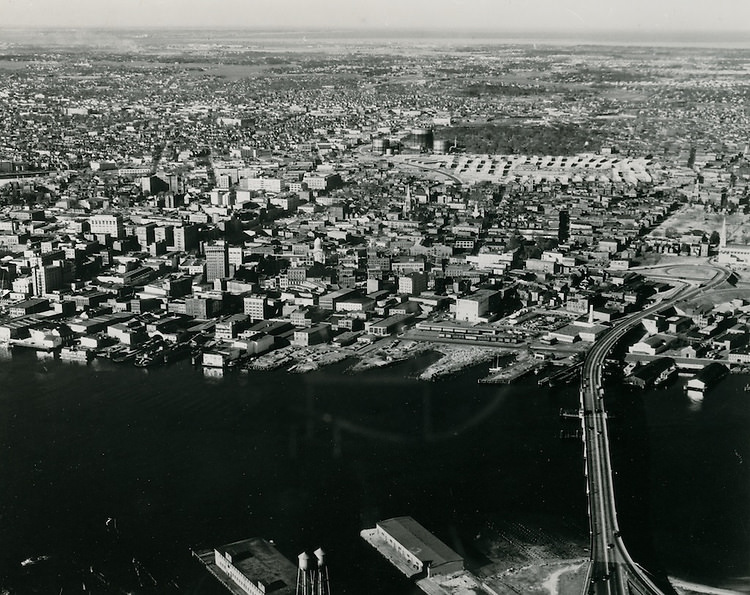
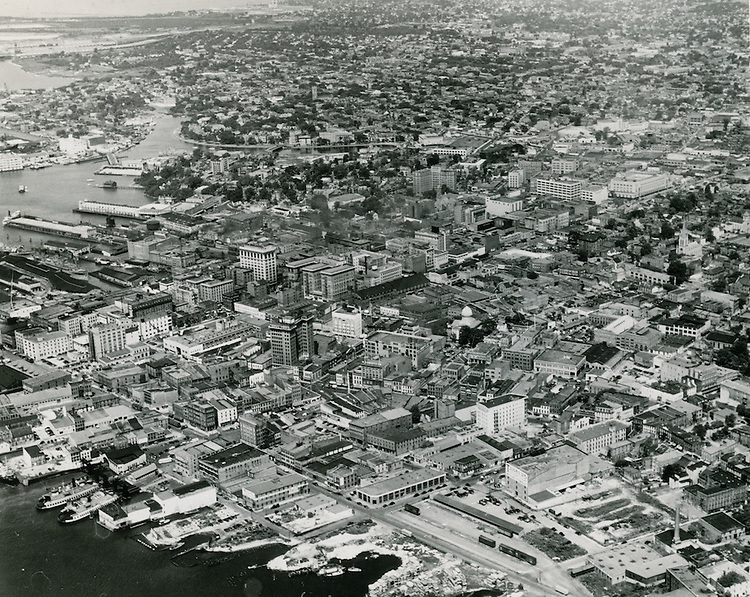
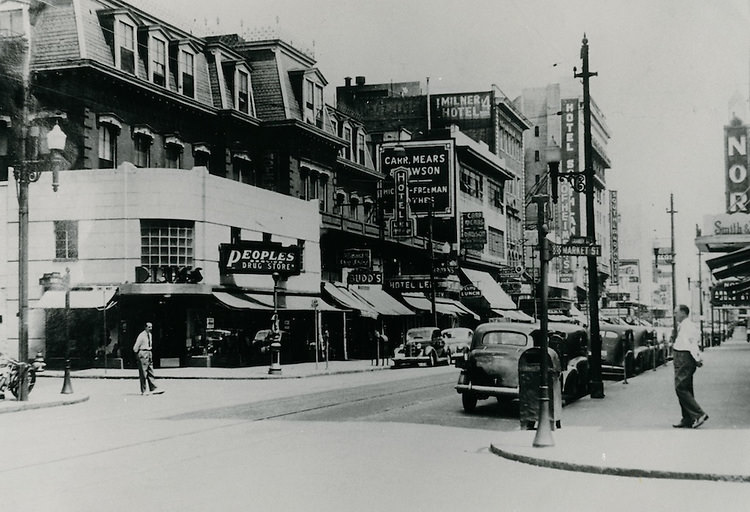
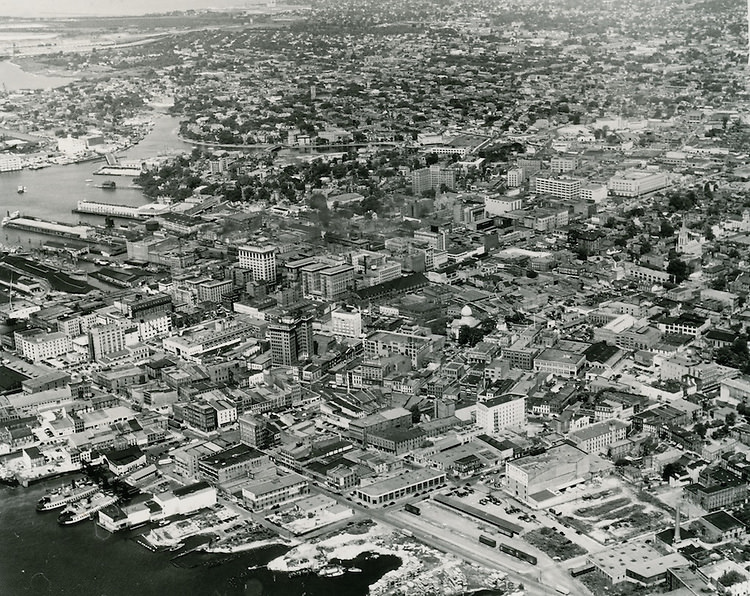
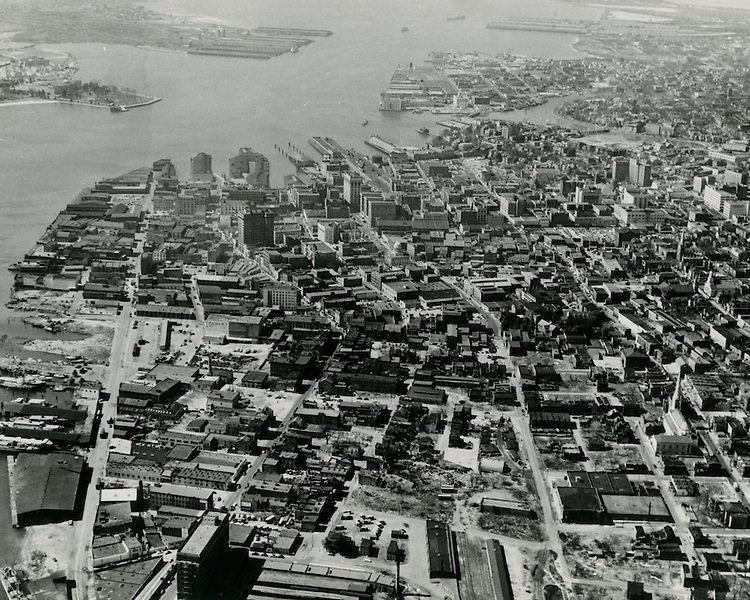
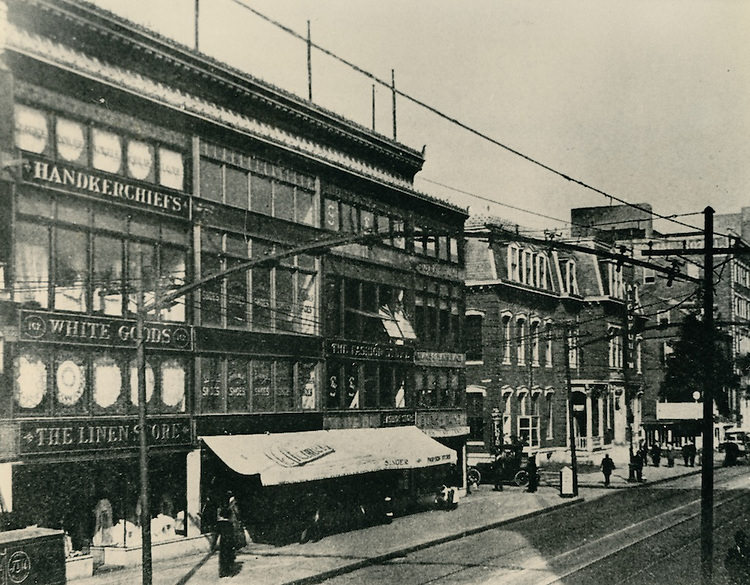
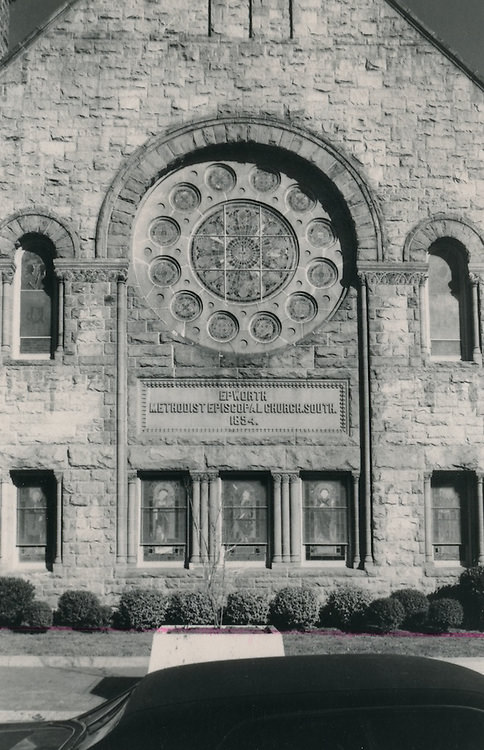
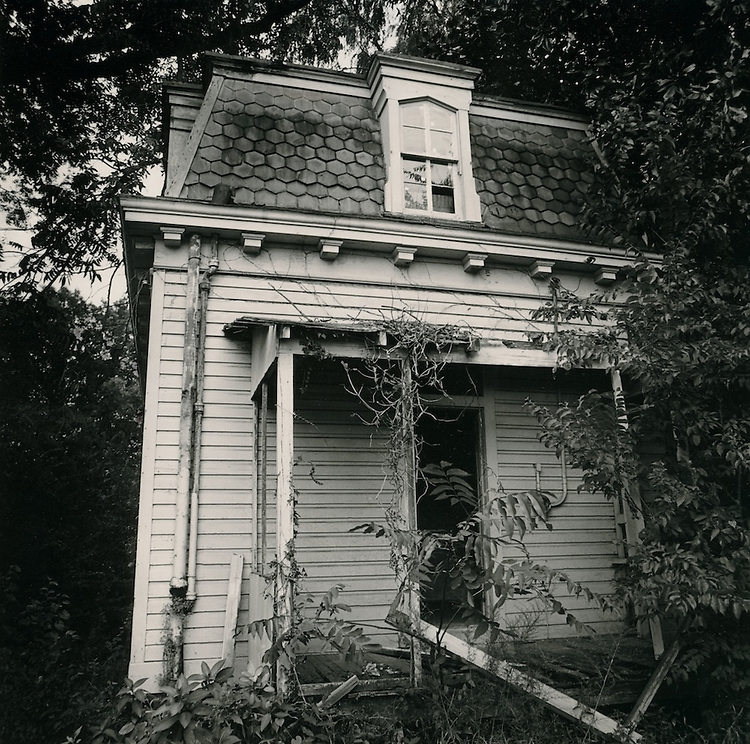
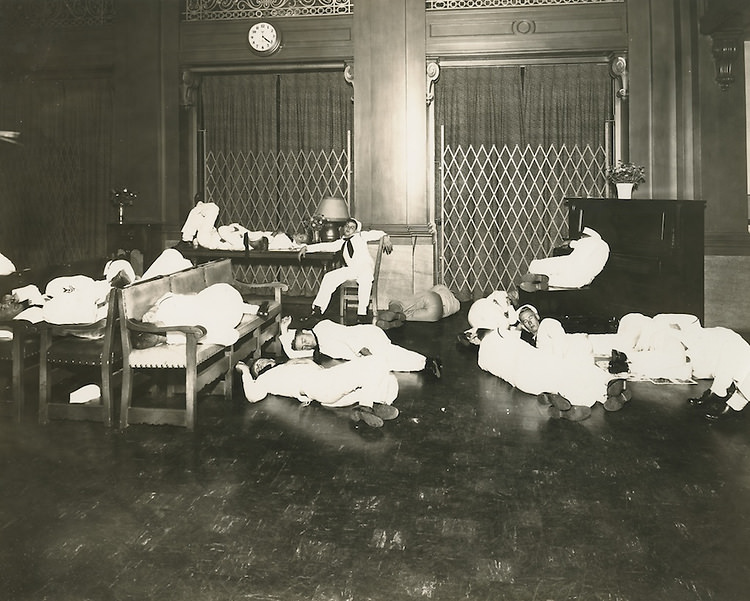
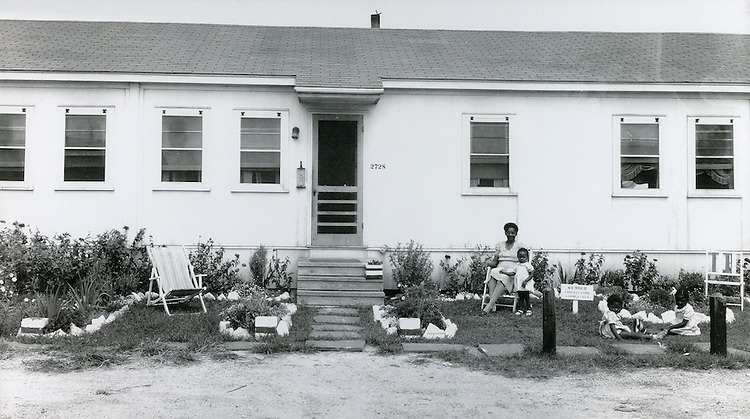
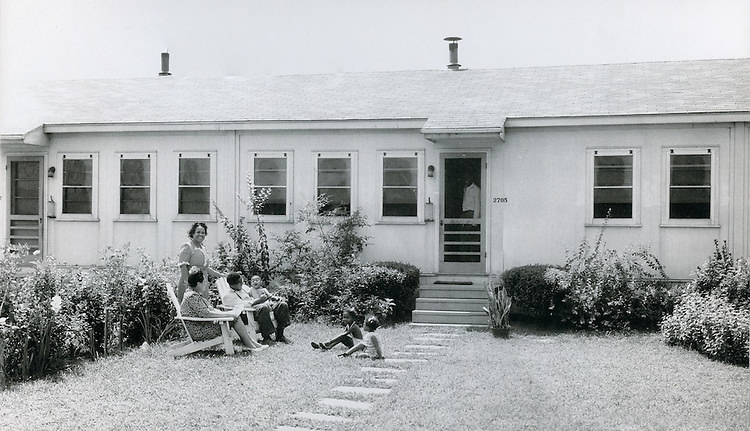
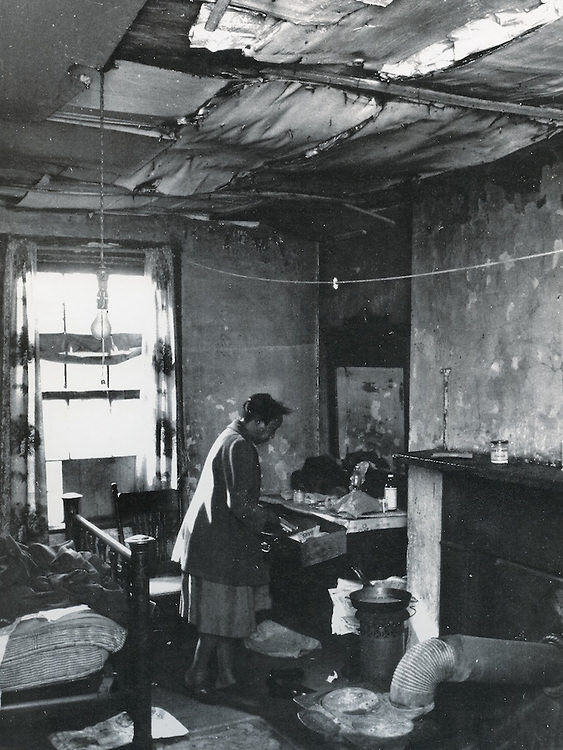
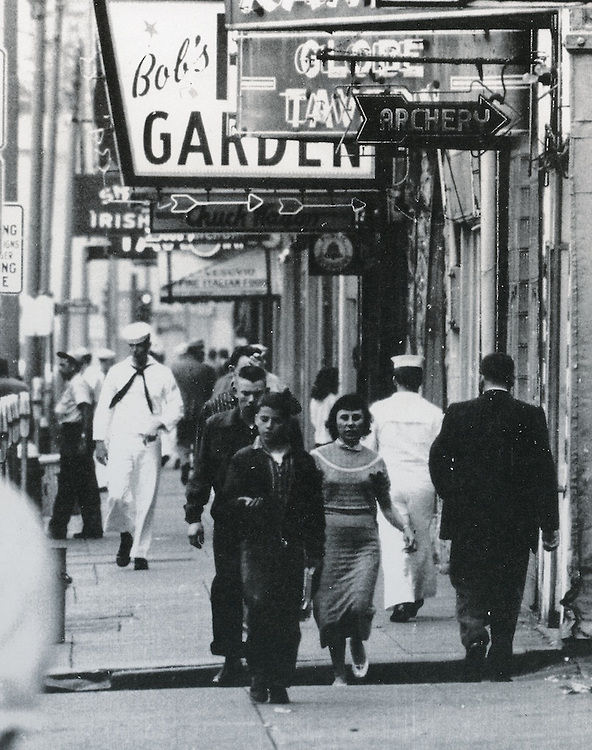
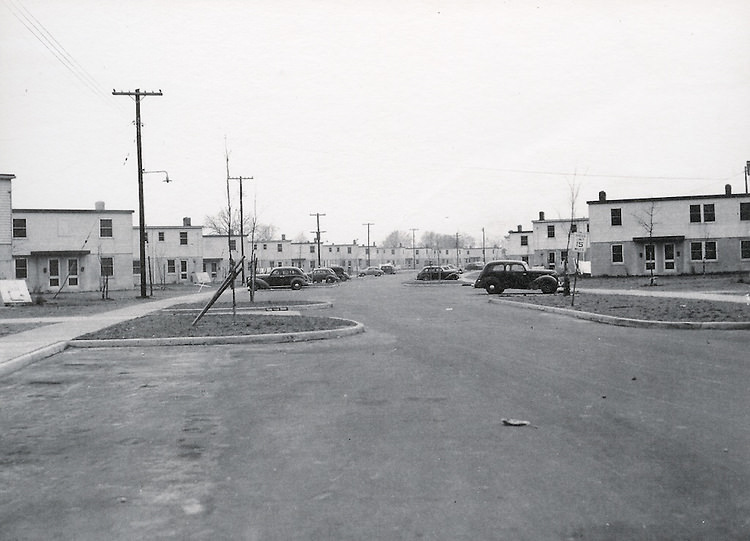
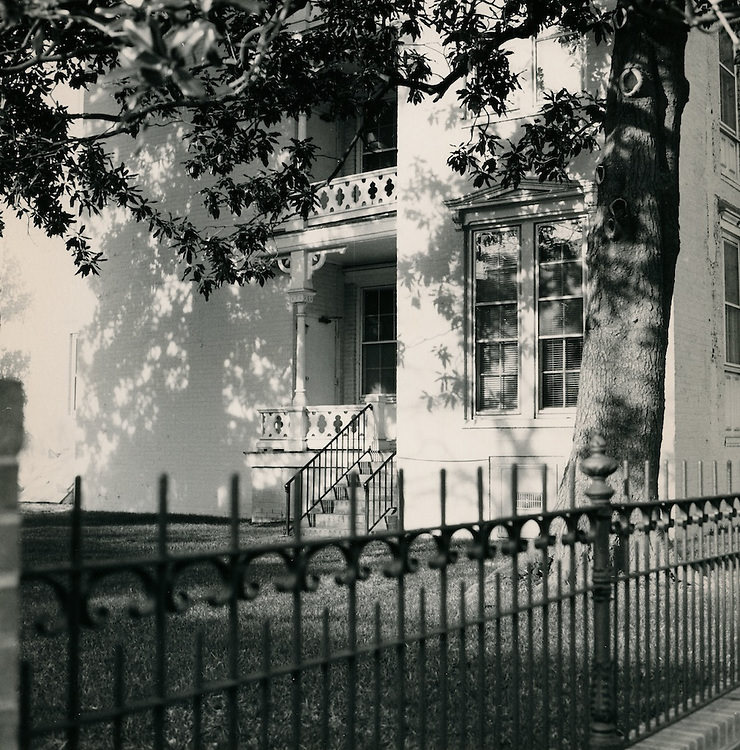
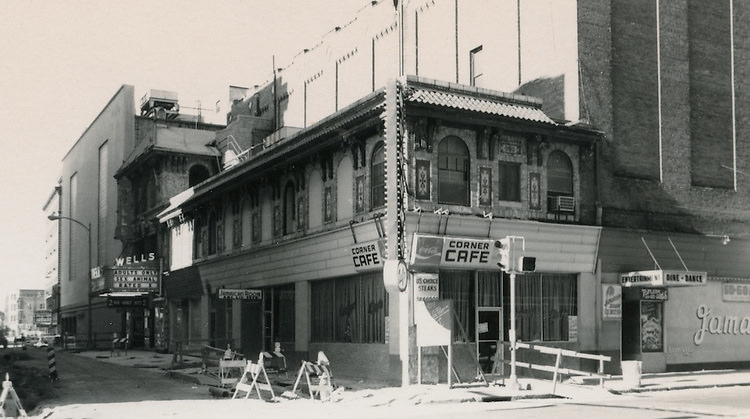
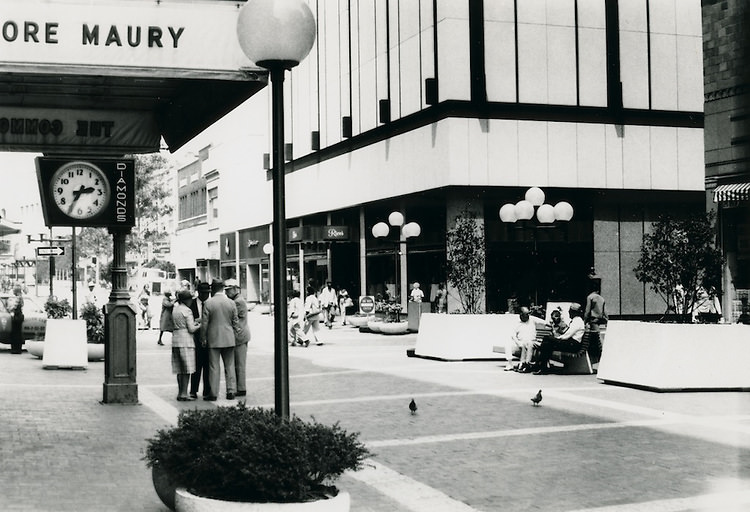
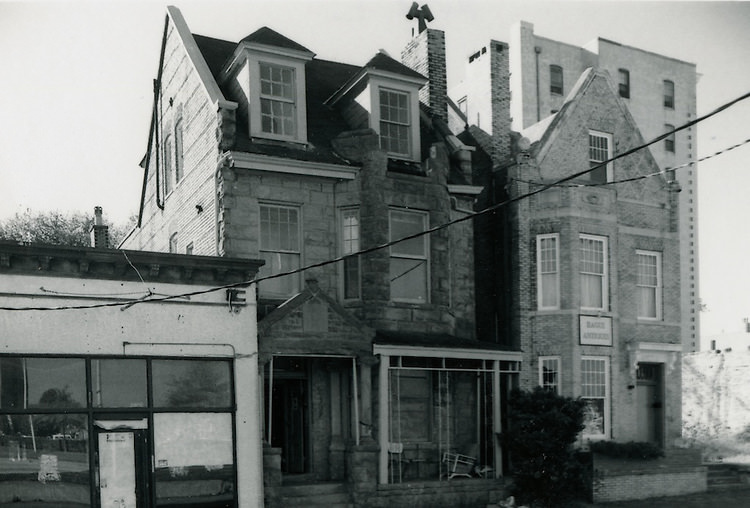
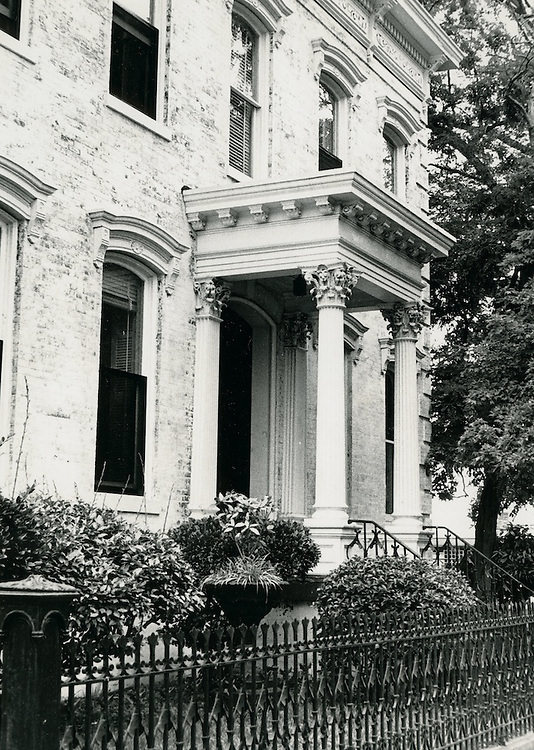
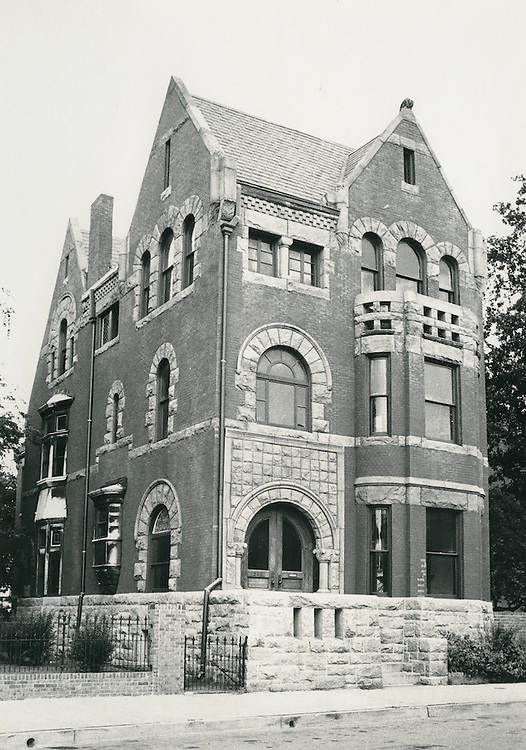
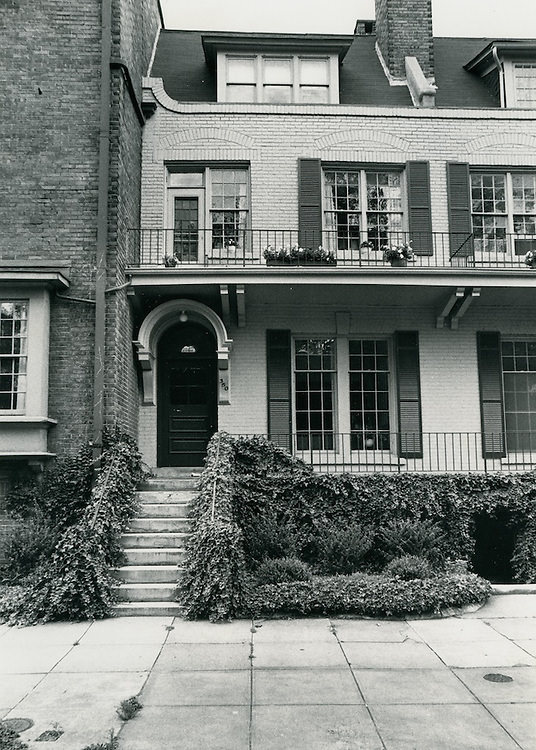
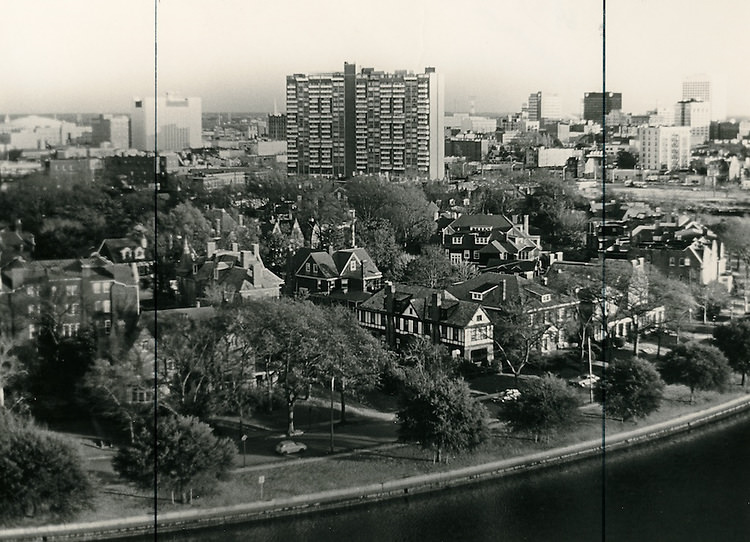
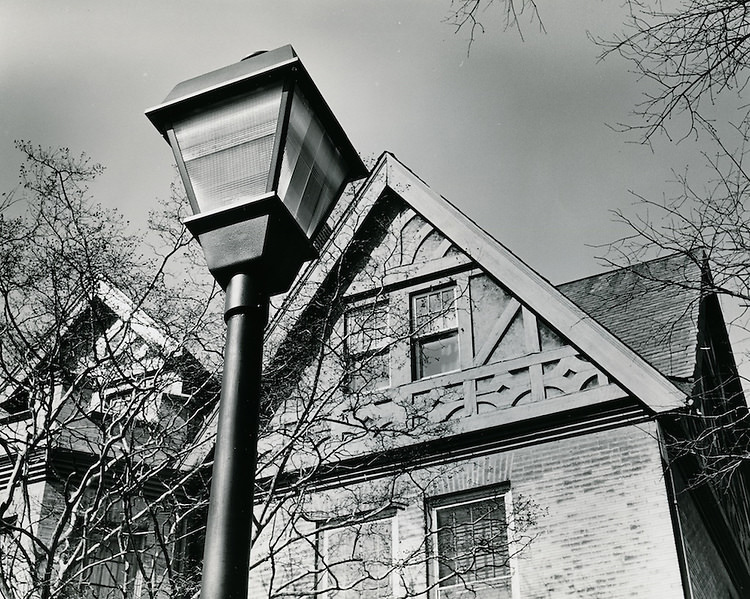
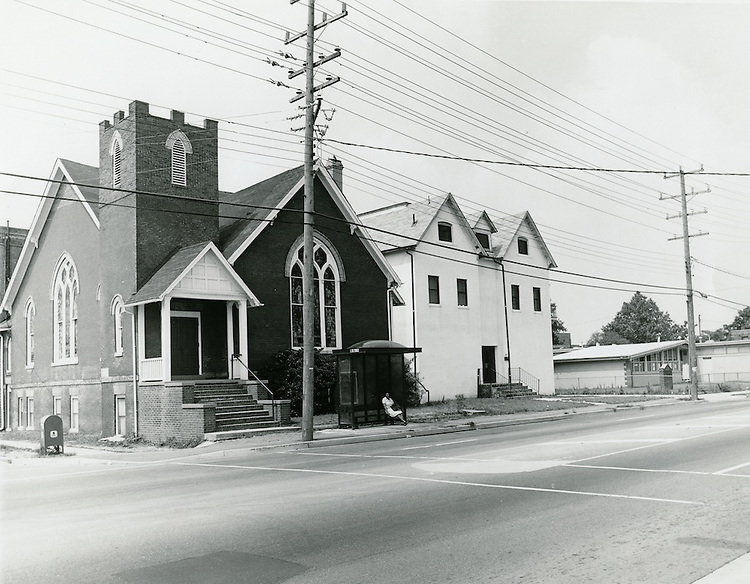
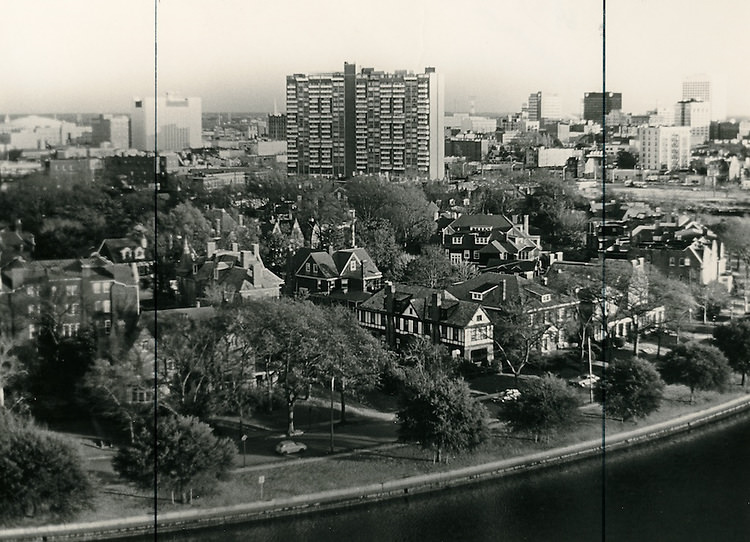
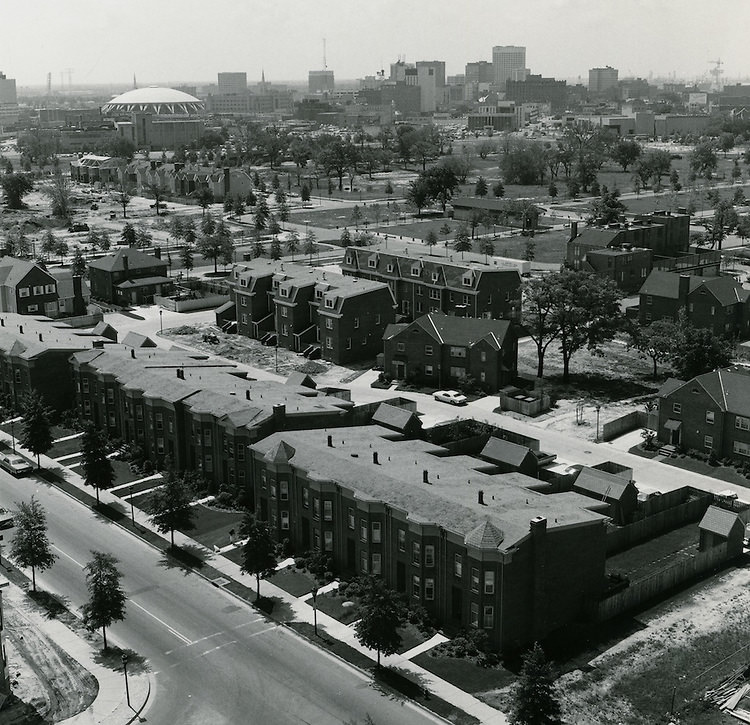
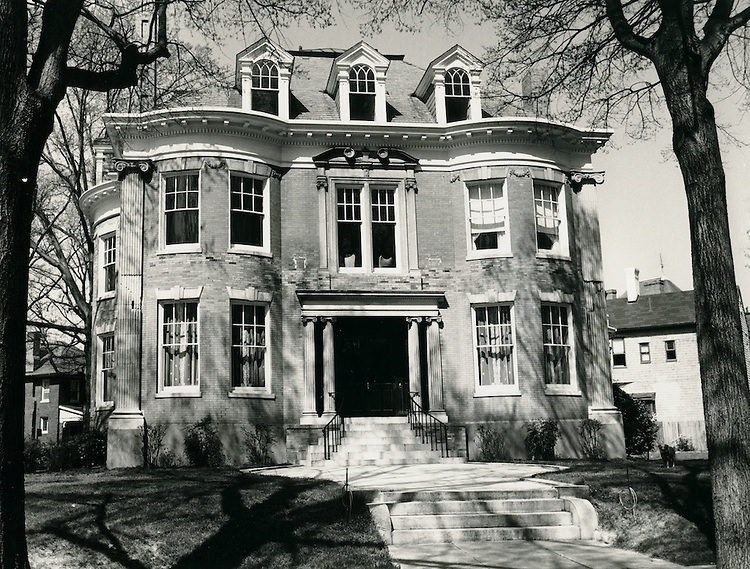
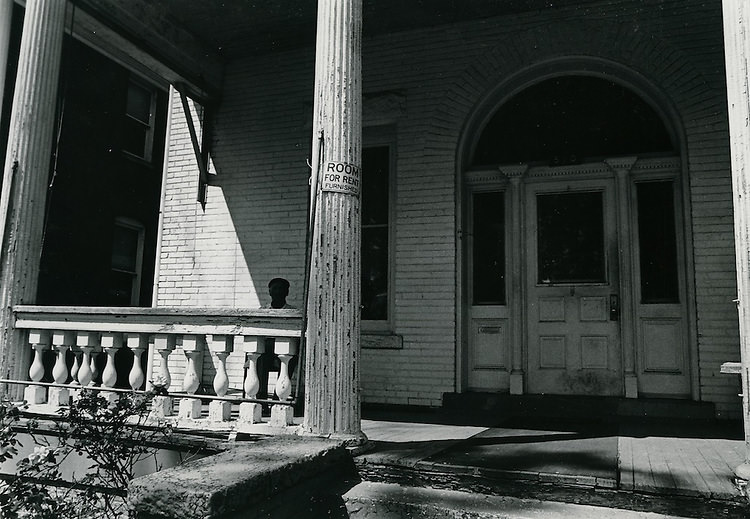
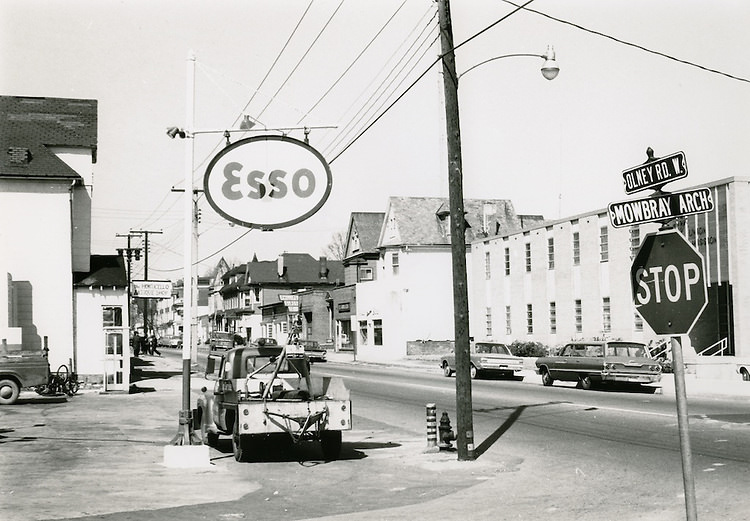
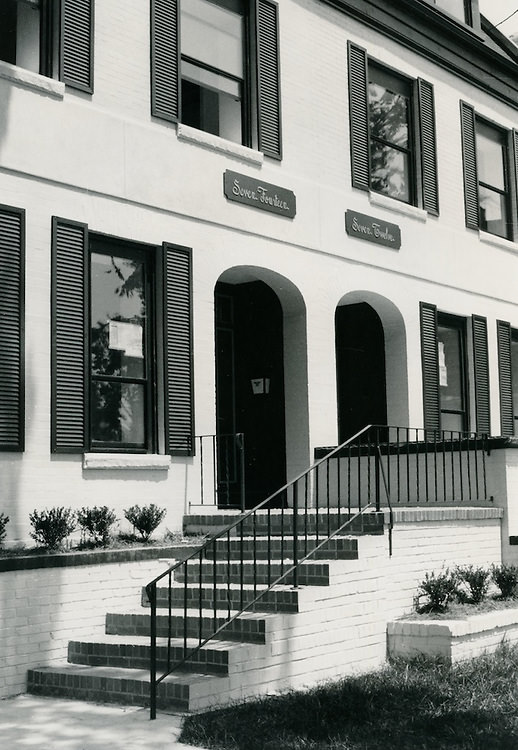
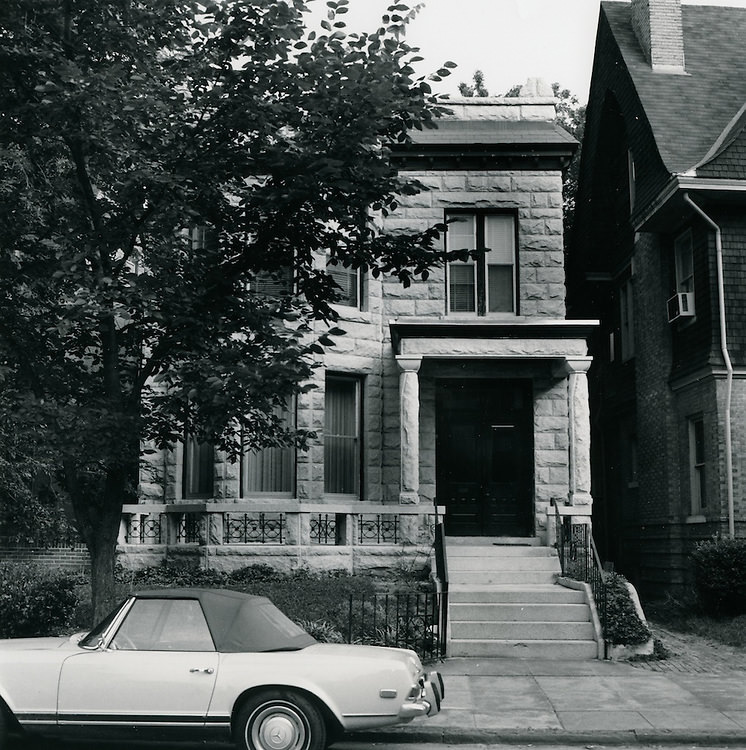
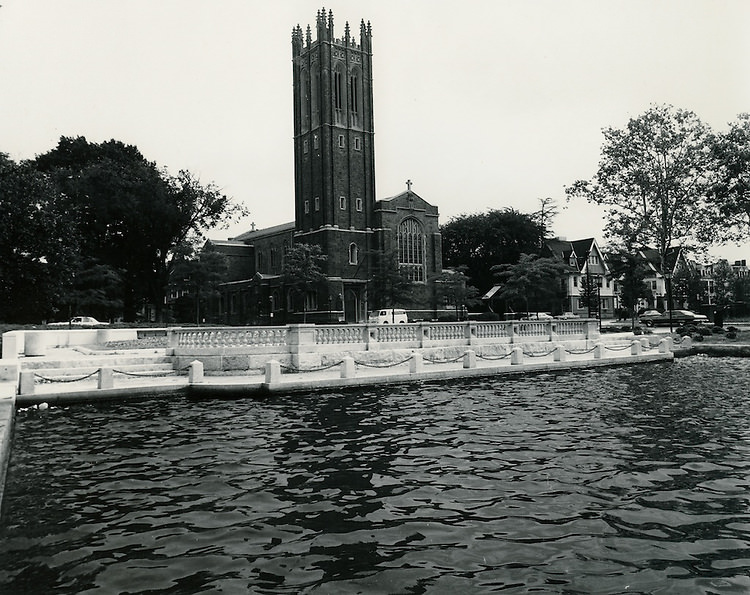
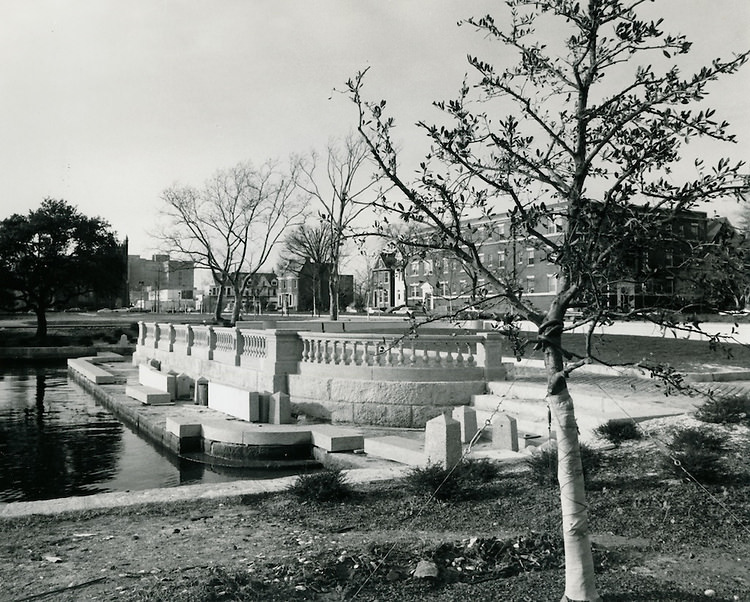
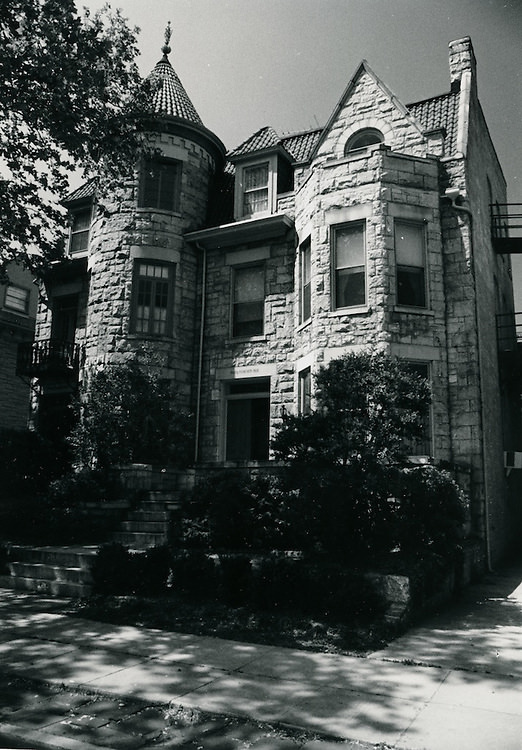
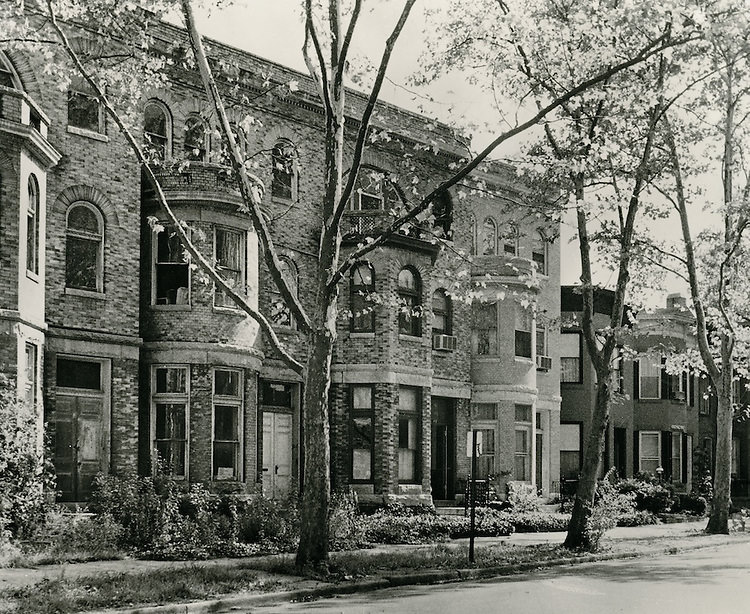
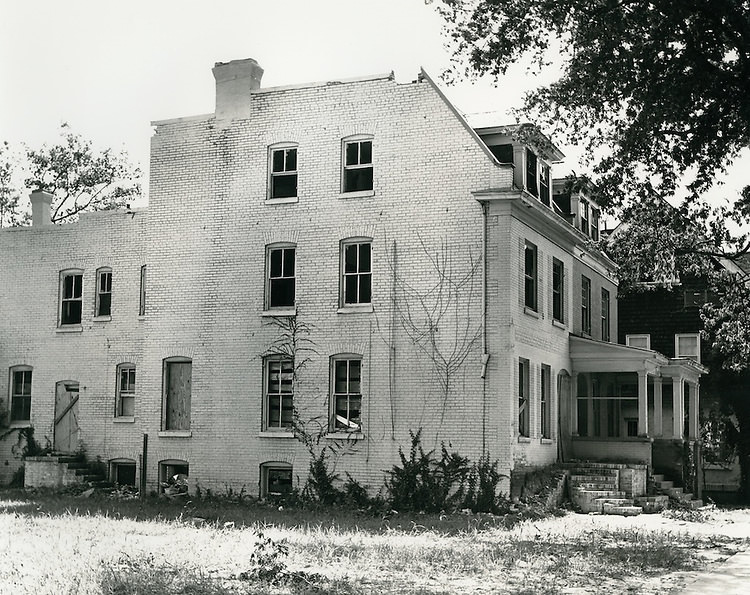
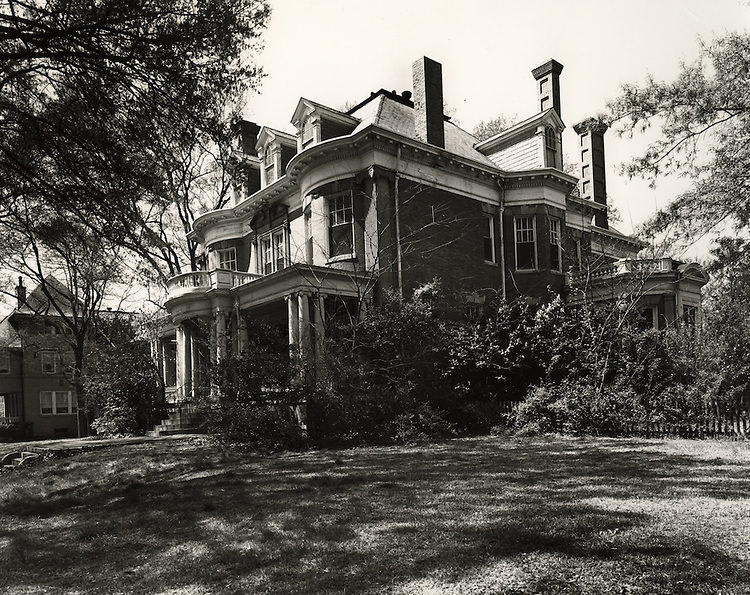
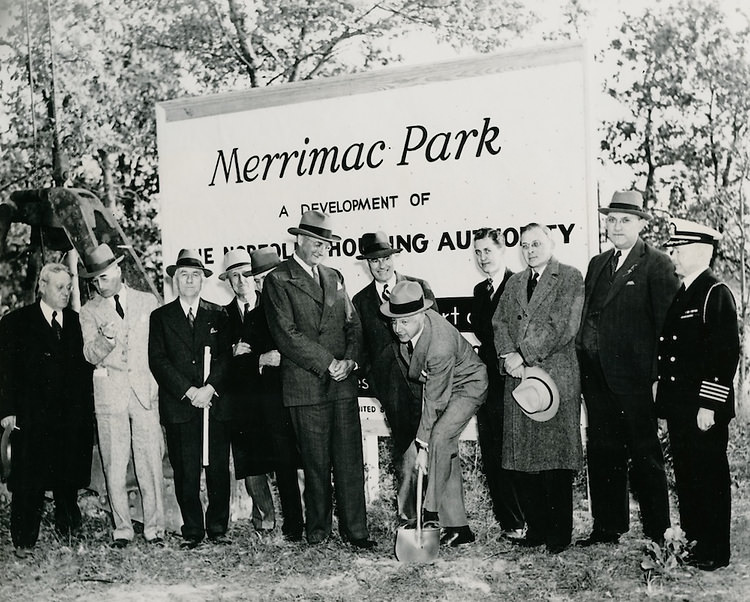
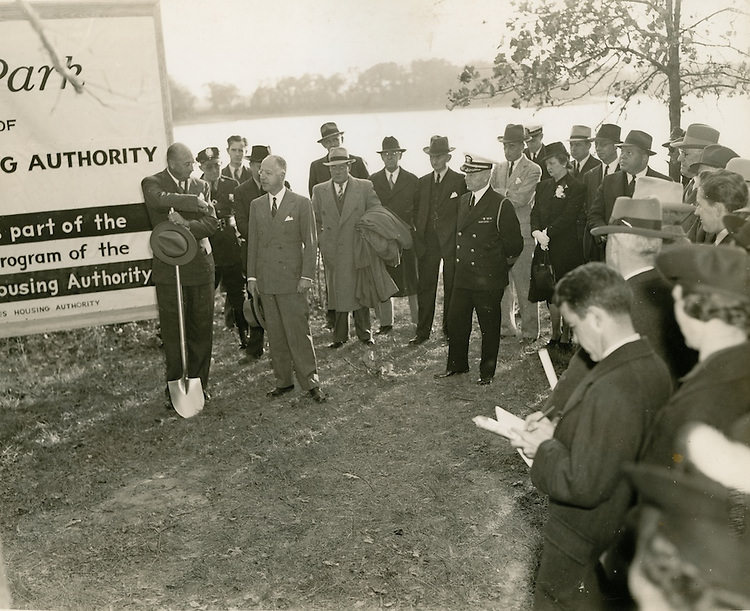
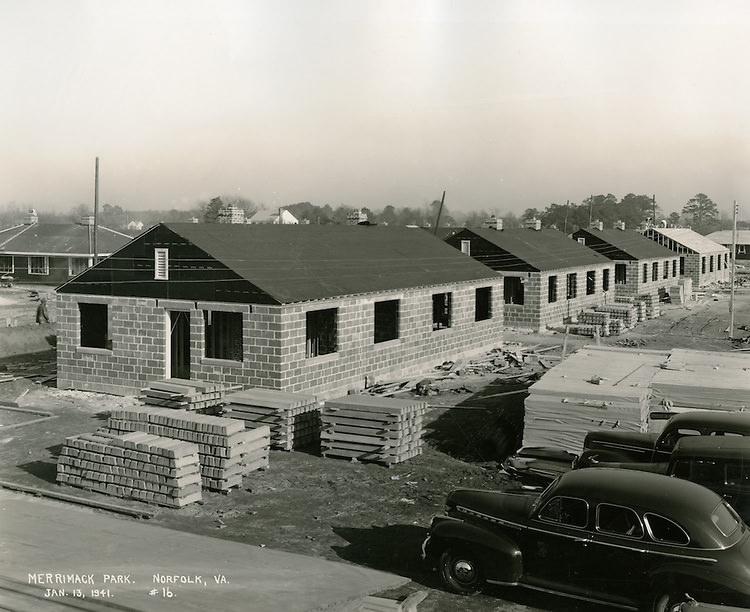
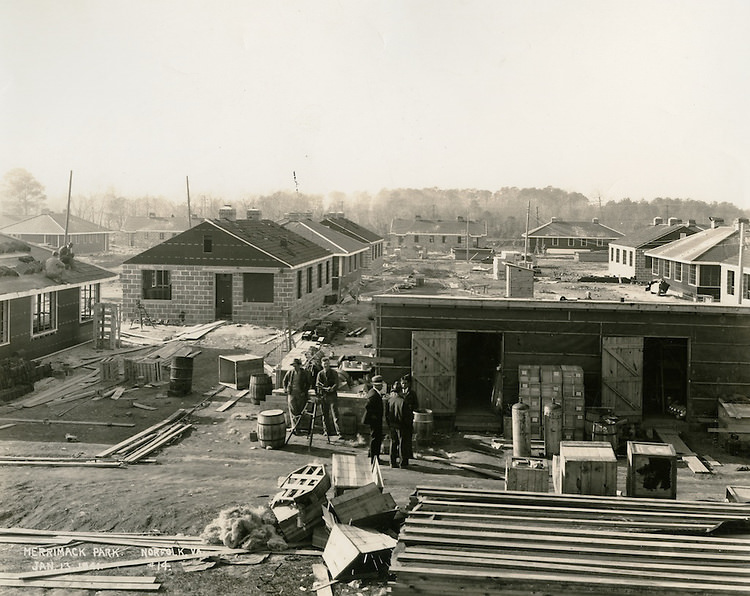
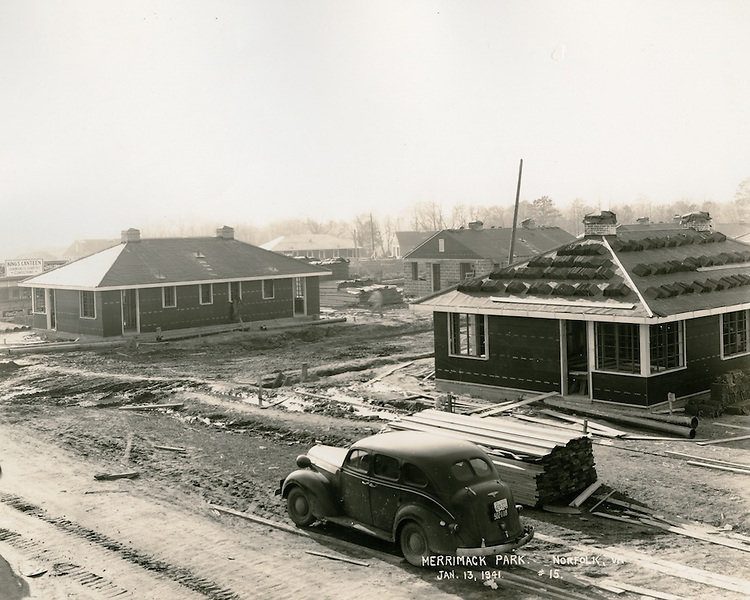
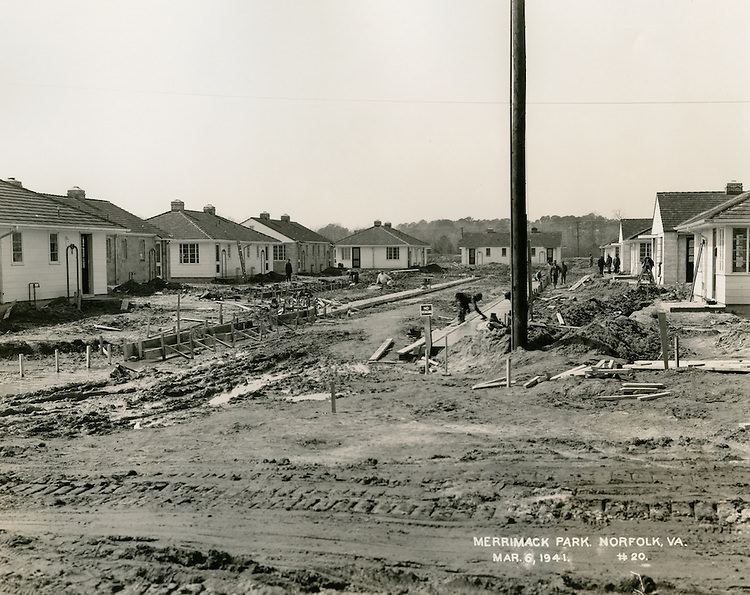
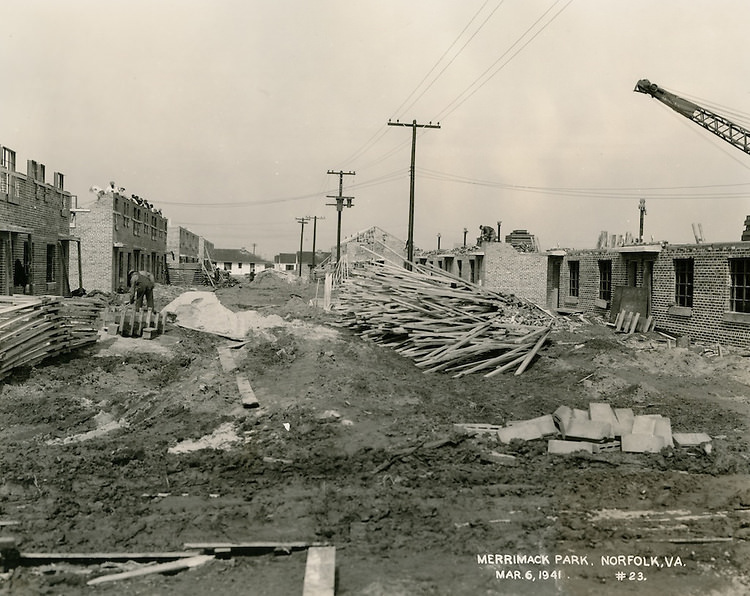
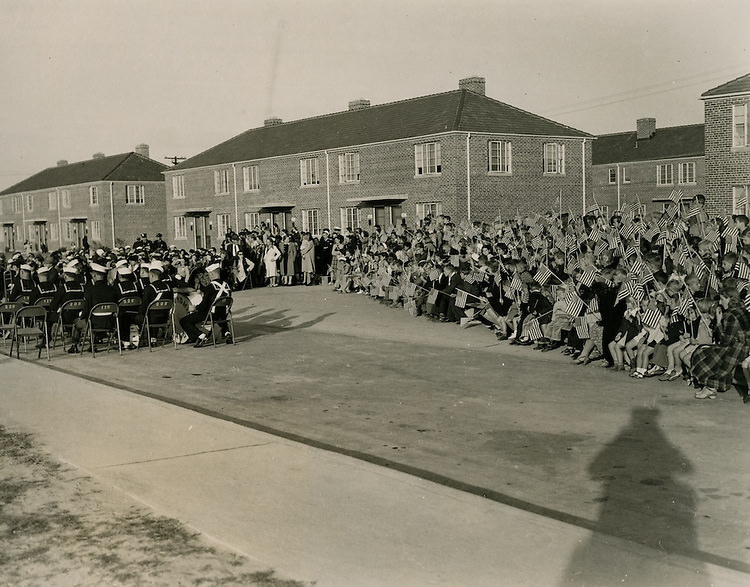
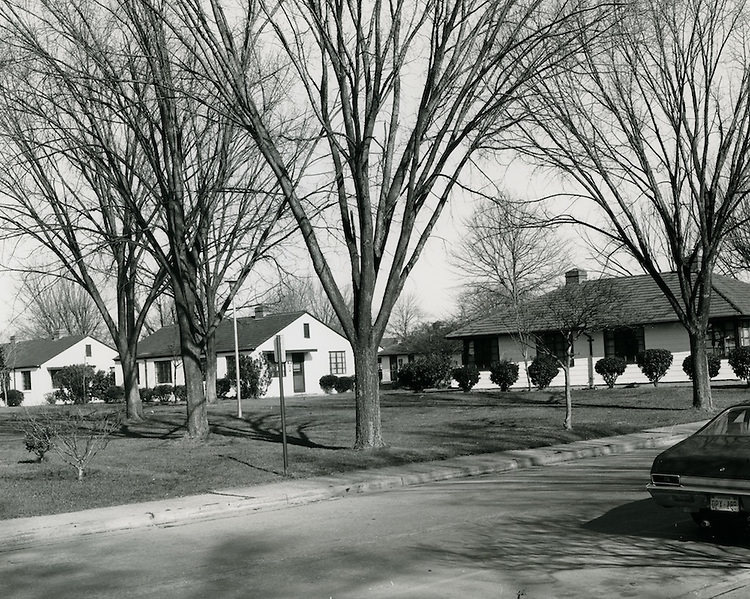
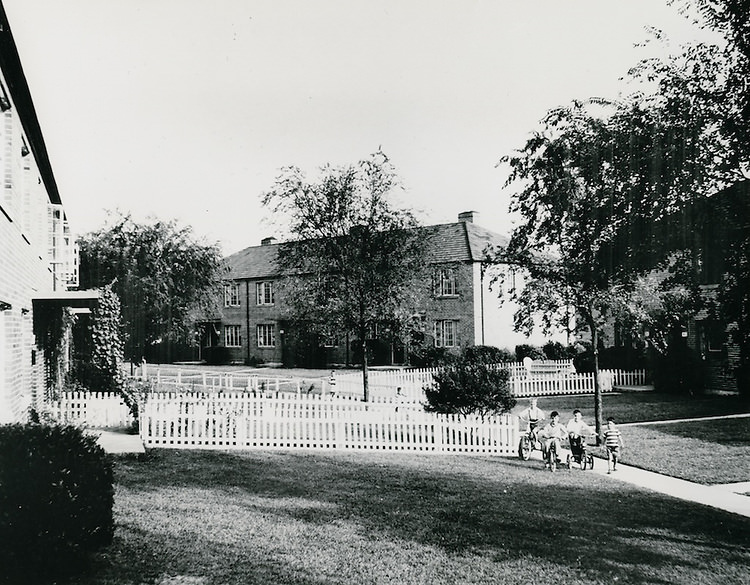
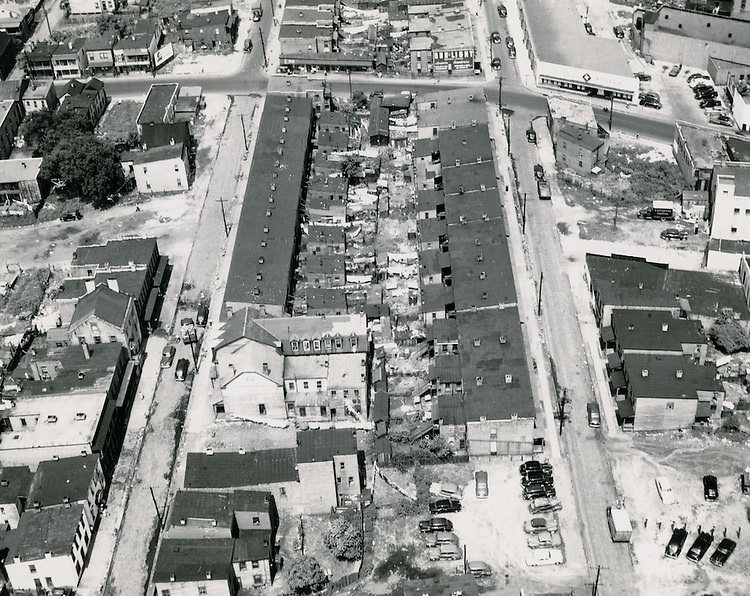
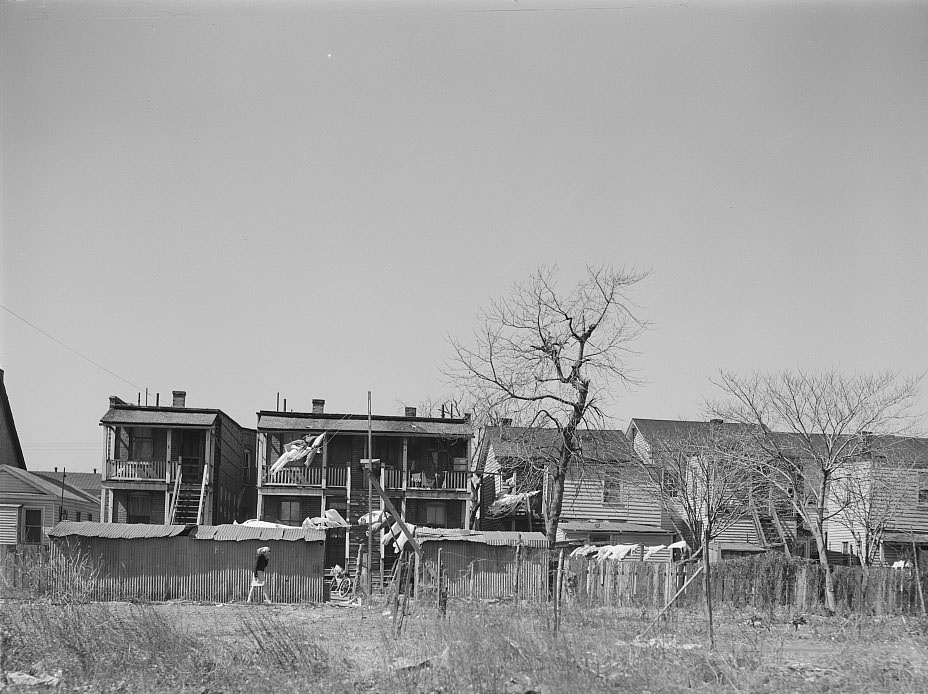
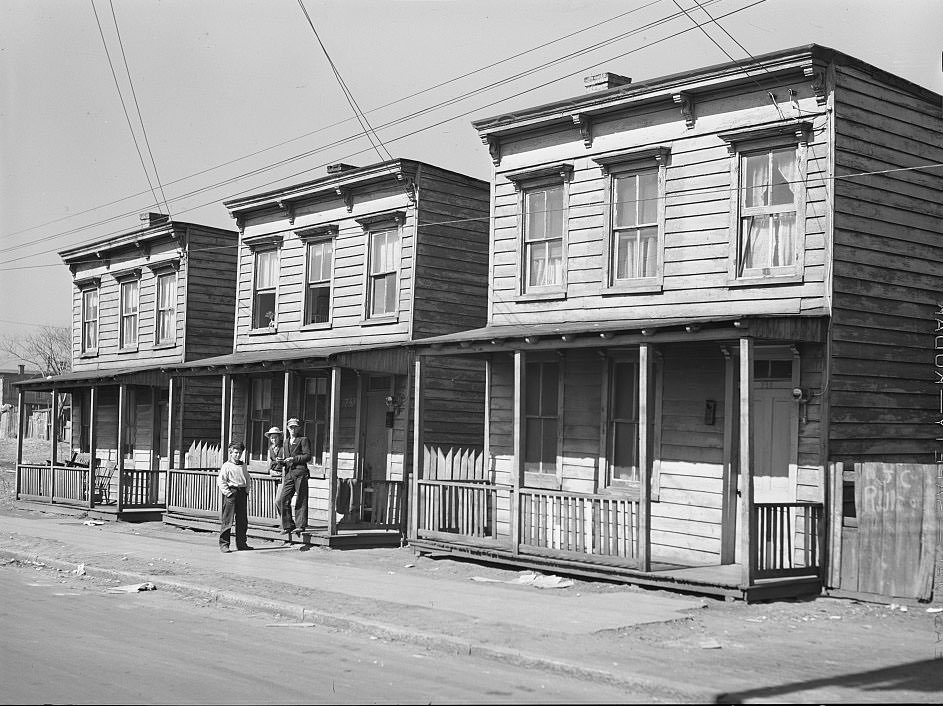
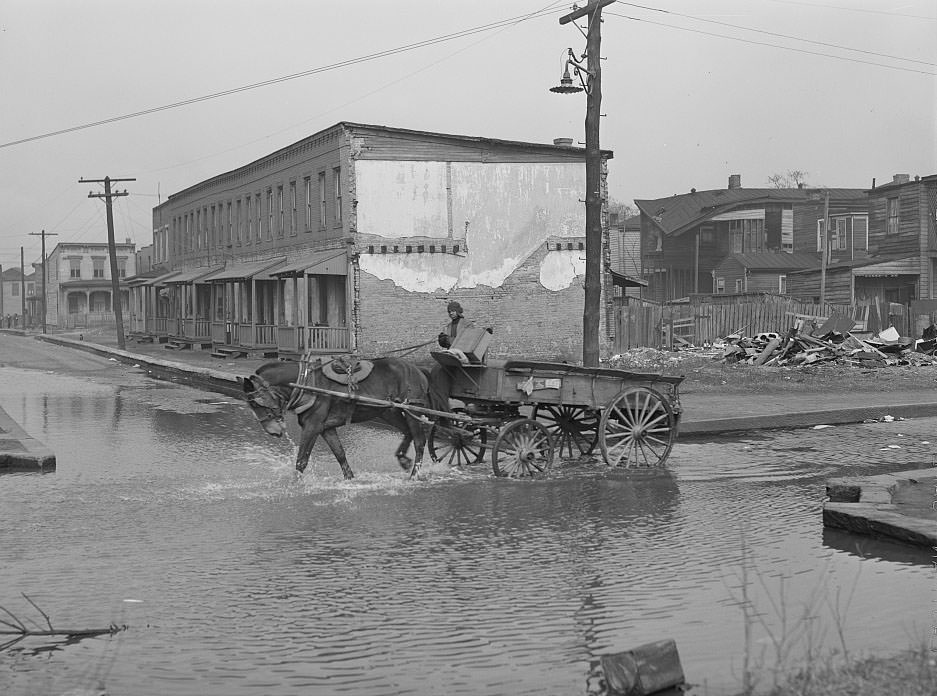
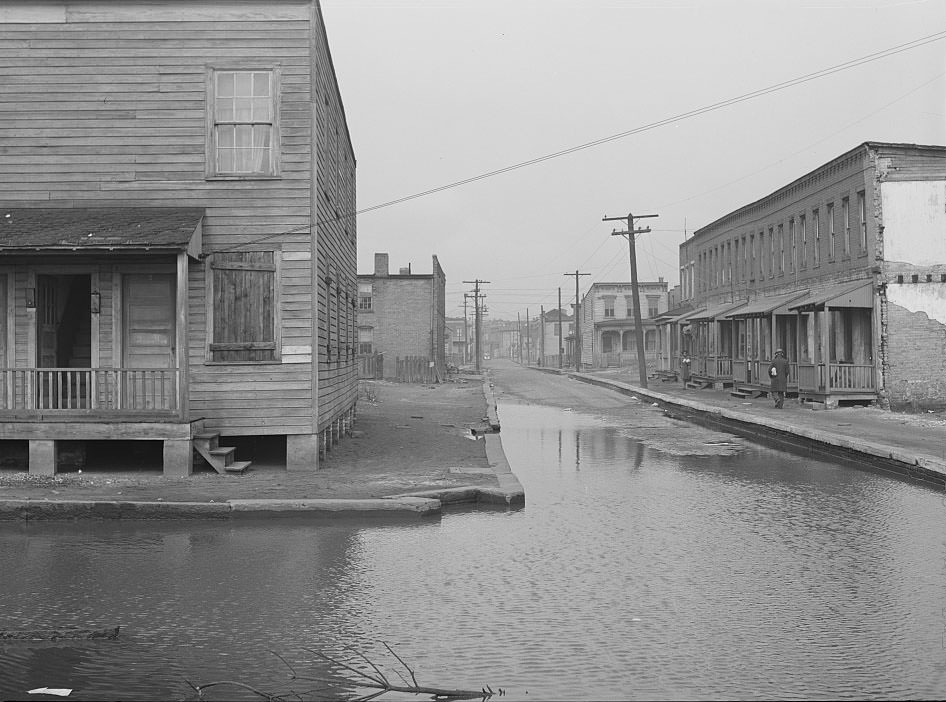
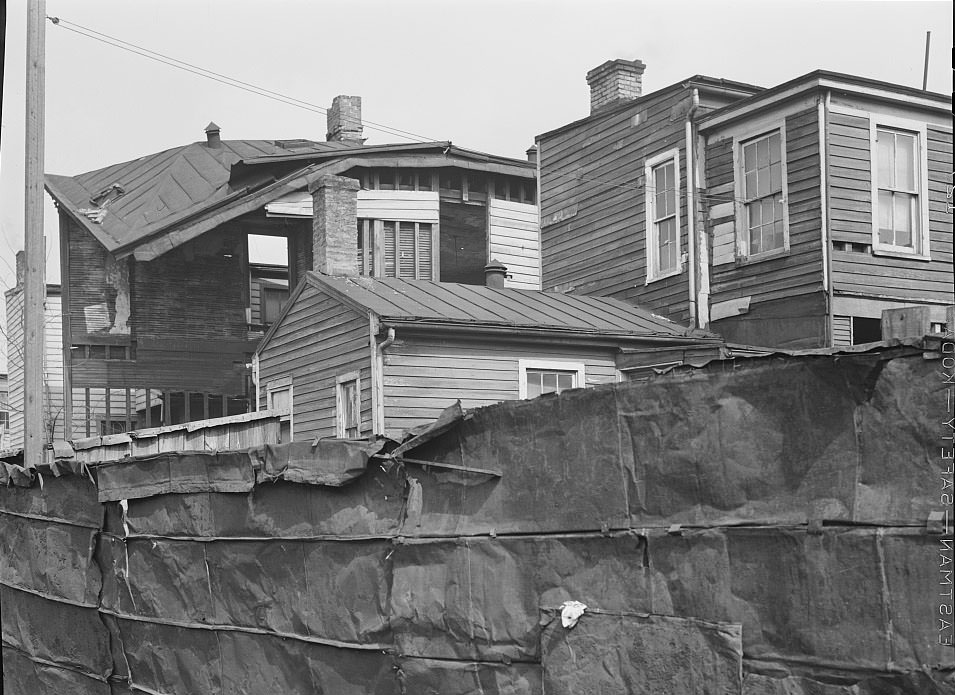
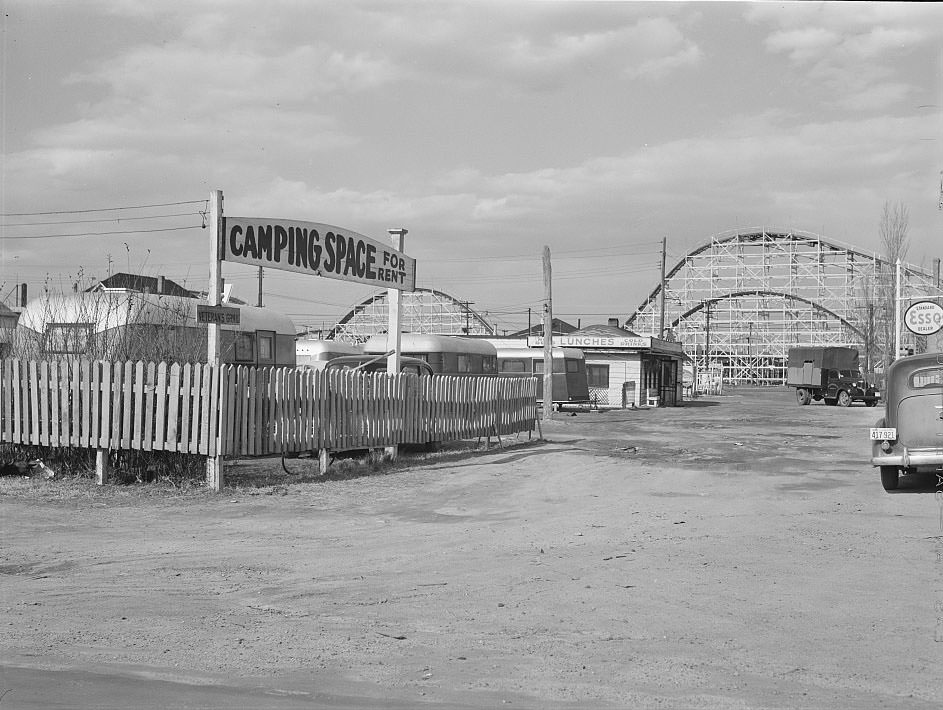
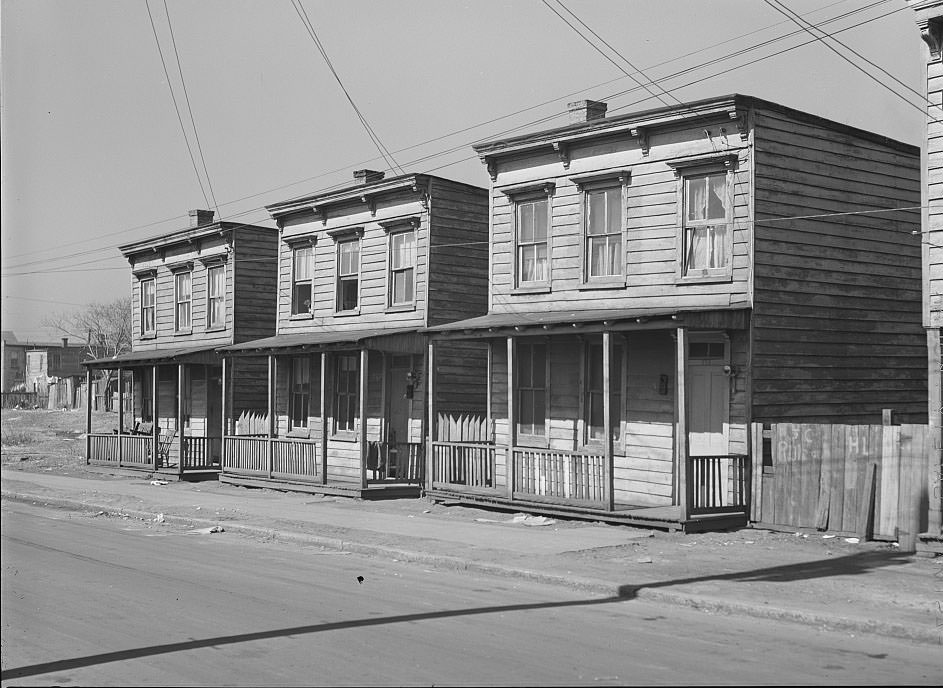
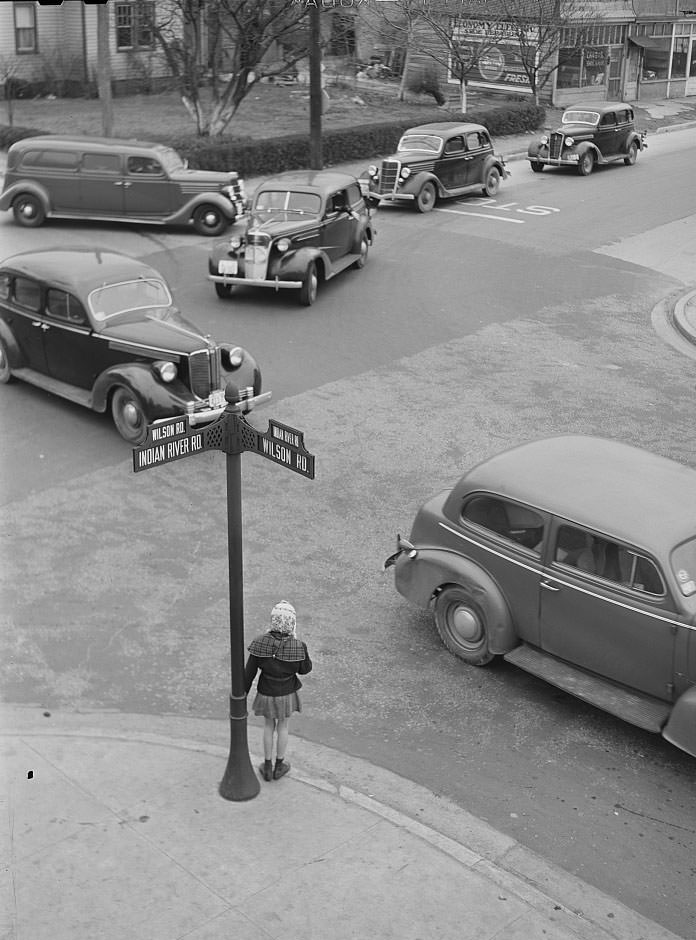
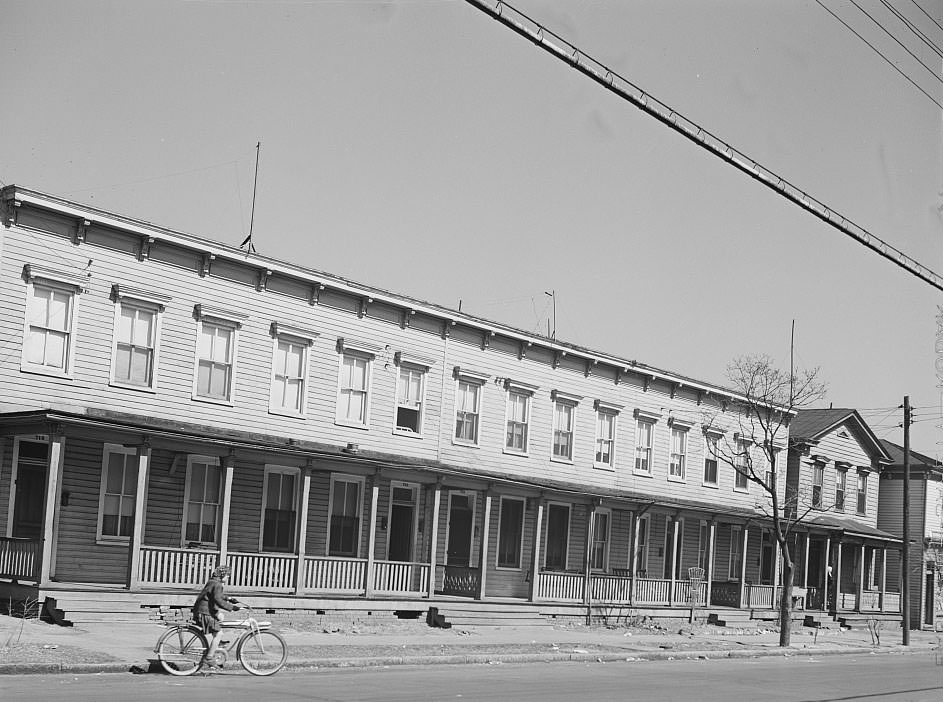
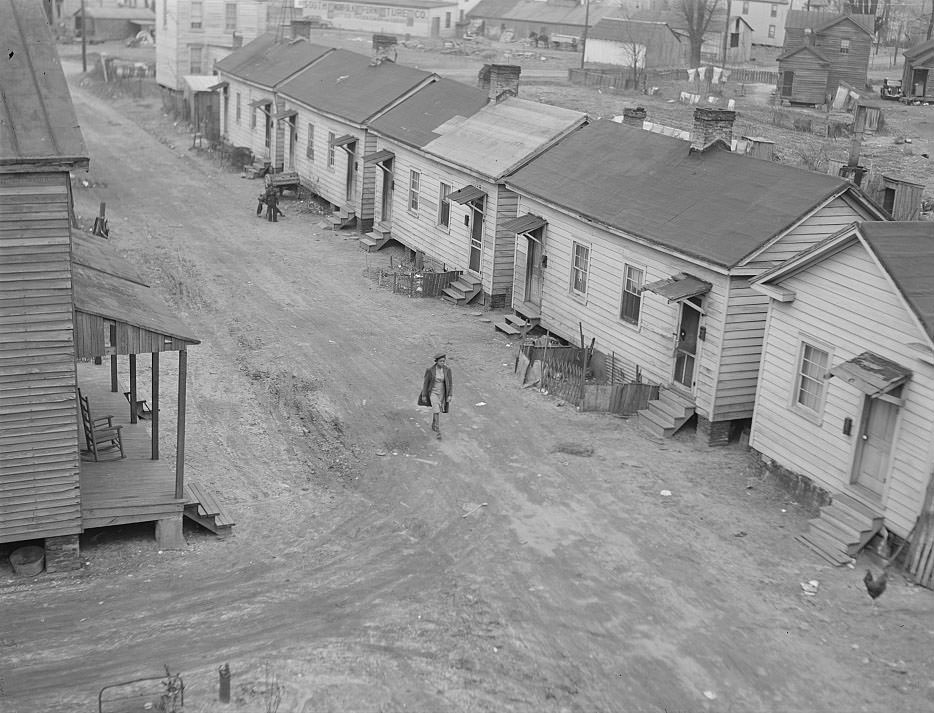
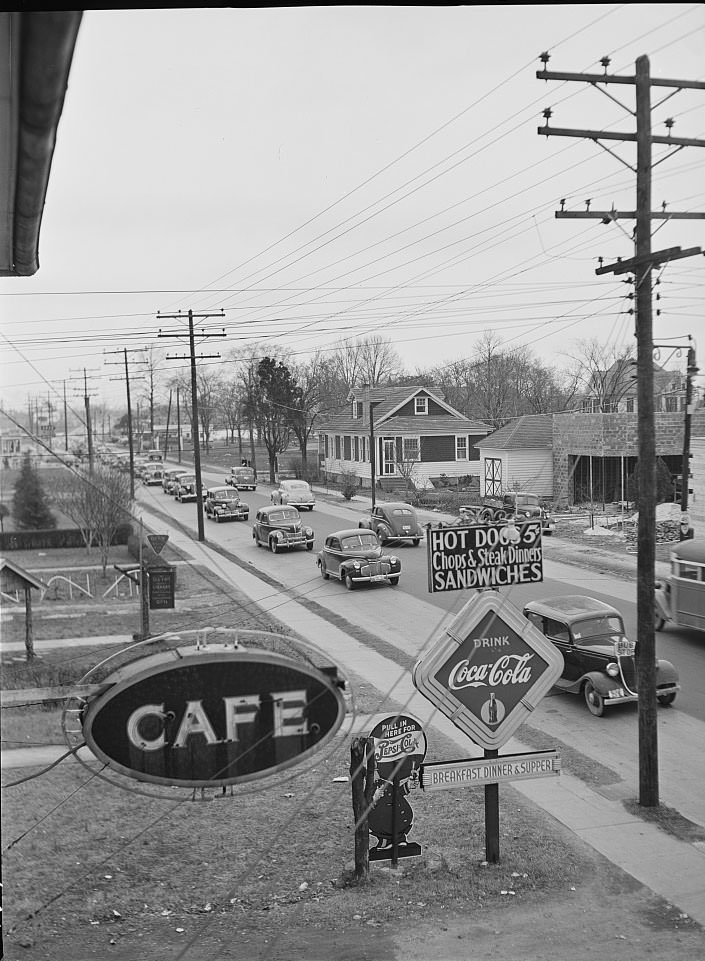
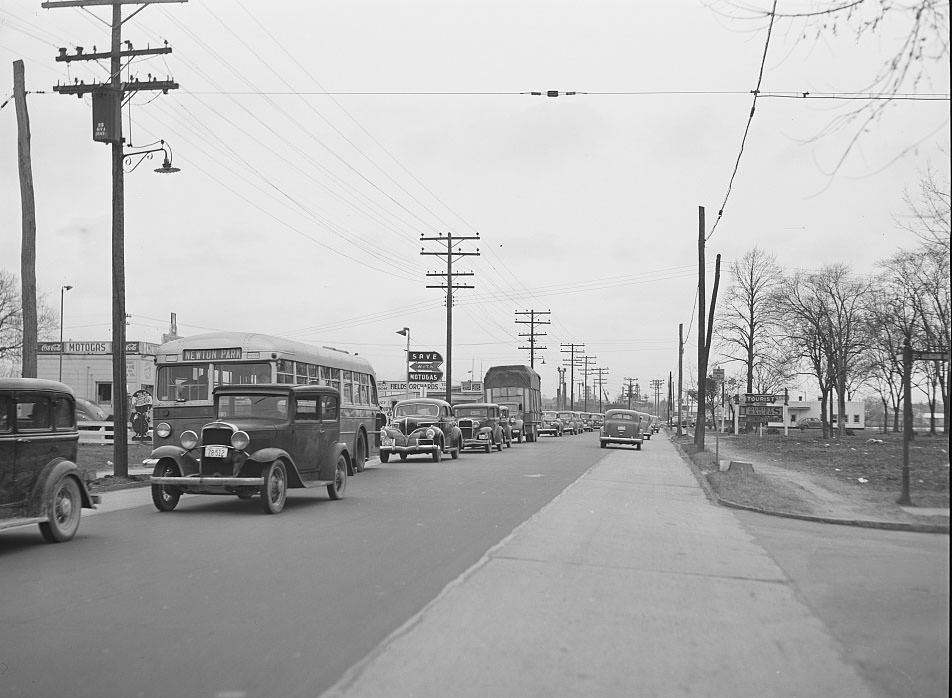
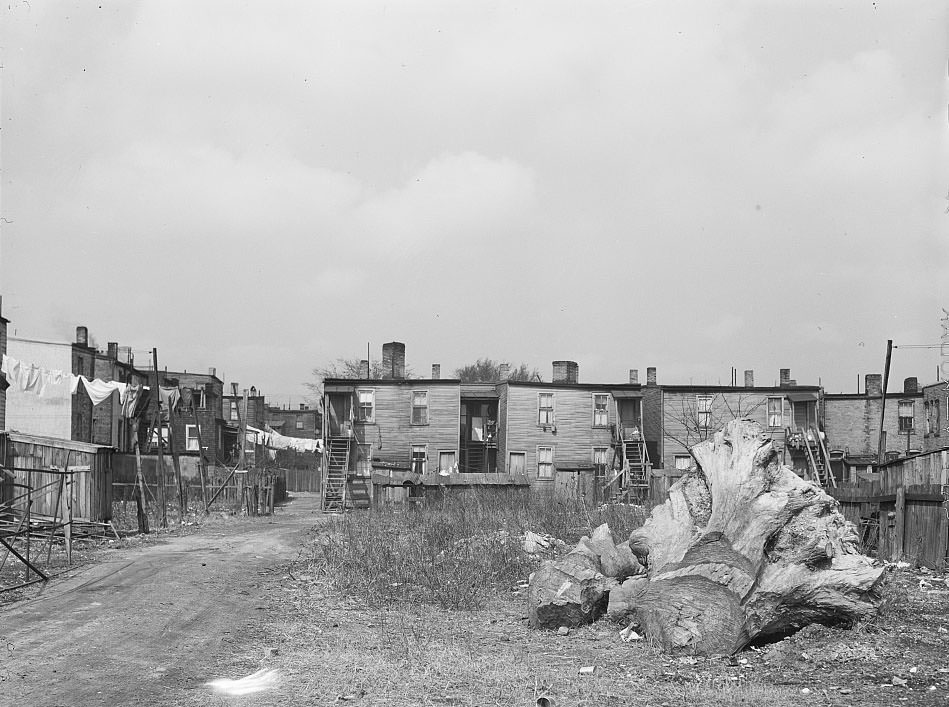
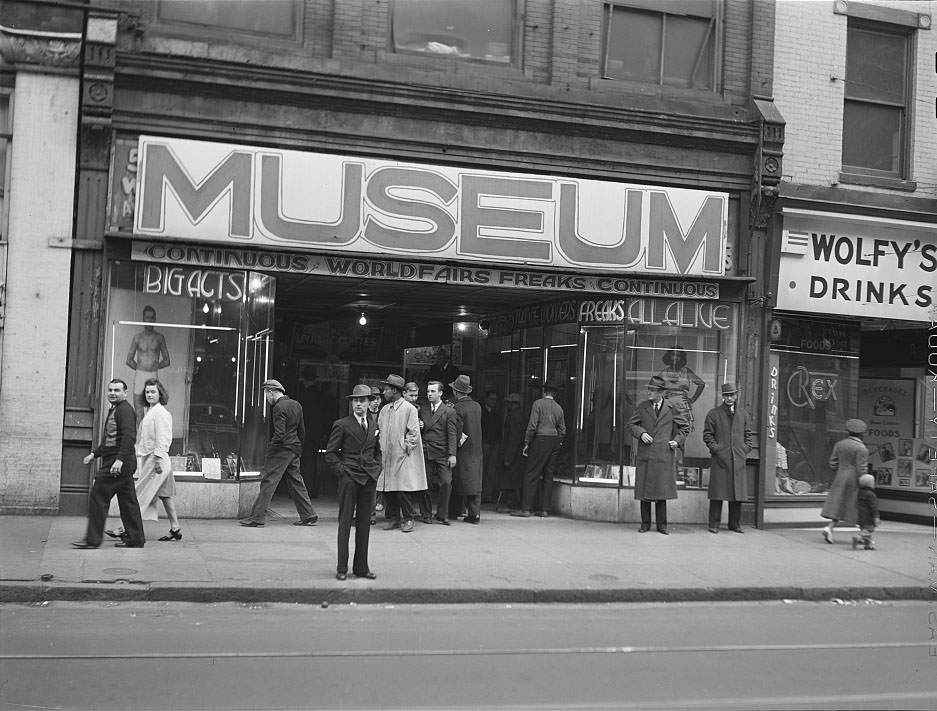
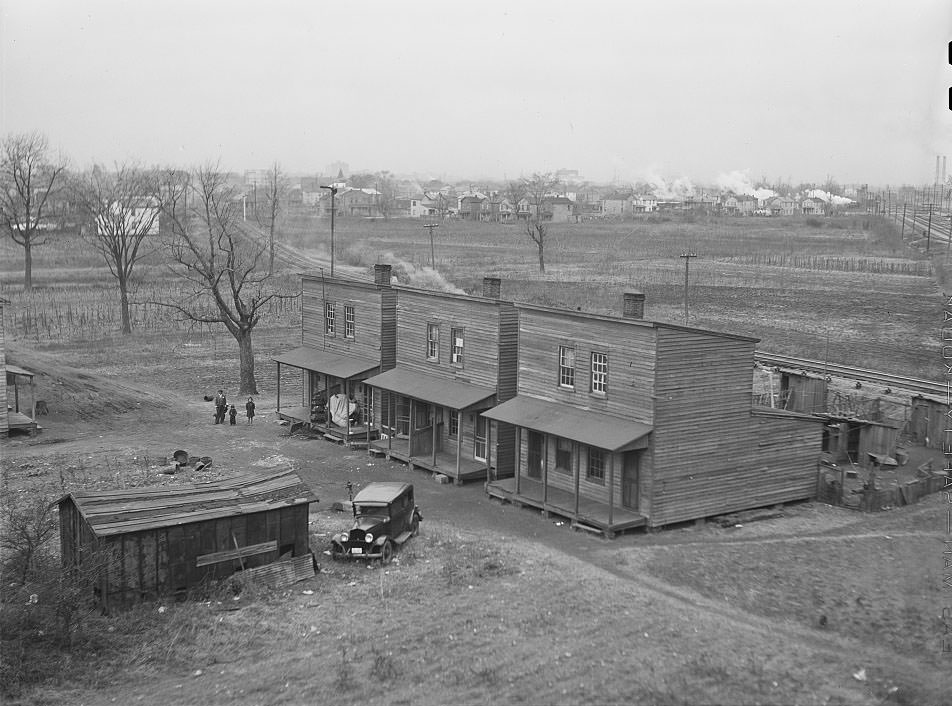
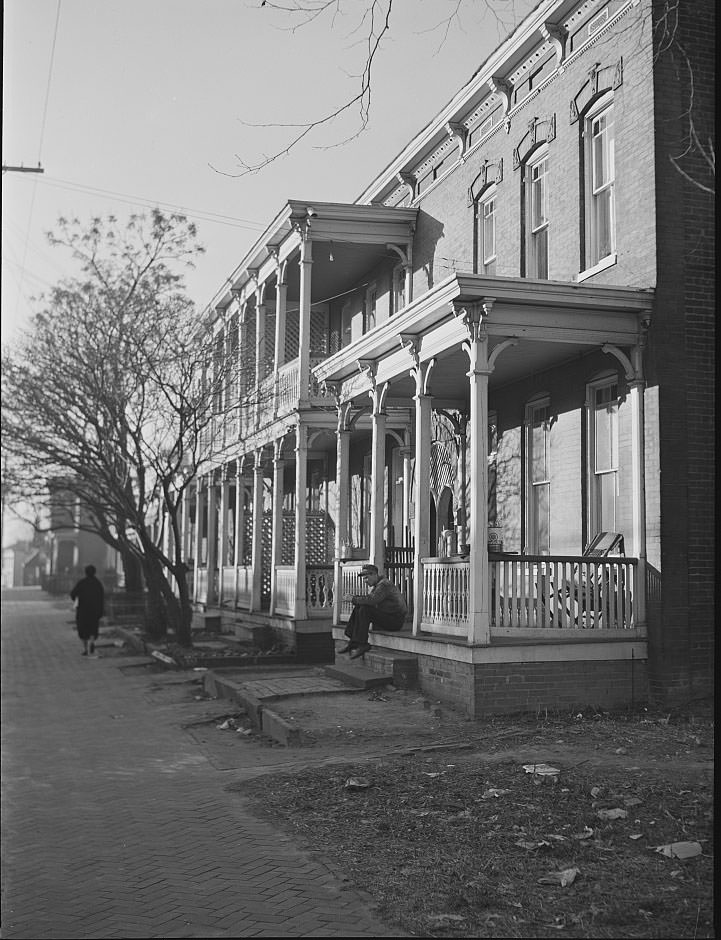
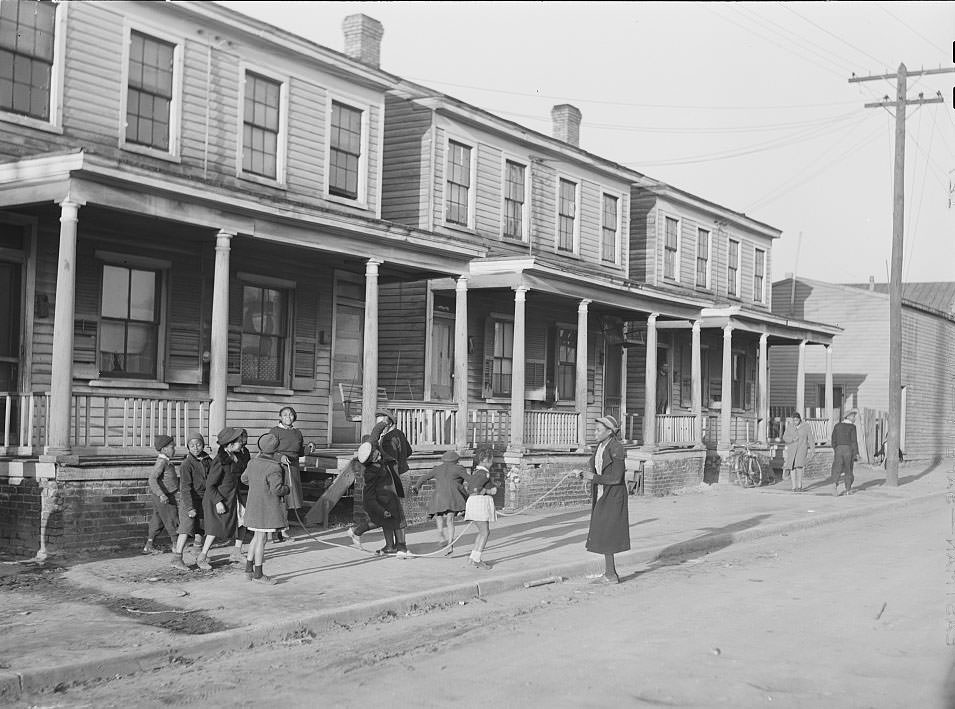
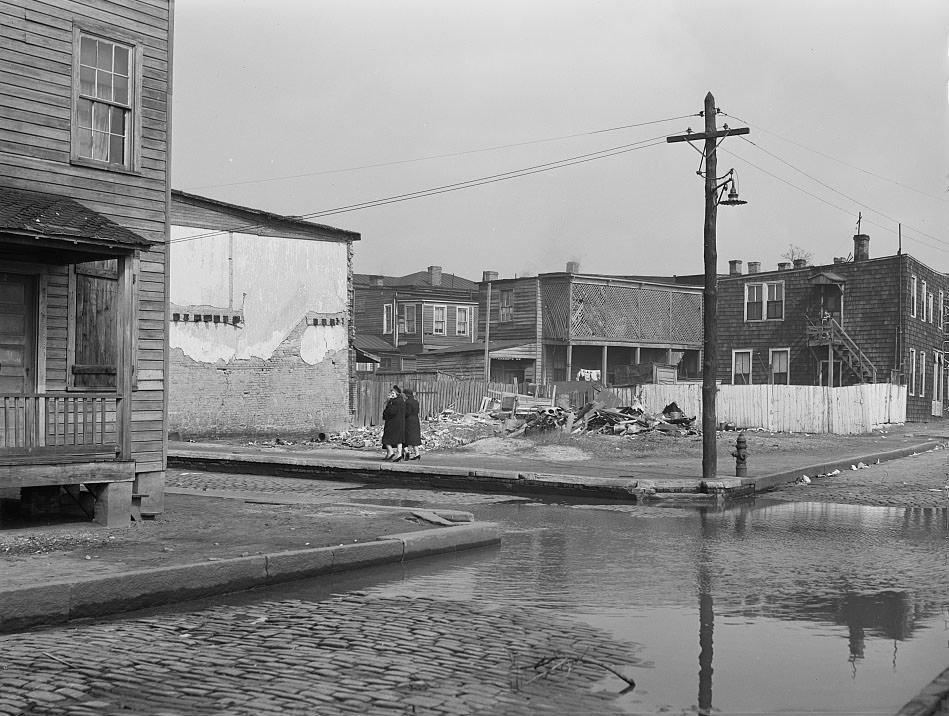
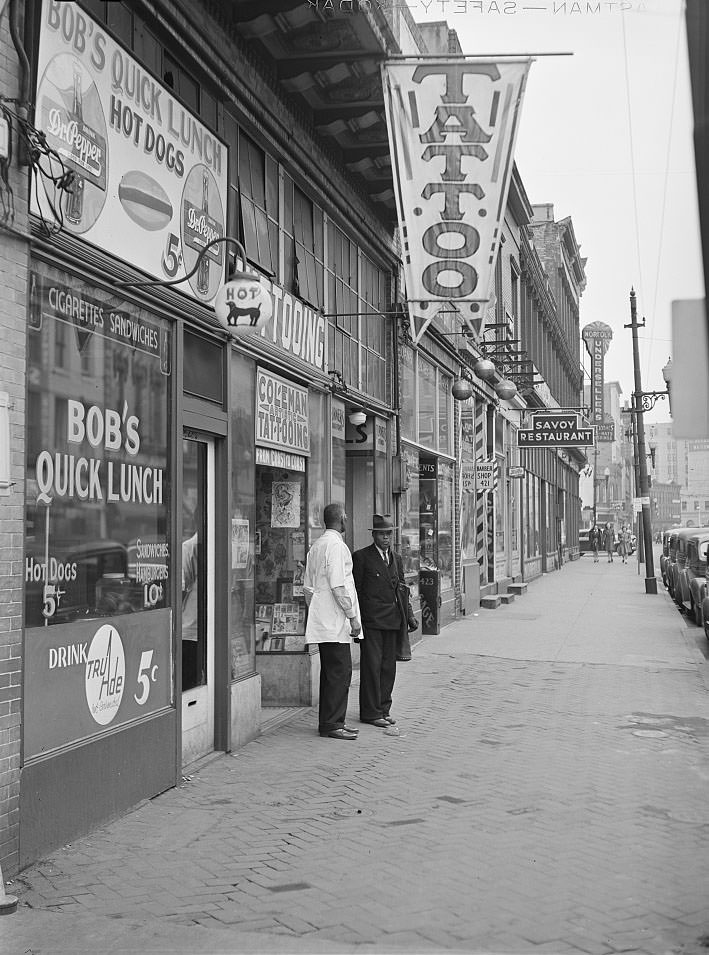
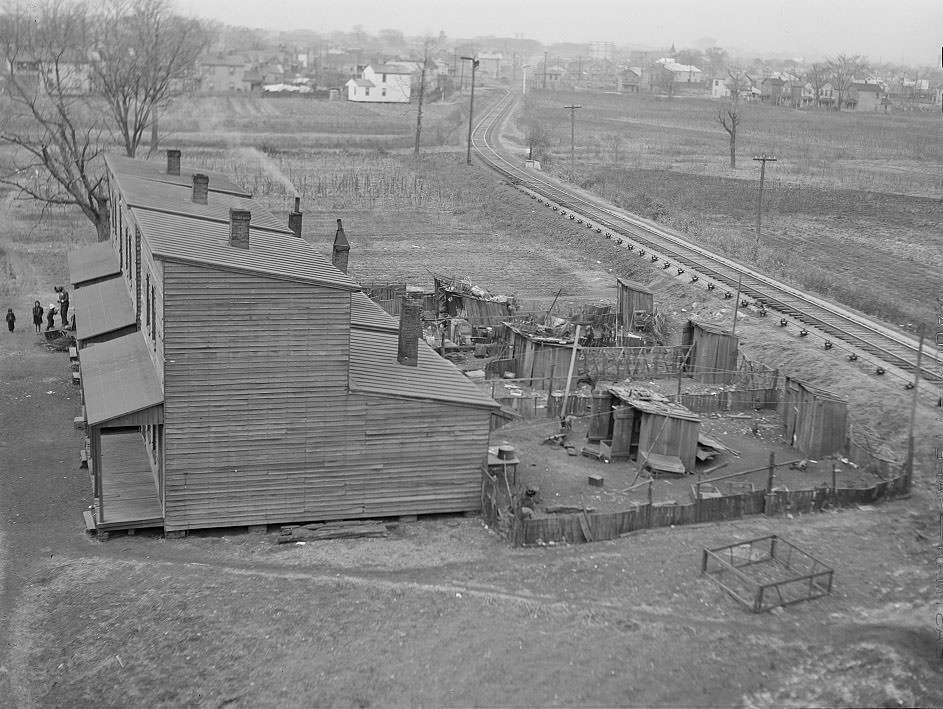
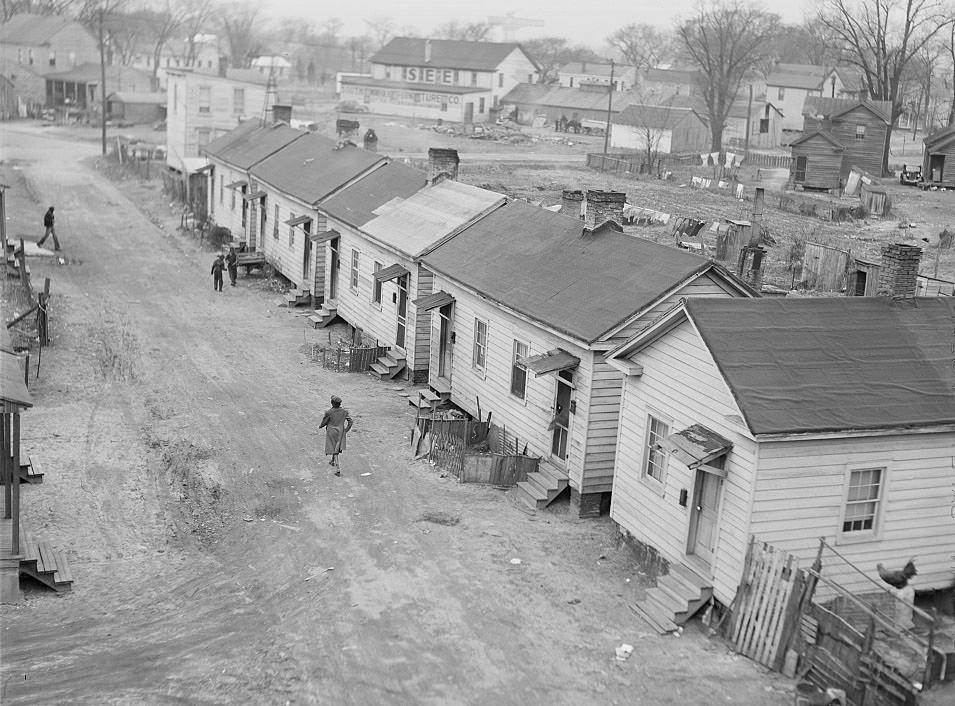
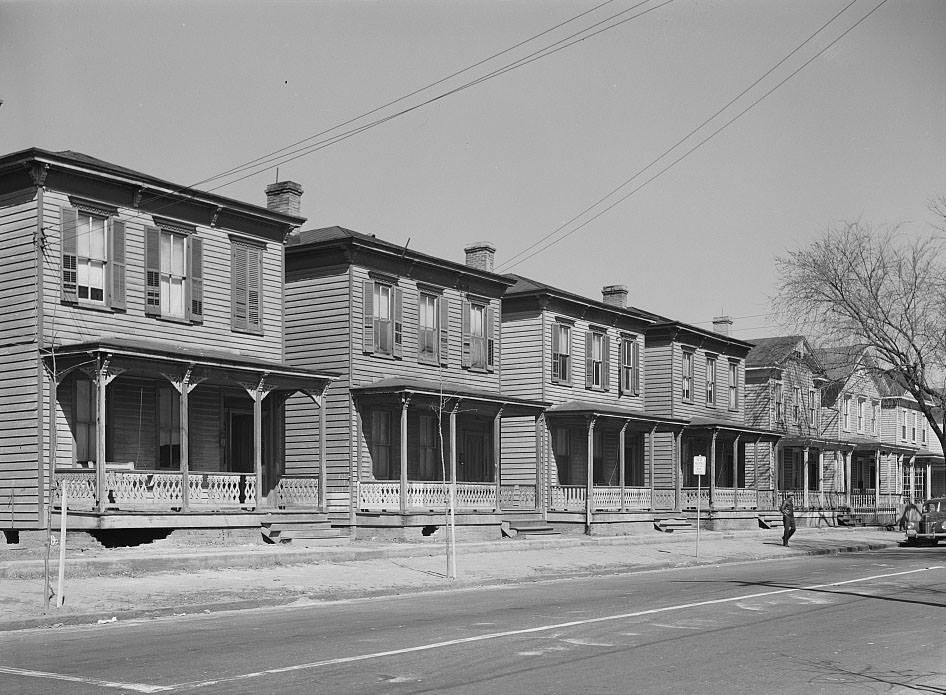
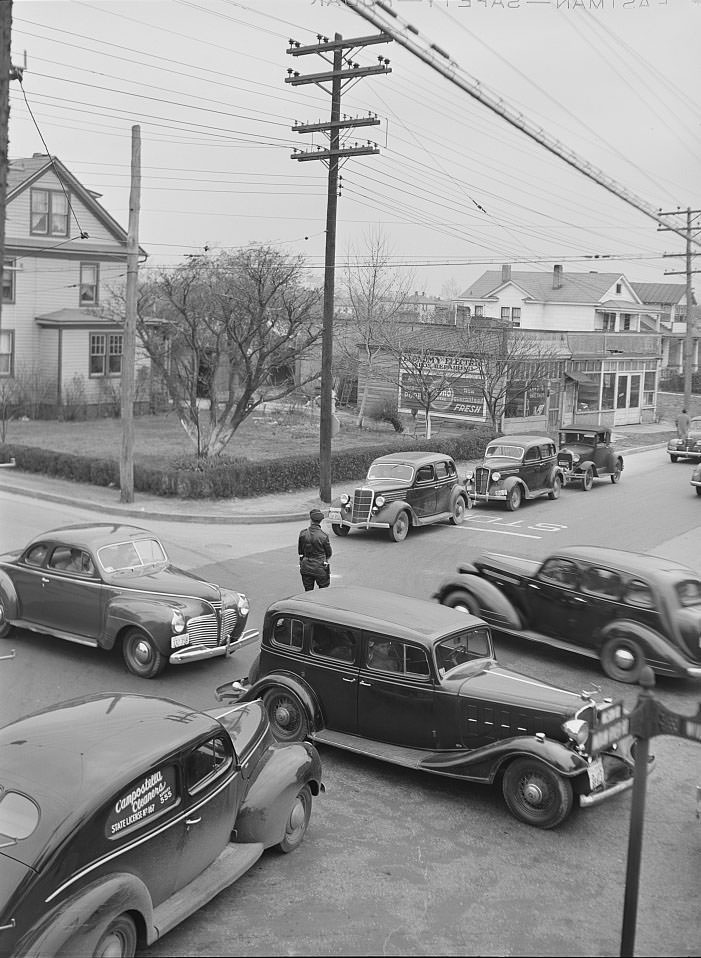
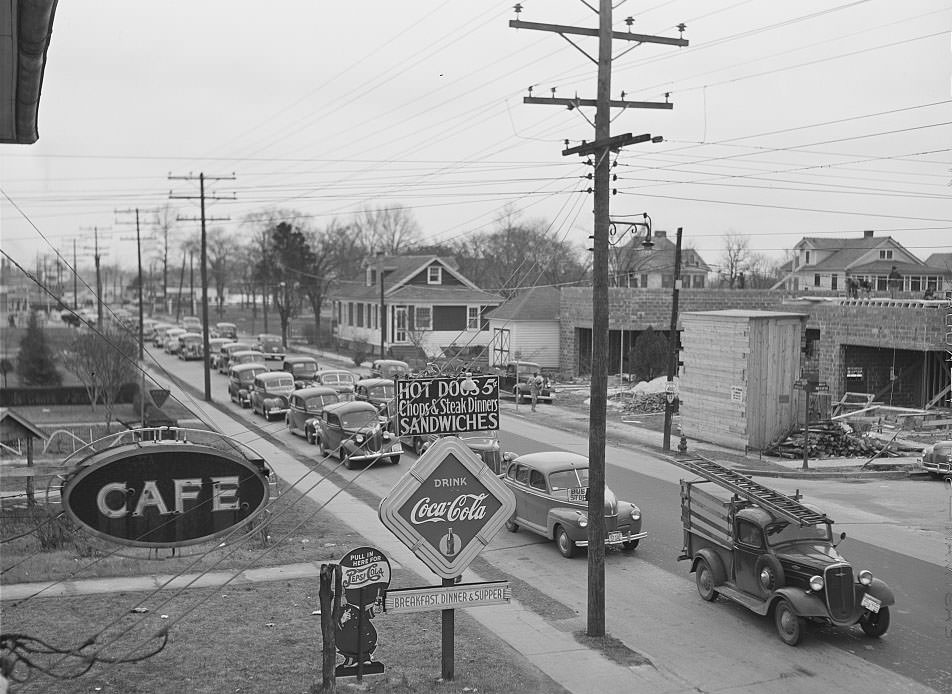
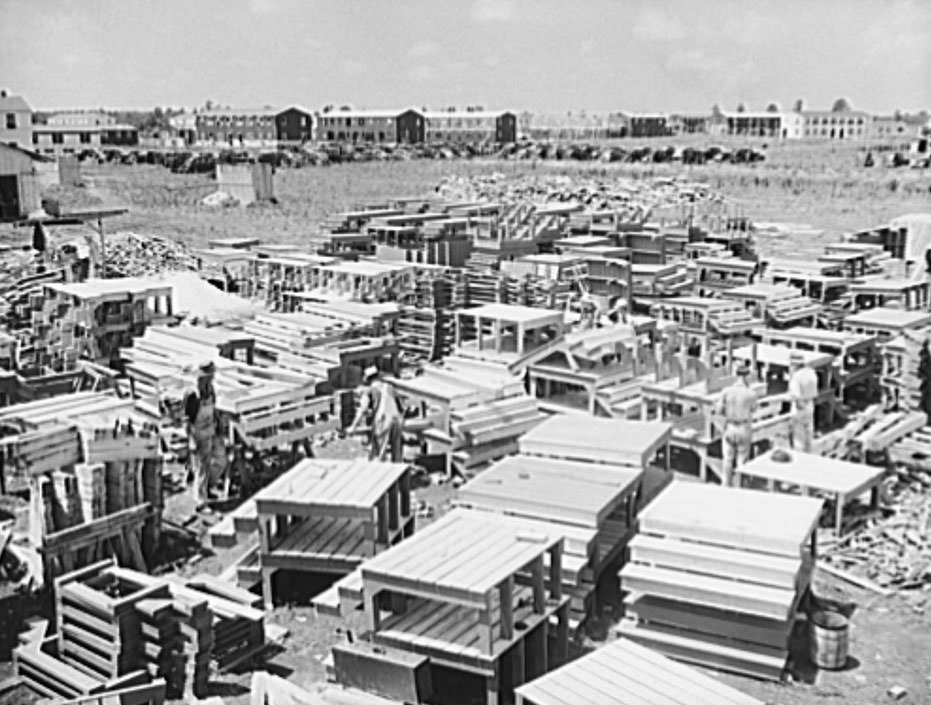
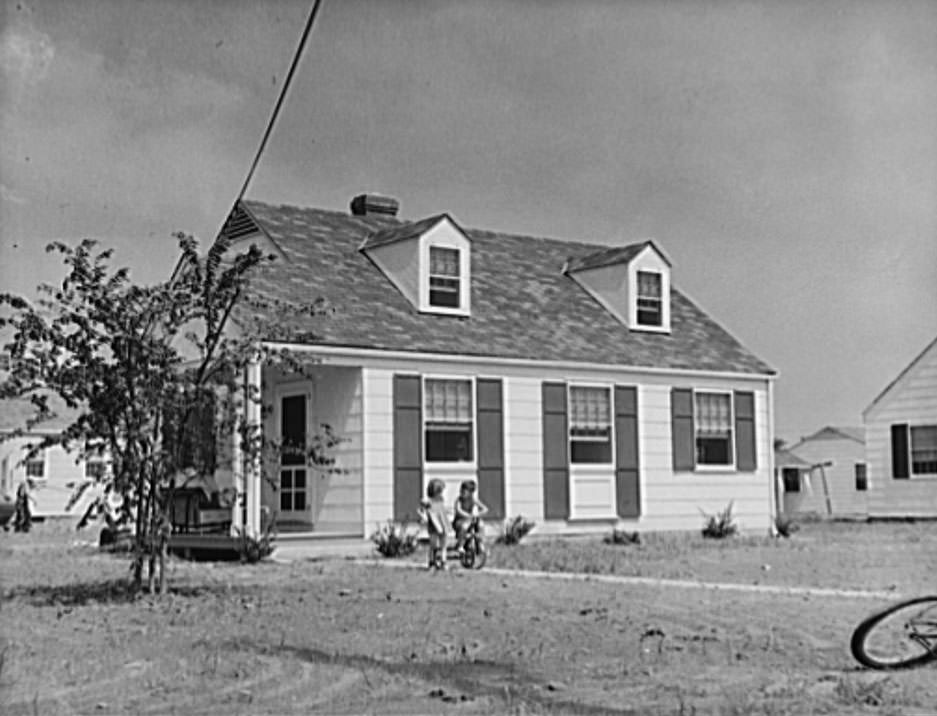
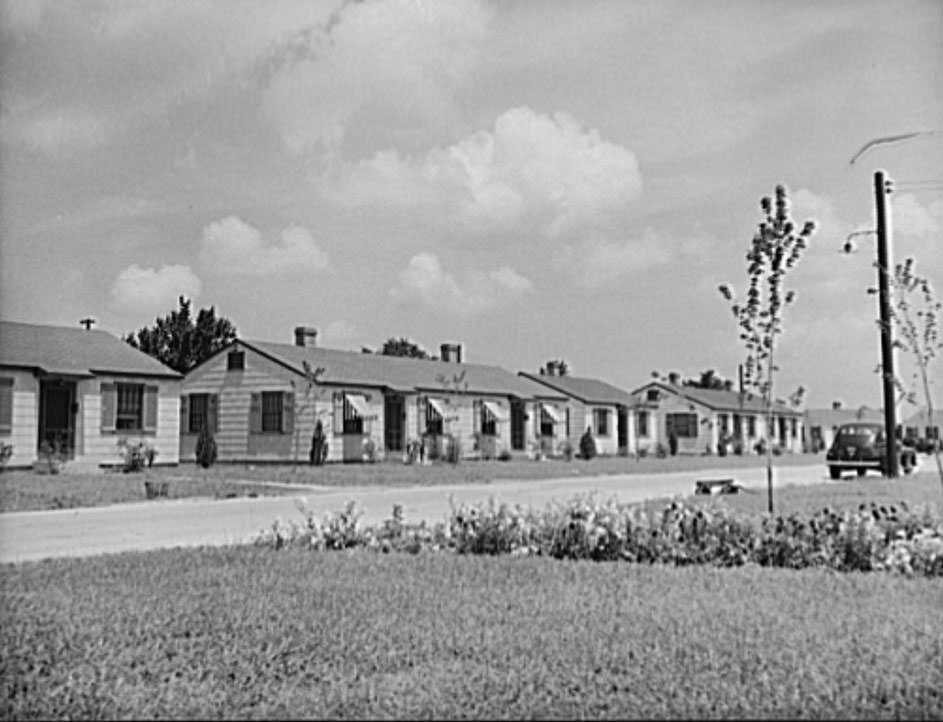
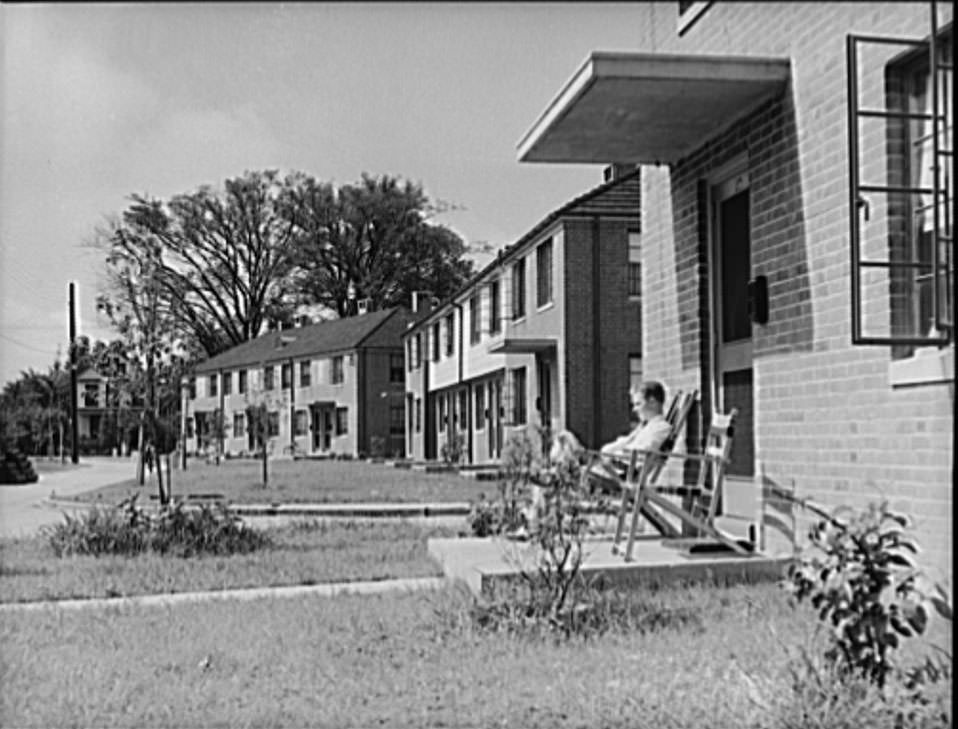
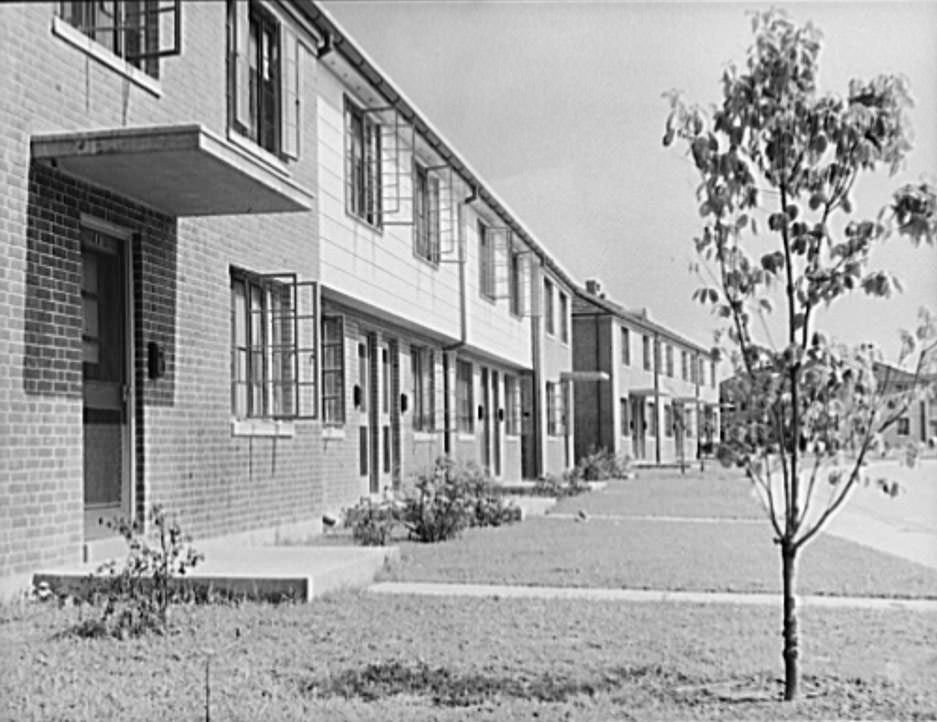
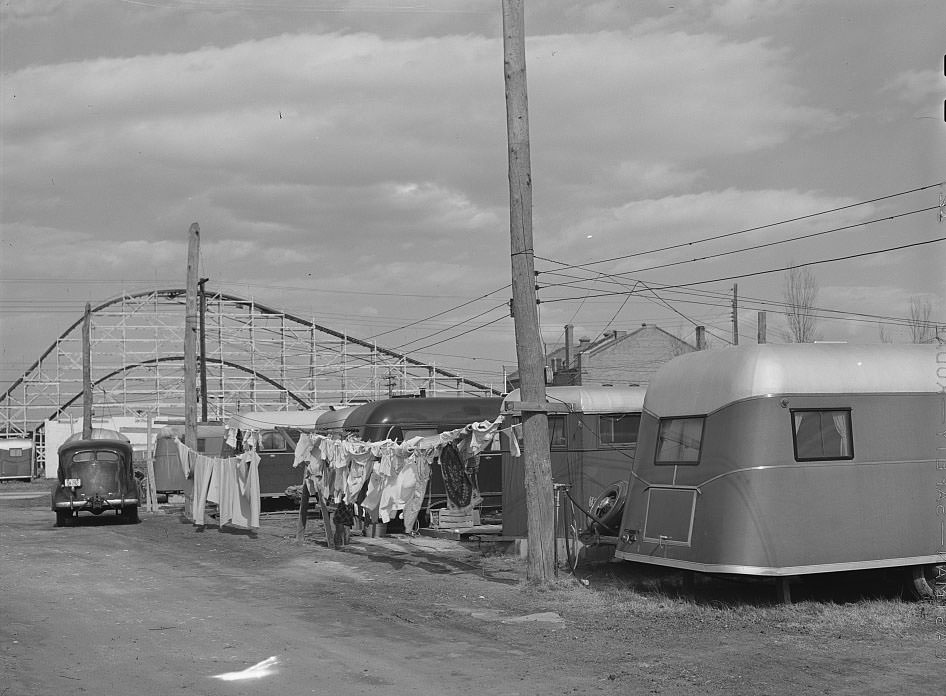
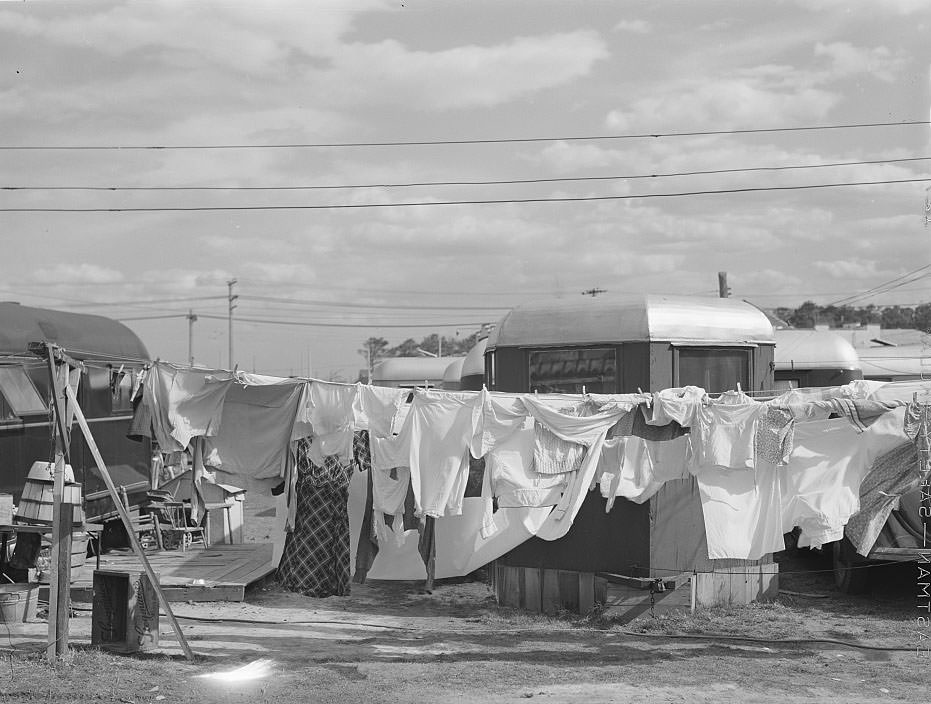
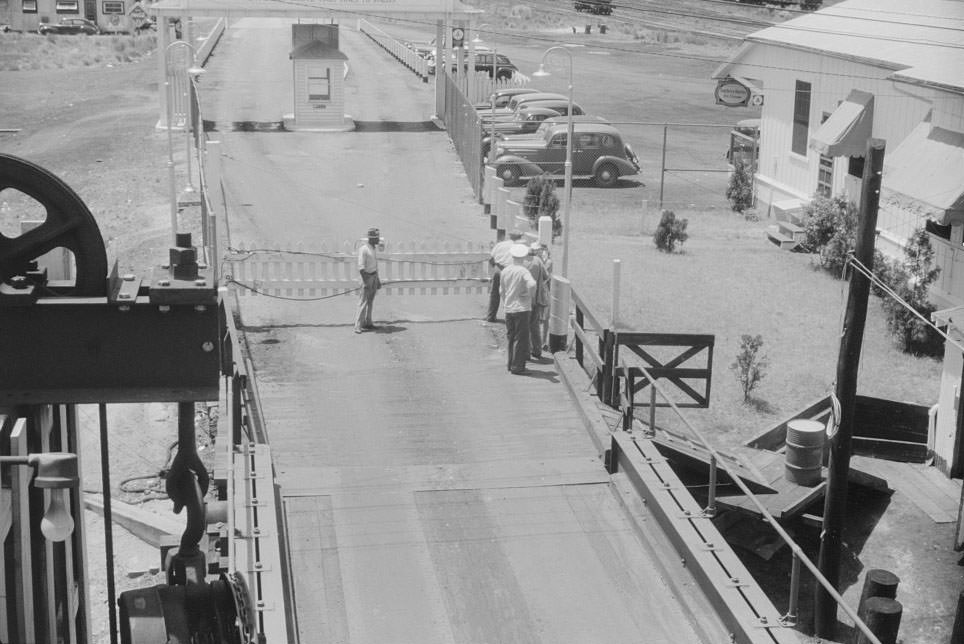
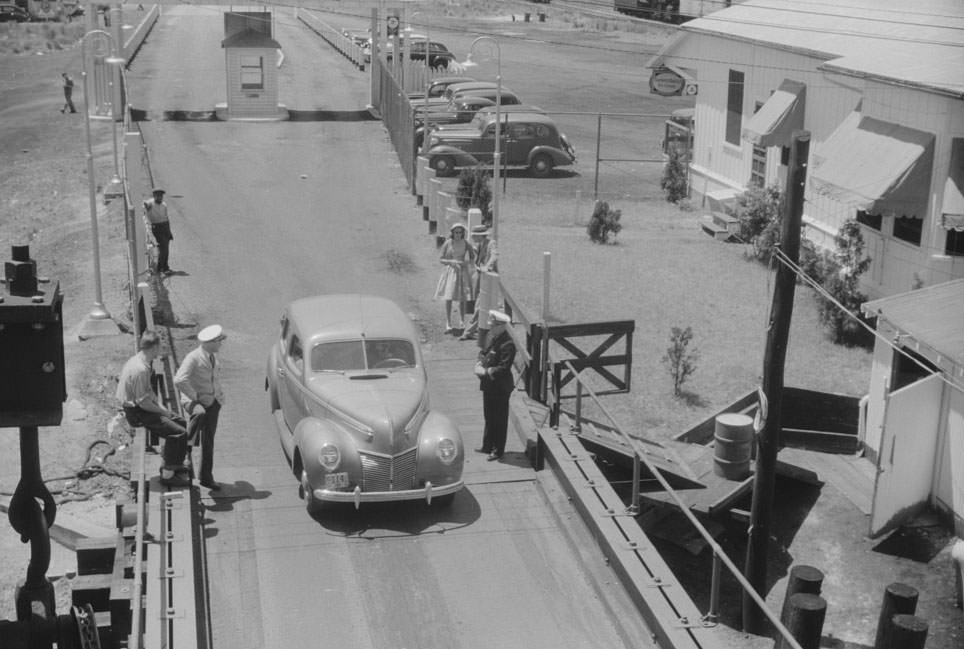
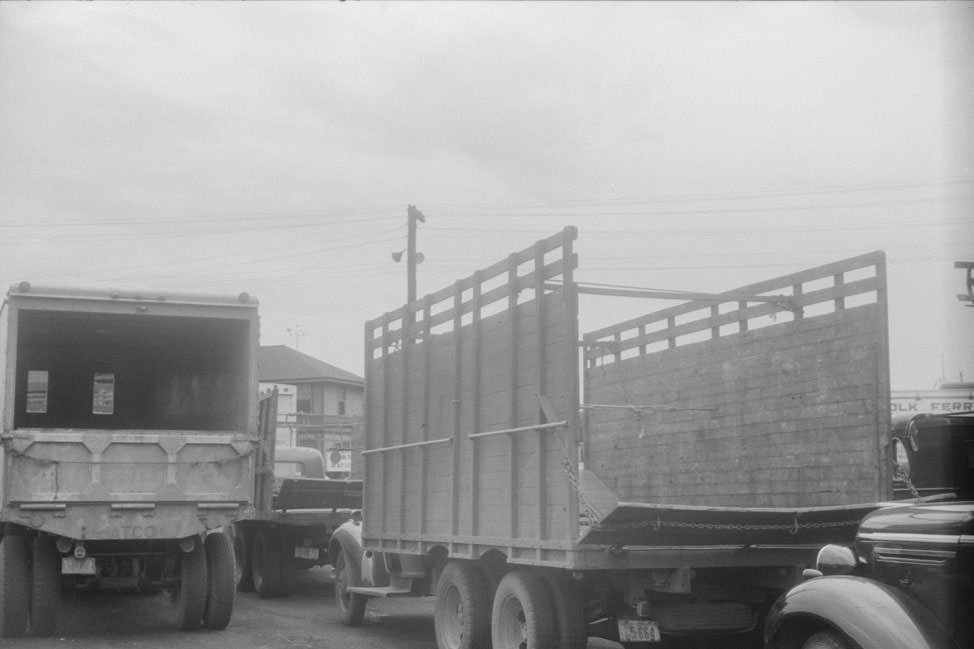
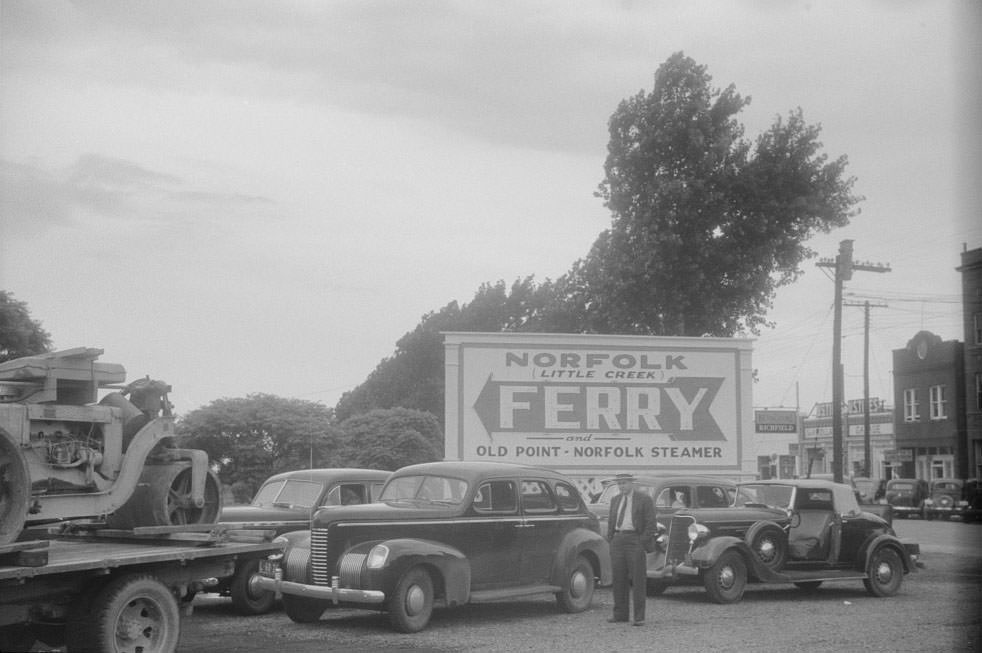
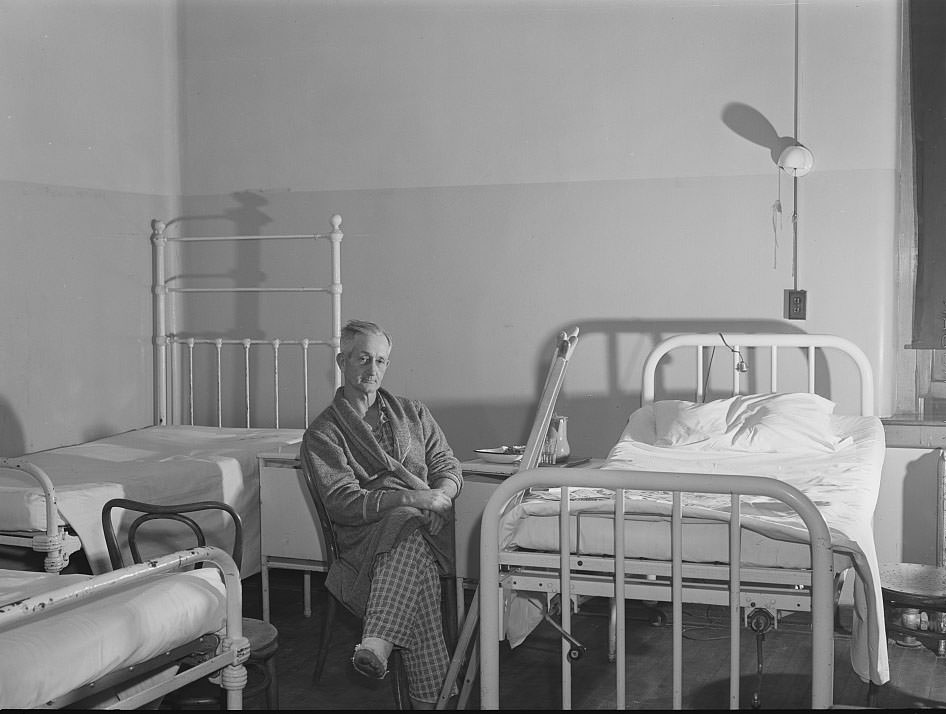
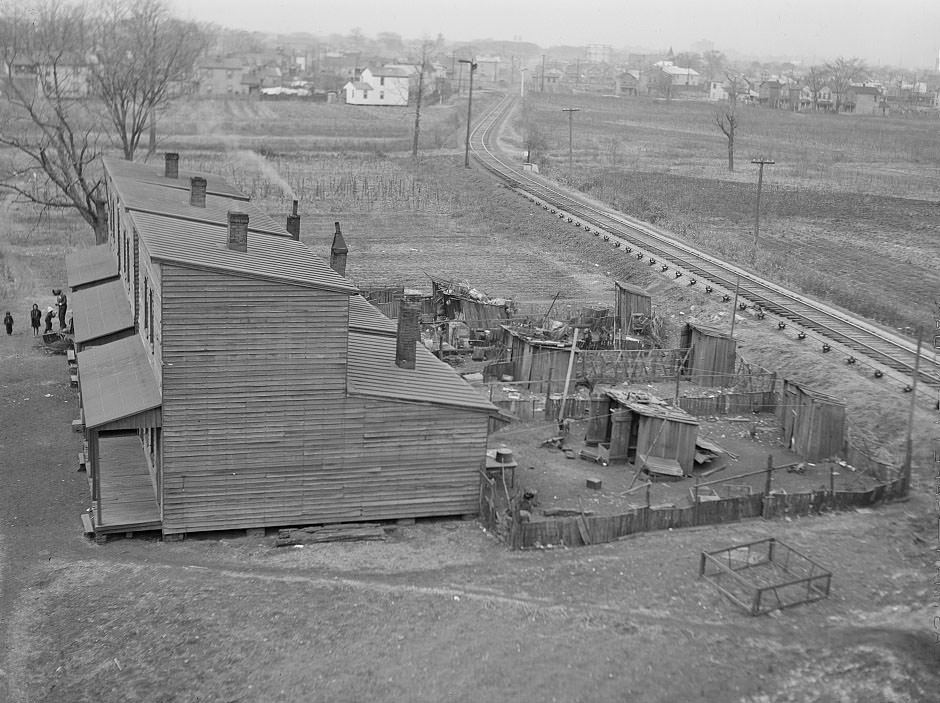
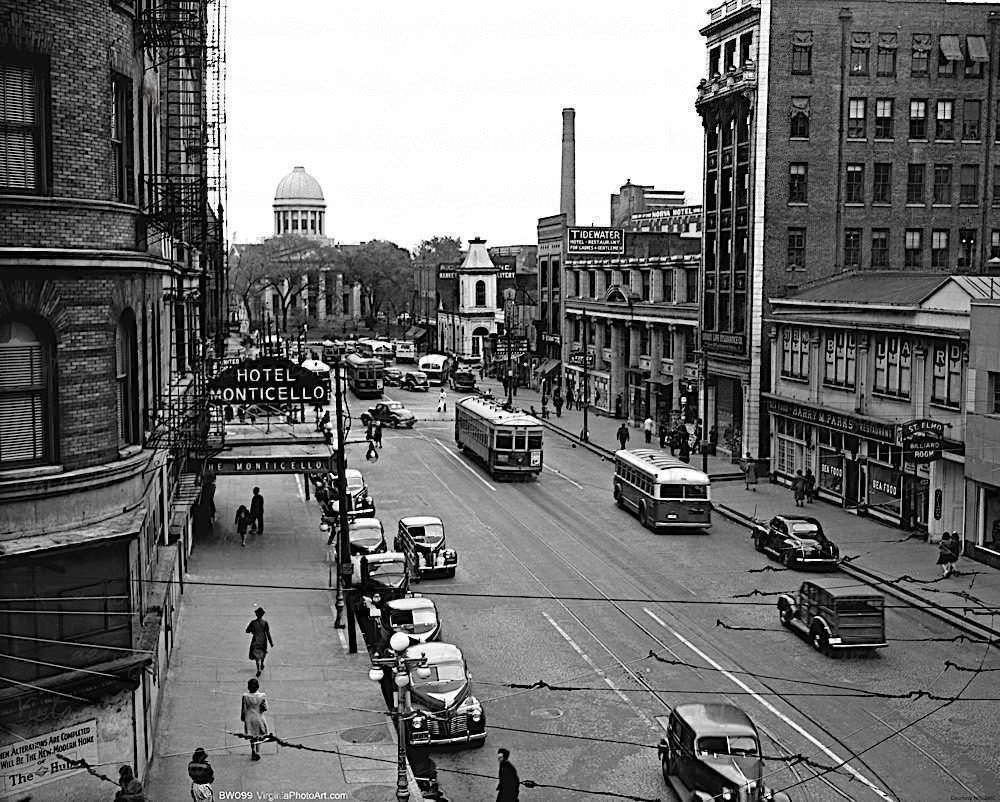

so it looks like the “four o clock traffic” photo set is over by the old ford plant. I would love to see more photos of suburban norfolk. does anyone know where the “slums” were at the time?
most of the slums in the photos were downtown, stretching north through East Ghent to about where Maury HS is. Then there were a number of housing projects to the east.
Desolate. Thanks for sharing.
I does seem pretty rough in these photos!
In recent decades, we have taken for granted the huge advances in quality of life that took place between 1945 and 1970. Growth and innovation in the postwar industrial base led to even more growth. Norfolk’s 4 o’clock traffic probably consists of the wealthiest residents, and many other cities looked similar. However, the backed-up sewers and power lines show that some things never change.
It’s true – and Norfolk, Portsmouth, Newport News, and Hampton experienced two world wars of military build up and decline. There were thousands of people hungry for shelter -any kind – to chase the shipyard and war buildup dollars. Additionally, we had a large influx of military personnel.
Many homes near Portsmouth’s yard were converted into boarding houses … and many of them were destroyed after WWII.
The photos also show the stark differences in segregated housing … little to no zoning and rental laws … slum lords making a lot of money from poor residents.
They aren’t all from the 1940s, like the ones with Scope in the background. It was built around 1970.
Those are fascinating.